Summer is here and the outdoors is calling. Where will you adventure to? Will you try to get out further off grid to avoid the crowds? Will you join up with large groups to camp together? Or will most of your trips be to overland events?
I’ve always enjoyed roadtrips and driving. Exploring new places and trying new things intrigued me more than going to the same place year after year. Gravitating towards the hobby of overlanding seems to be an appropriate match. For me, what I like is exploring new places every day, along with the balance between alone time and social time.
I find it interesting that the overlanding community is filled with so many solo travelers and also adventurers who like to travel in packs, such as myself. And we all seem to find joy in meeting up at big events to socialize and share stories. I’m finding as I get older, I appreciate the company of others, but just not too many other people. Heading out on overlanding trips with a small group of friends seems to be the perfect combination of alone time and socializing. While driving in my vehicle, I get my alone time to listen to what I want, whether it be music, a podcast or an audio book, or I can simply be alone with my thoughts. After we reach camp and get settled in, I can get in my people time and socialize around the campfire or while dinner is cooking. A perfect balance, in my opinion.

I envy families who travel together. Kids are confined to their own car and family rules when on the trail, but they are able to be free when they reach camp and can jump out to play with their friends. I’ve even seen some kids get to switch vehicles for a bit so they can ride with their friends. Oh, how I wish I had that opportunity as a kid.
As summer approaches, I’m longing for a longer trip where we cover lots of miles on dirt, stopping at a new campsite each night, and truly exploring new areas. I can’t help but reminisce about a trip through Nevada where I was with a group of 7 vehicles that covered over 900 miles on dirt. What an experience! For me, it’s more fun with the company of others to share in exploration. Just like the kids who get to swap vehicles to ride with their friends, adventure is more fun with buddies. Who’s with me?
Happy trails,
Kelly Nomura
Editor & Brand Manager
Editor’s Note: A version of this article appeared in TREAD July/August 2023.
Roger Brinkley, owner of Brinkley Manufacturing, has been building hot rods for customers for a long time. And every time he would start a hot rod for himself, someone would come along and buy it, usually before it was even finished.
His specialty, and one might add, his labor of love, is Henry’s Deuce, made famous by the likes of Ricky Nelson and the Beach Boys. “Well, yes, that is true. I really do like the ’32 Fords, but only after I have modified them,” Brinkley says. “Our version is much more fun than what came off the assembly line some 82 years ago.”
About 15 years ago, Brinkley bought the tooling and started producing the now-famous Zipper Roadster. That was followed by the Brinkley Phaeton, which was also met with great success. And over the last decade, Brinkley Manufacturing has built some of the finest Deuce roadsters around. So when we heard that Brinkley had actually finished a new ’32 Roadster Pickup for himself, we just had to visit the shop and have a look.
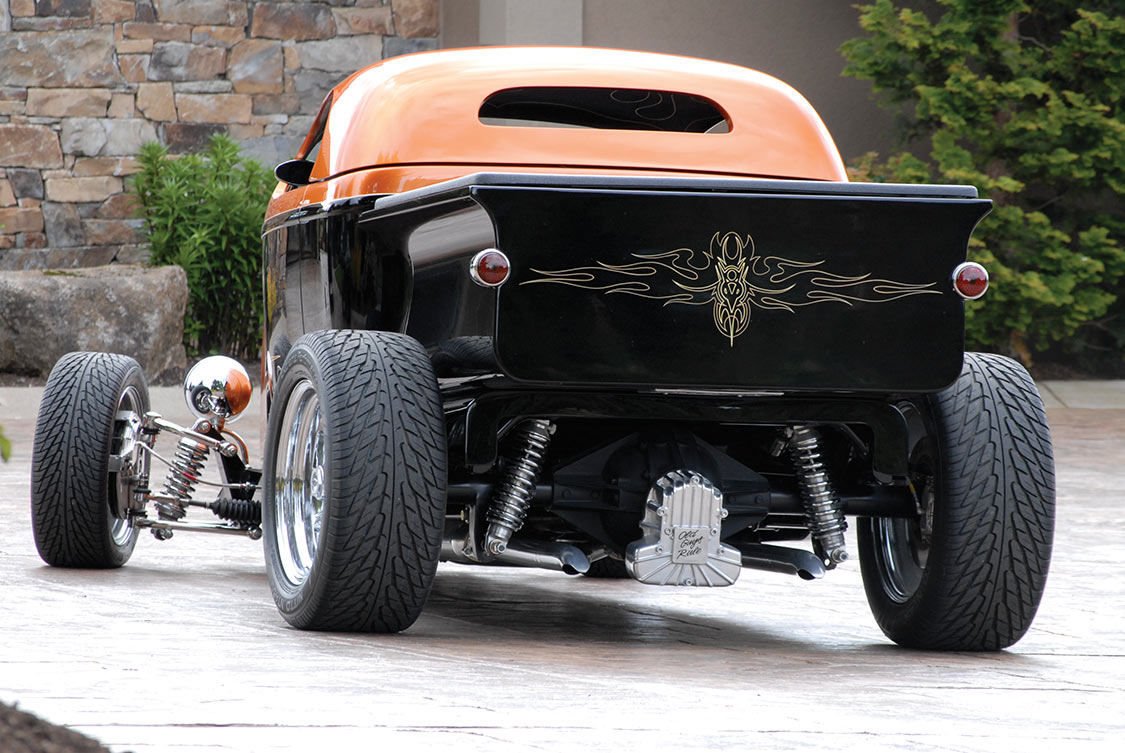
“I’ve been thinking about this car for years,” Brinkley says. “Like everything, it started out as a concept in my mind, then it became a drawing. From there, chalk lines on the concrete floor. Over a three-year period, we actually built the vehicle.”
This is his personal project and the first roadster pickup ever produced in his shop. The project started with a high-quality 106-inch, 1932 Ford reproduction frame that was built in Brinkley’s shop. The frame has been boxed, with custom crossmembers, narrowed in the front and bobbed front and rear. It also has been shortened to accommodate the custom-built pickup box.
The front end features Heidts Superide independent front suspension. This comes with upper and lower stainless-steel control arms, Alden aluminum coilover shock absorbers, and rack and pinion steering. Next up on the front were Wilwood disc brakes with aluminum hubs.
The rear suspension is a 4-bar triangulated setup, with Alden coilover shocks supplied by Heidts. One of the reasons that the triangulated 4-link suspension was used is because it does not require a Panhard rod. Also, the bars are fully adjustable 11⁄4-inch by .156 tube with 3⁄4-inch stainless adjusters and urethane bushings. The suspension kit also came with the angled and straight chassis brackets, tabs and hardware. “The rear end is a Winters Grand National quick change,” Brinkley says. “I have a box full of different ratios, depending if you want to go cruising or run at the Saturday night drag races.” The center section of the quick change rear end was ceramic coated by Finish Line Coatings. The narrowed axles are from Dutchman and the rear brakes are Wilwood discs. Wheels and tires are by Cragar and Nitto. The car runs 195/50/ R15 tires on 15” x 8” front wheels and 275/50/R17 tires on 17” x 10” wheels in the back.
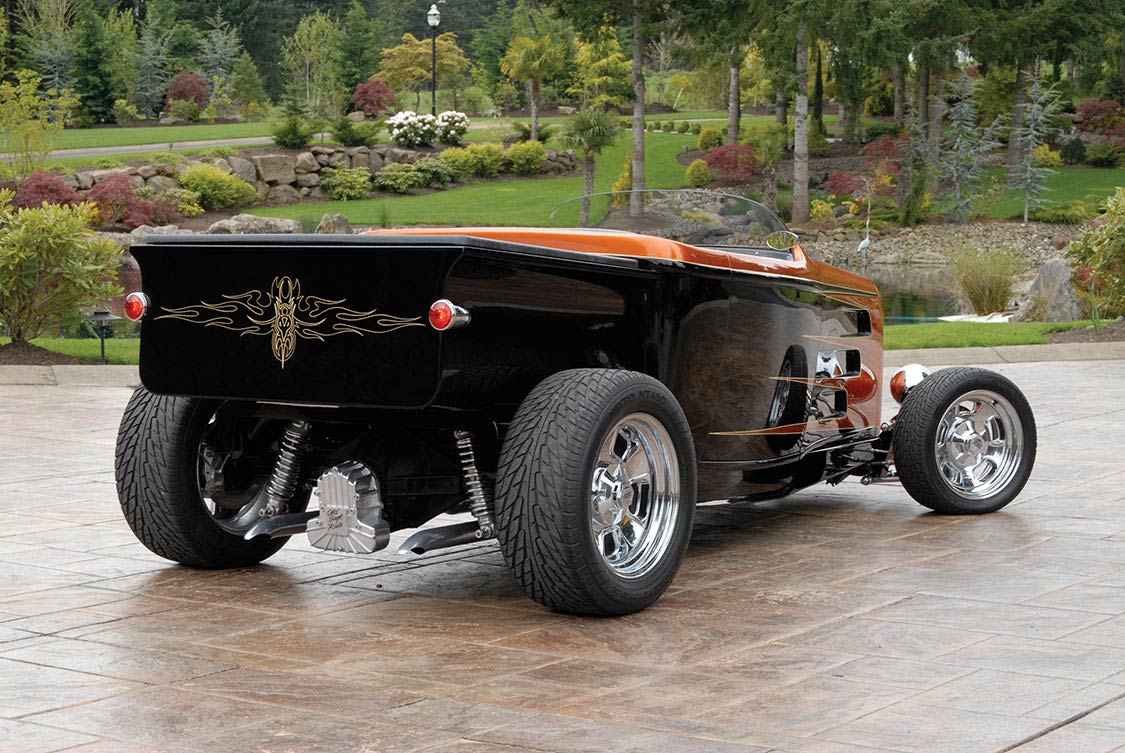
The body design is well thought out, and the transition from roadster body to pickup bed is smooth and looks great. Building this rod actually involved cutting off the tail section of a 1932 roadster and grafting on the tail section of a Phaeton, minus the top of course. It incorporates the curved windshield, no-cowl design that has become Brinkley’s trademark. This trick no-cowl design and custom hood replaces the stock cowl and windshield frame to produce a smooth transition between the body and the glass.
Needless to say, the body has been modified extensively. In fact, the grille itself is the only original ’32 Ford part on the car. The grille shell has been sectioned and thinned out. The headlights are from SoCal and were made for a ’32 Ford Highboy. The hood has been stretched and the raising point features a 2-point alligator hinge. This was required so the hood would fit around the custom windshield.
The engine side panels have been stretched back to the doors. The original cowl has been removed to make room for the new custom curved windshield that goes partway down the front of the fire-wall for additional support and strength. The doors are 10 inches longer than stock, which brings them forward to the hood, eliminating the original vertical line, making it easier to get in and out of the vehicle. With the vertical line gone, the entire body has a sleek look to it, making the whole package appear longer than it actually is.
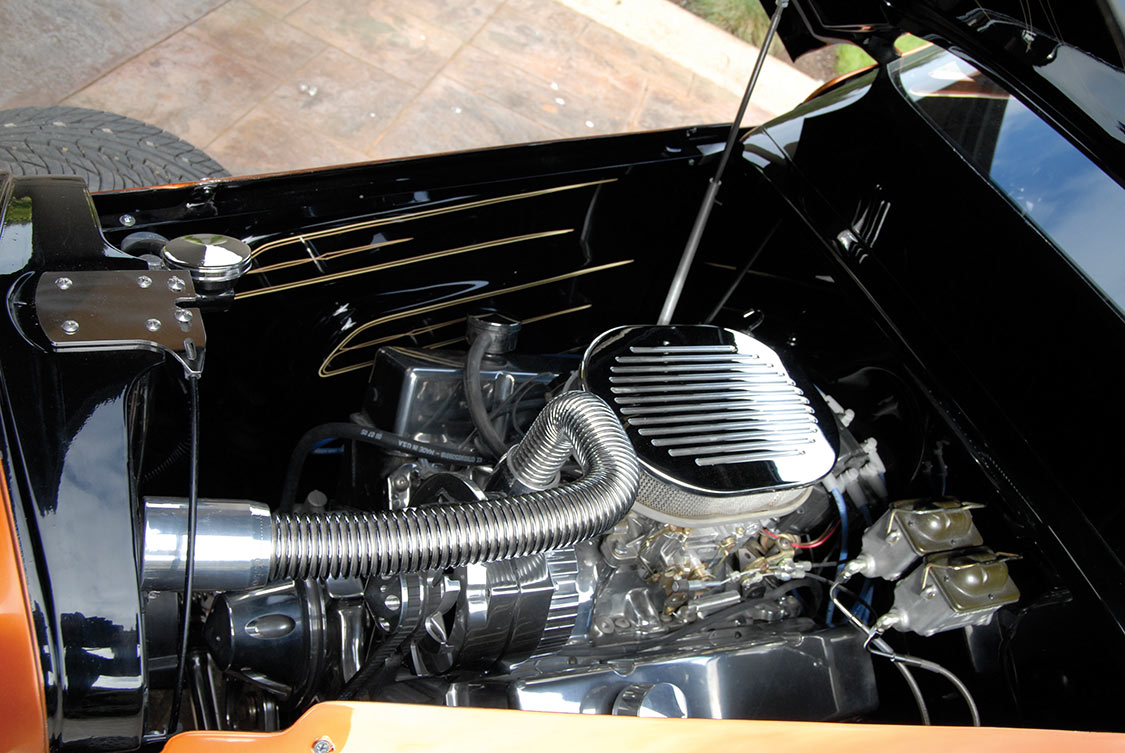
The liftoff top is all hand-formed and blends well with the overall design of the roadster pickup. It even has flames painted on the underside of the top as well as the hood. The cover for the bed is fiberglass covered with bedliner. The custom 20 gallon fuel tank is located in the bed. The chrome brake lights are 1939 Chevrolet, frenched into the sides of the bed. Underneath the bed are two rows of LED lights. The interior compartment is several inches longer than stock to accommodate the longer doors. This results in plenty of interior room for a comfortable ride. The luxurious interior is black tuck and roll, highlighted by a banjo steering wheel handcrafted by Roger Adams of The Wheel Shop. The interior door panels are molded into the doors, so they don’t require any upholstery.
Another detail worth mentioning is the sculpted and lowered seating platform. The whole thing is laid-back so you can drive down the freeway at speed and not lose your cap. (And it looks cool!) Also, this uniquely designed seat offers full back support for a comfortable ride.
It’s hard to believe this body started out as a 1932 roadster, and over a period of three years, it was modified into a one-of-a-kind hot-rod pickup with a removable hardtop. The bed was hand-formed and designed to follow the lines of the body.
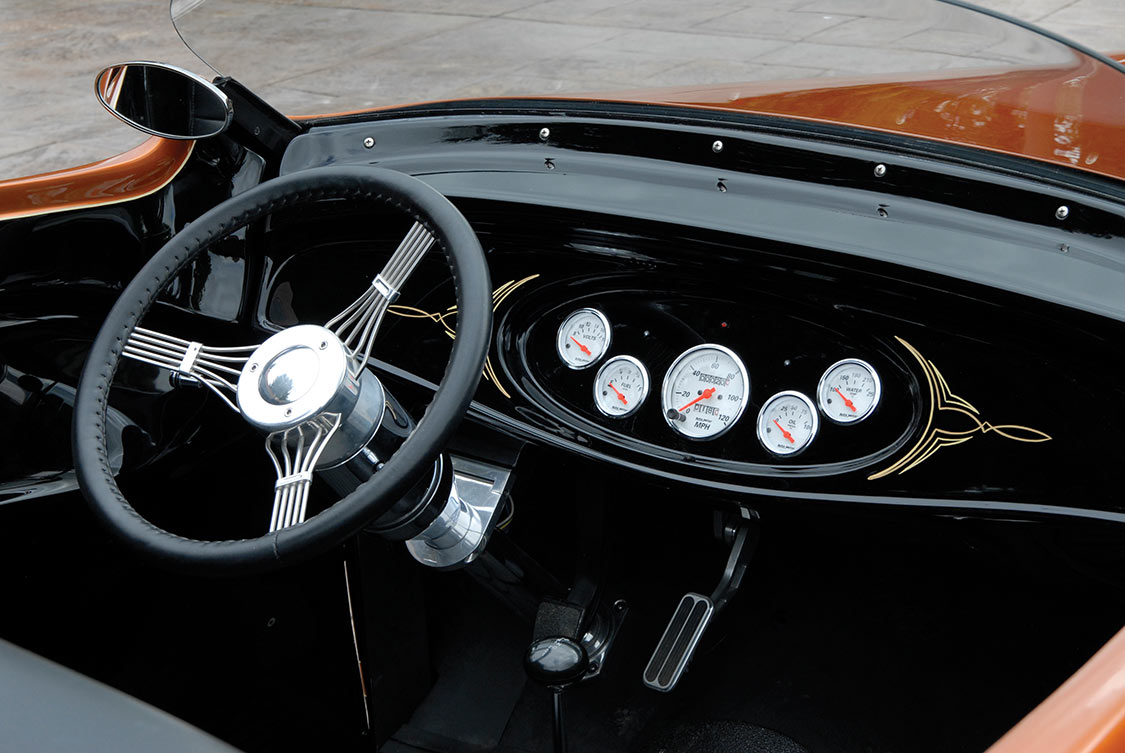
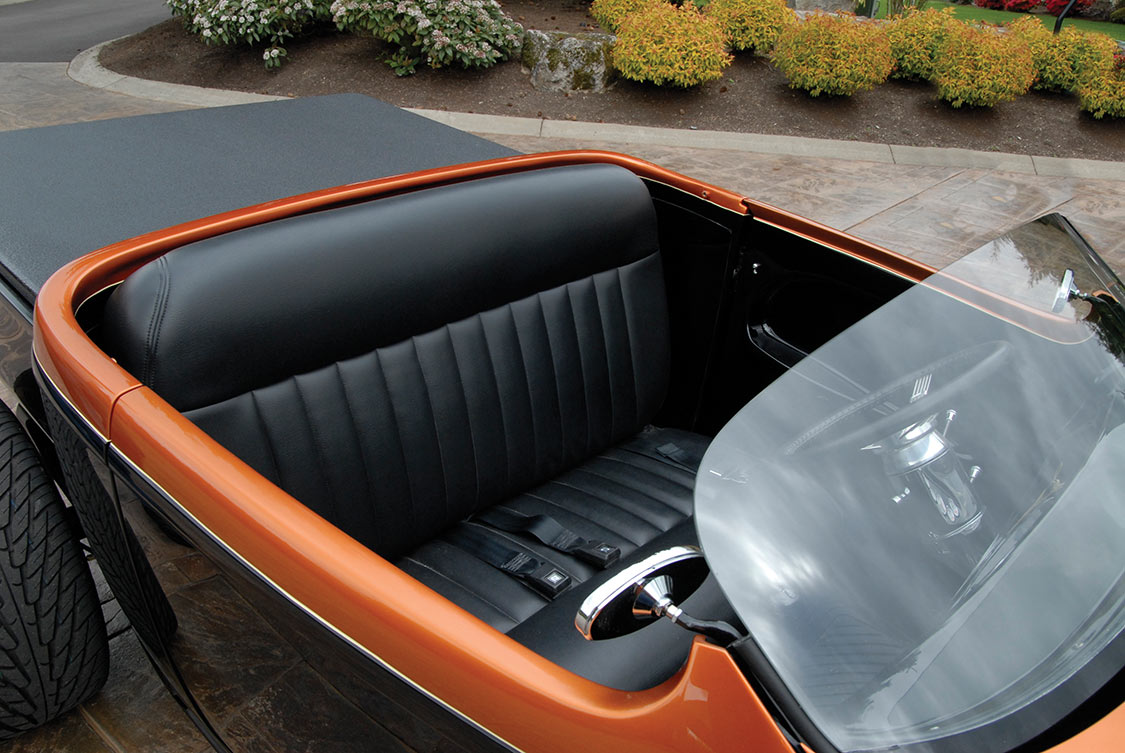
The design and quality of the workmanship are readily visible when you look at the basic parts. The fiberglass is excellent. The bodies are steel-reinforced, starting with the full cowl hoop and extending through the doors and completely around the rear of the cockpit. Even before being bolted to the custom frame, this is a solid unit. Safety has always been an issue with Brinkley, so the doors have bear claw latches, and the lap and shoulder belt anchors are welded into the frame.
“Originally, this car was designed to have a full set of fenders, and they were installed,” Brinkley says. “The way I designed this,” he says, “it’s possible to go from a sleek full-fendered roadster pickup to a simple fender-less lakes modified. But after looking at it, I decided to go without the fenders, which is why the car does not have oversized rear tires.”
The paint, scallops and pinstriping were all done in-house. The paint is PPG Creamsicle candy orange with metallic diamond dust. The engine is a warmed over 383-cubic inch small-block Chevrolet with roller rockers, Competition Specialties roller cam and a 4-bbl. Edelbrock Performer intake that has been chromed. The carburetor is an Edelbrock 650 cfm. Engine brackets are by Billet Specialties. The water pump is chromed with polished aluminum pulleys. The transmission is a GM turbo 350 automatic.
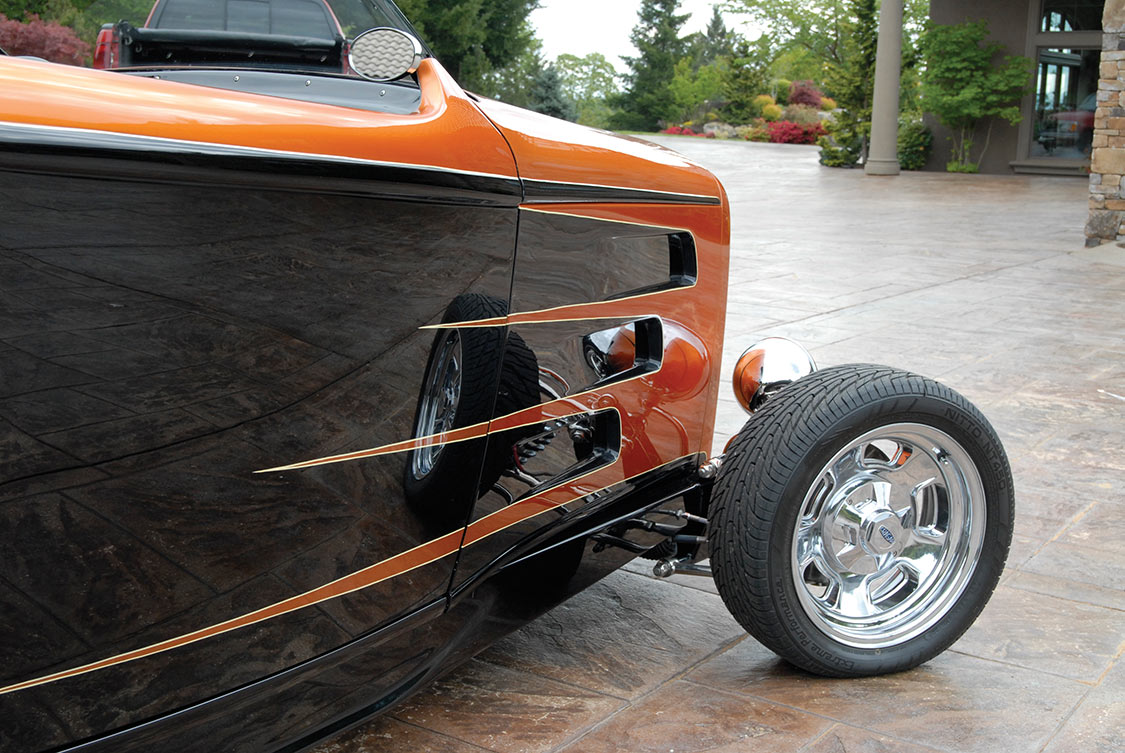
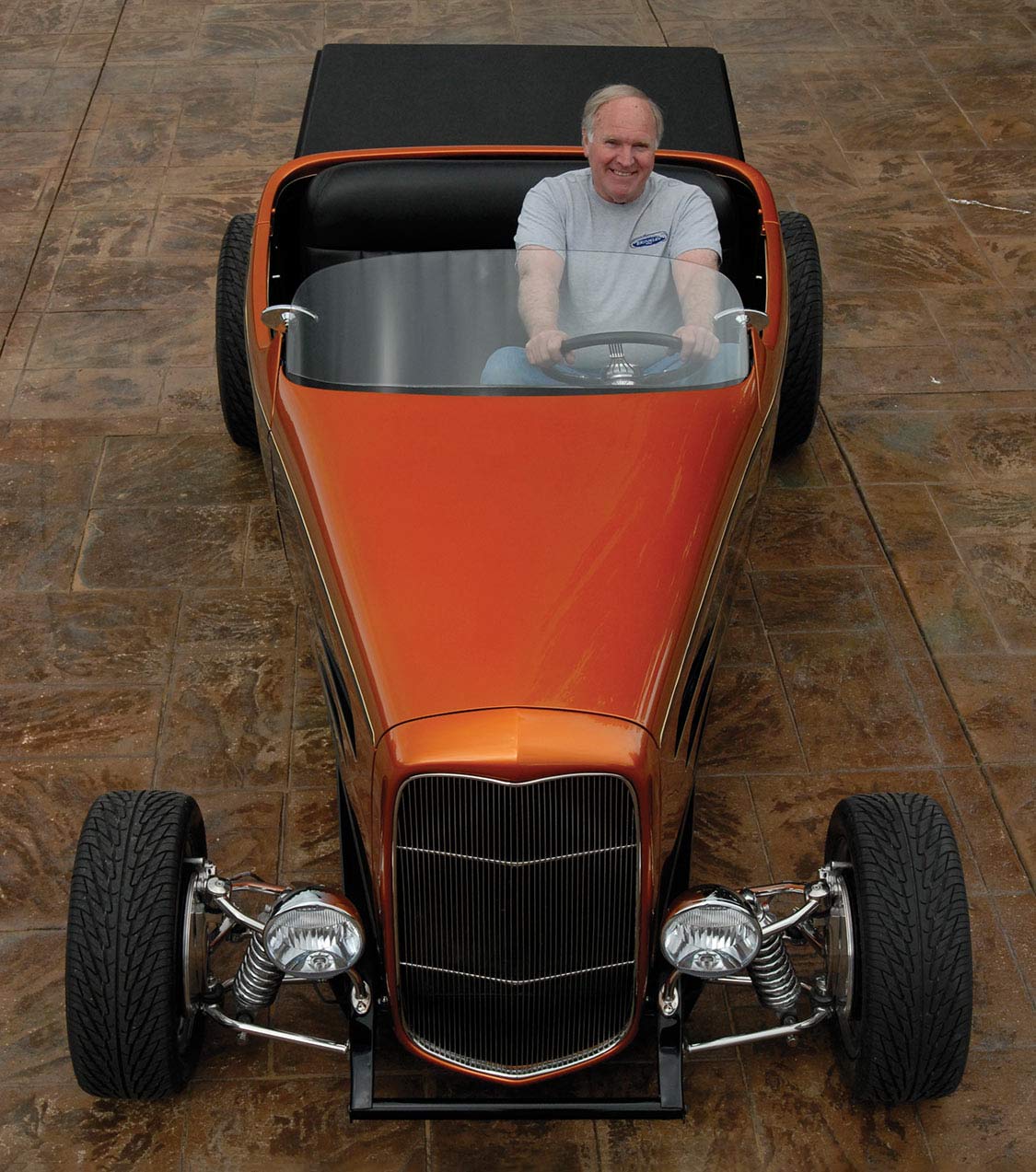
The radiator is custom-made aluminum and features a chromed overflow tube. Brinkley also fitted an electric fan for additional cooling. The exhaust headers are Sanderson headers, with Flowmaster mufflers and a crossover pipe and turned down exhaust tips, as was common in the 1960s. The entire exhaust system has been coated with Cer- machrome. This is a thermal barrier coating that is applied to keep the pipes cooler, provide better flow, and prevent rust and corrosion.
This Roadster Pickup has not been taken on the show circuit yet, so it has yet to win awards. But there’s little doubt that this work of art will receive the recognition it deserves. Clearly Brinkley has put a lot of thought, time and years of experience into developing this cool variation on the clas- sic Deuce theme, and it shows. If early interest is any indicator, this Roadster Pickup is destined to join the legendary ranks of the Zipper Roadster and the Brinkley Phaeton.
My family, The Leggetts, has been making its way from Quebec, Canada across the American countryside in Alice, a stock ’50 Chevy. Along the way we’ve visited all of the back road sights, Route 66 and random shops, taking in all that’s quirky and interesting about the U.S. The trip was a monumental undertaking that stretched a total of 9,500 miles, and the highlight was making it to the Bonneville Salt Flats in Utah for Speed Week.
Many weeks of planning went into plotting the maps, booking an RV for Speed Week and getting press credentials lined up for the various events we planned to attend, but as we would soon discover, sometimes even the best laid plans don’t pan out.
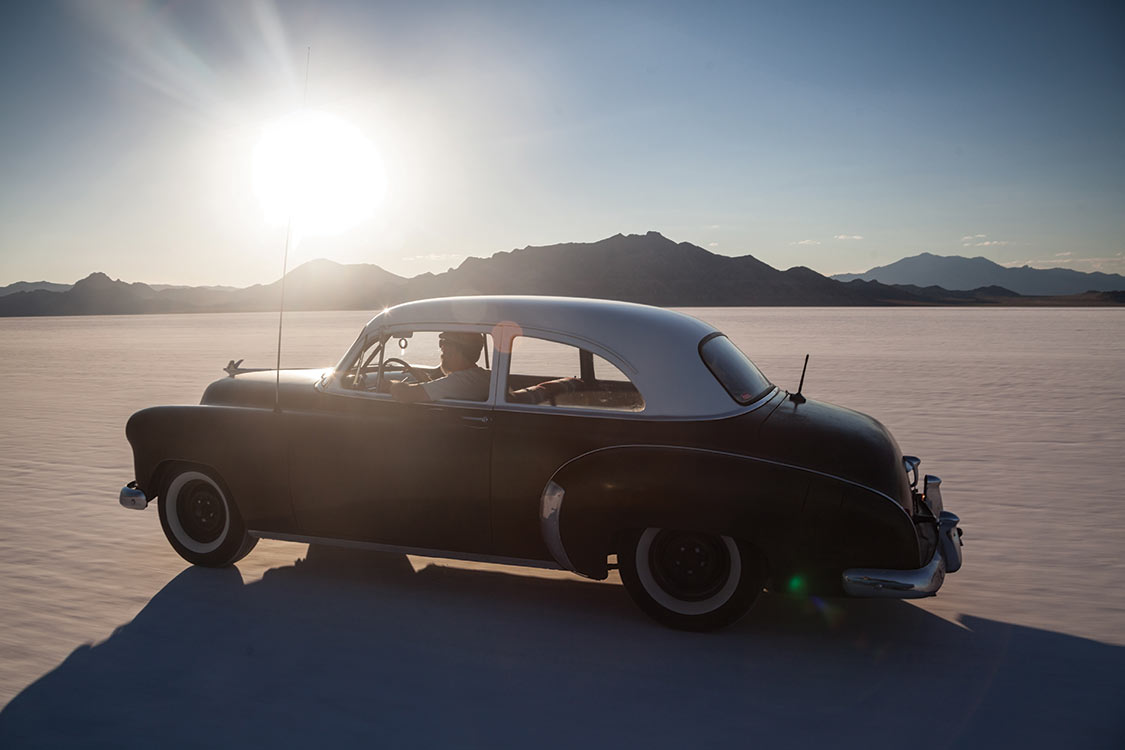
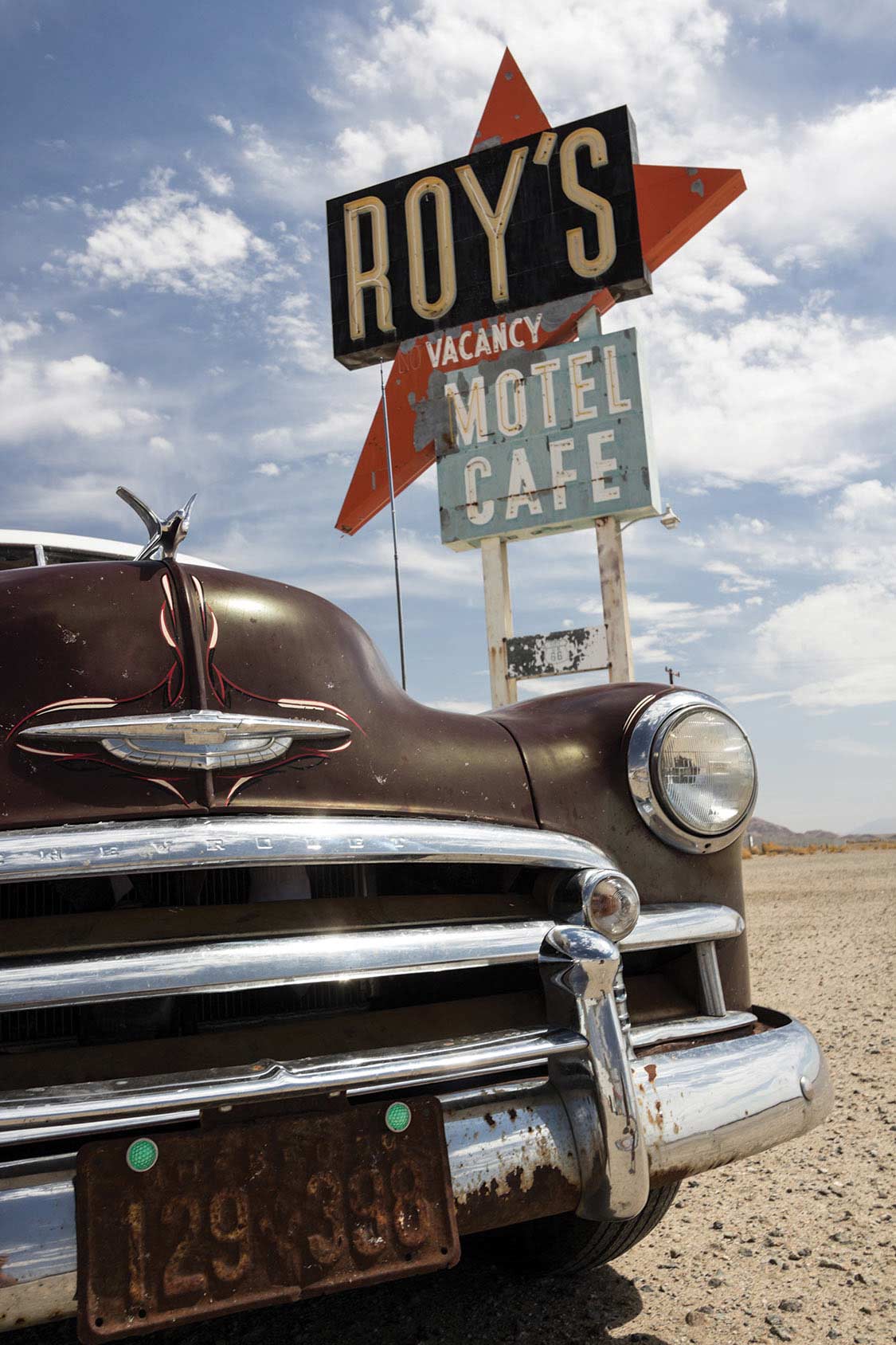
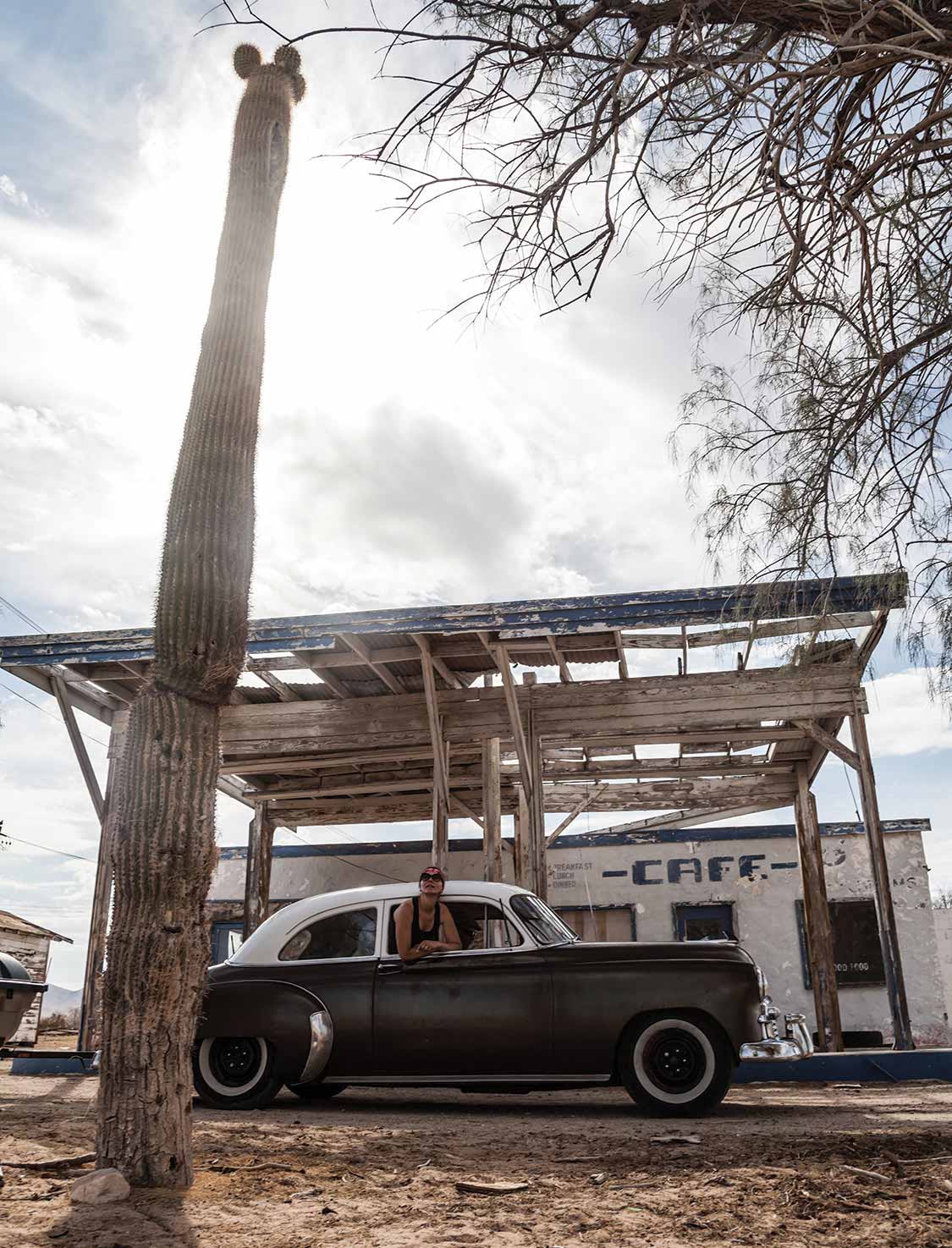
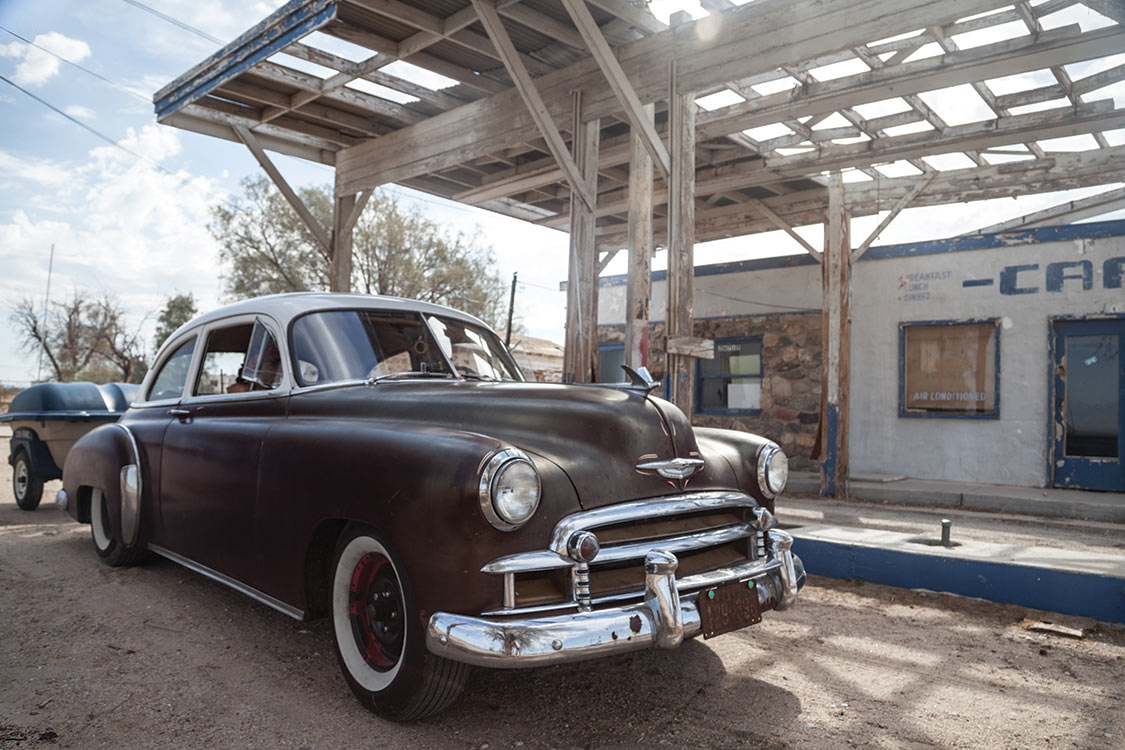
During our last leg to Bonneville from Las Vegas to the town of Ely, Nevada more and more salt-bound vehicles loomed out of the summer haze in Alice’s rearview mirror along State Highway 318. We traveled through long desert valleys to small towns and dude ranches boasting luxurious cabins, in between were miles and miles of beautiful, desolate desert.
Our first stop was in Ely, home of the Nevada Northern Railway Museum, only 120 miles south of our destination near Wendover, Utah. The town was hosting the White Pine Rodders Car Show. Many local cars were displayed in the city park, as well as some of the vehicles making their way north for Speed Week.
We got ready to head out of Ely, but unfortunately for us, Alice’s clutch condition had been worsening for days, and we sadly made the decision to leave her at a local garage for a couple of days. We had commitments to keep on the salt, but our hearts were heavy as we drove away; so close, yet so far.
We traveled through long desert valleys to small towns and dude ranches boasting luxurious cabins, in between were miles and miles of beautiful, desolate desert.
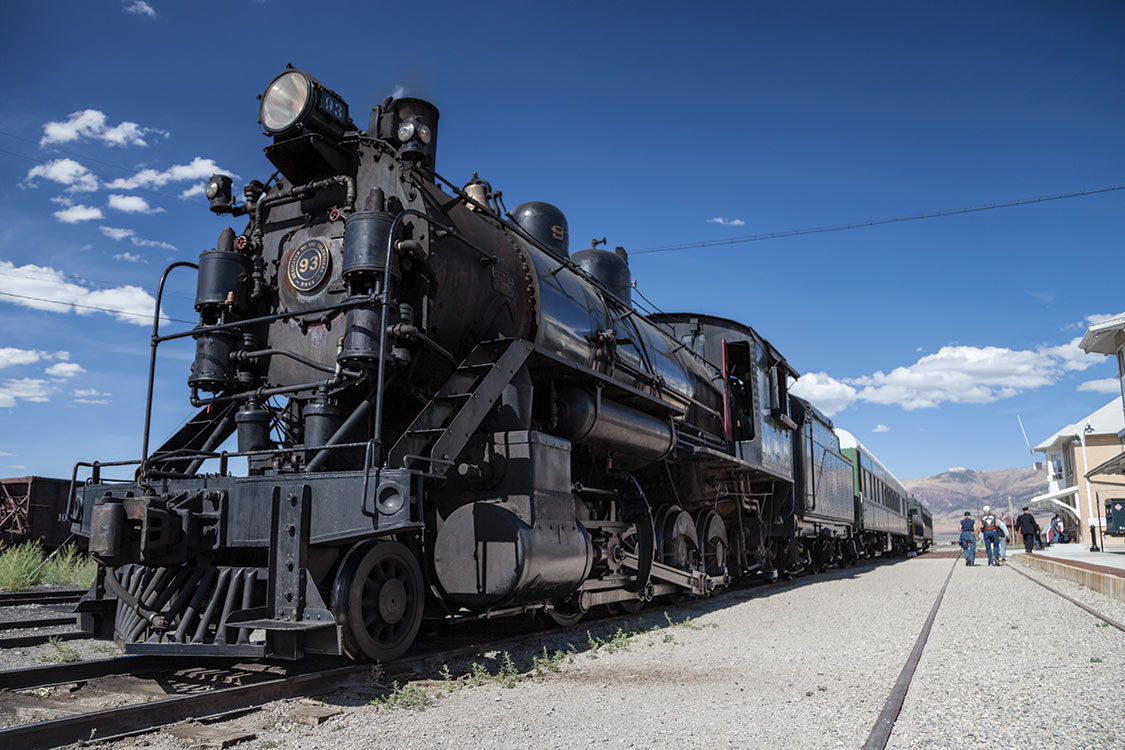
We arrived at Bonneville and set up our base in the rental RV on Tarantula Flats, the place at the bend in the road where many fans pitch their tents and make camp for the weeklong event. Every morning, we rose early and drove our mobile basecamp down the road, past the starting lines, to the pits. We were surrounded by a crazy, mechanical world of motorcycles, hot rods, jet cars and belly tankers. Race crews buzzed around cockpits under sun shelters, hurriedly preparing for their next chance at the starting line. There was salt and chrome as far as the eye could see, and an undeniable buzz of energy filled everyone with excitement. The salt glistened in the sun, and we missed Alice dearly, but we got lucky and the part she needed was shipped promptly to Ely.
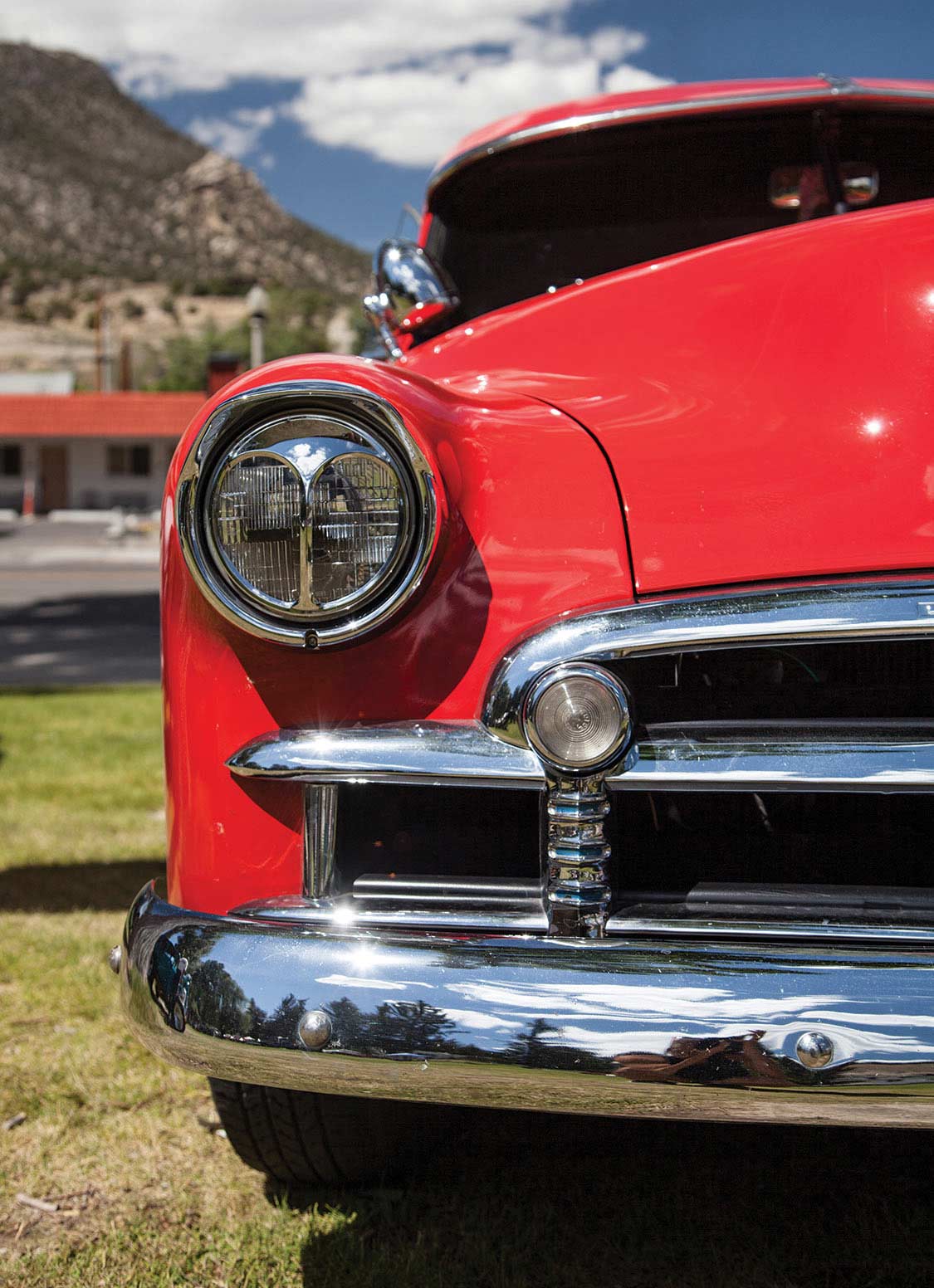
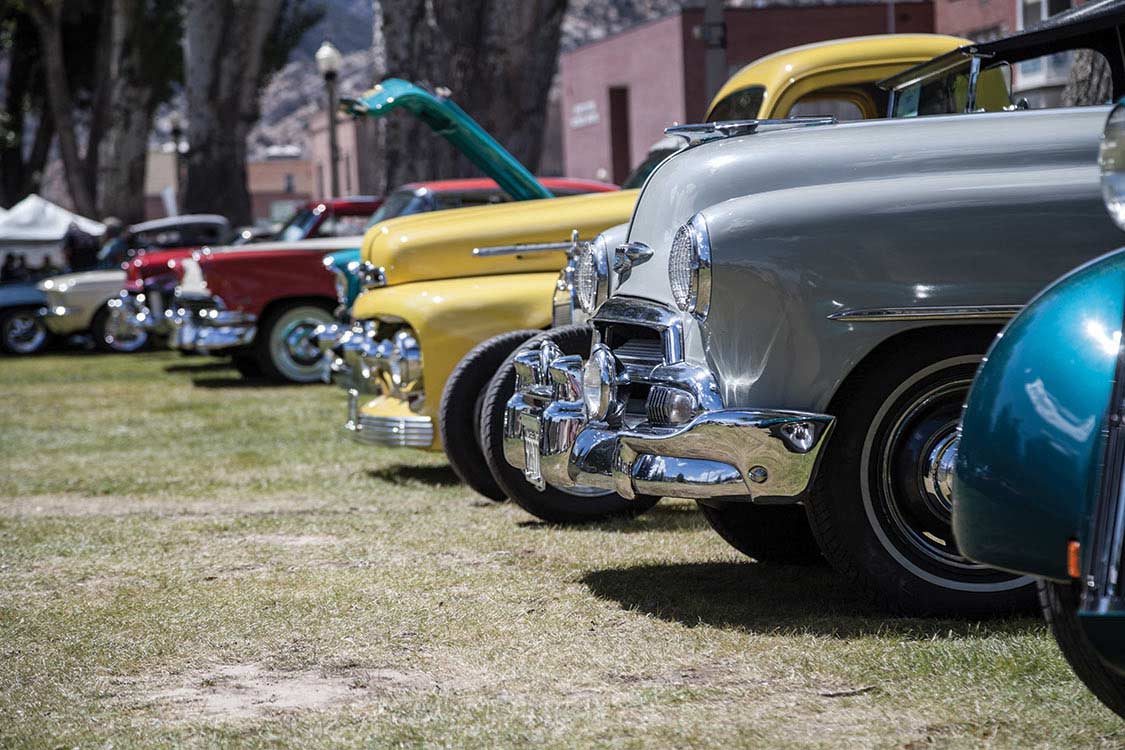
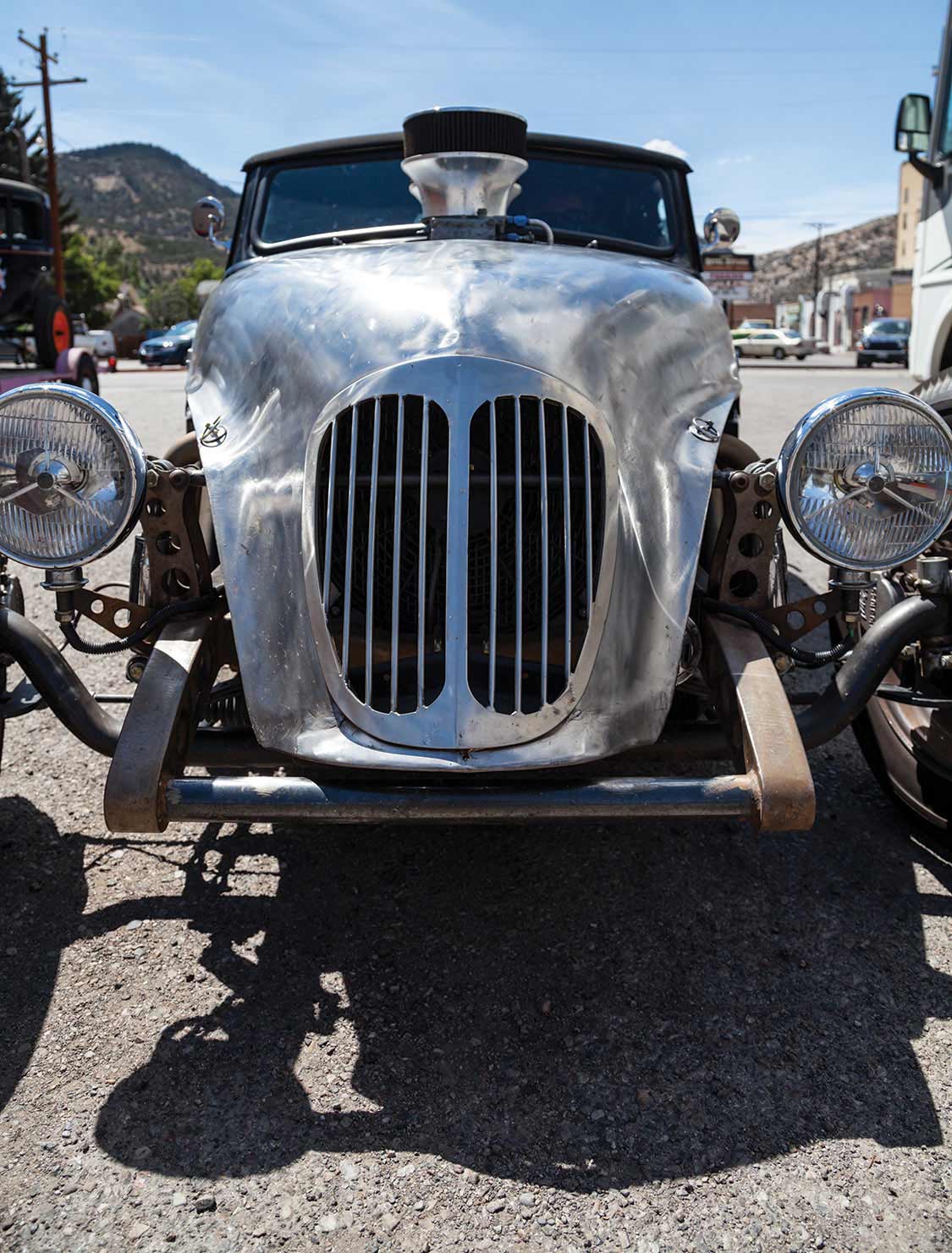
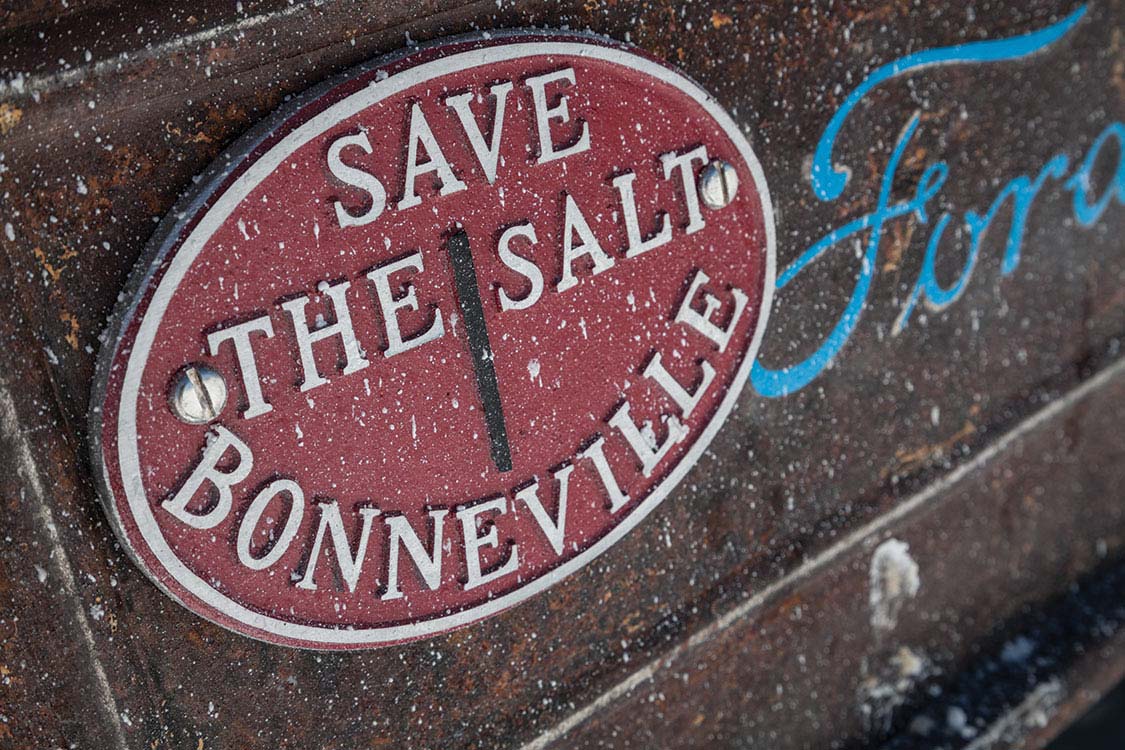
A few days later, Alice returned for her big moment. When she finally arrived, we were thrilled beyond words to drive her across such hallowed ground. Just a few years earlier, owning Alice, travelling such a long distance and attending Bonneville was only a dream. Cruising along in the bright sunlight felt amazing.
The faulty clutch was just one of the challenges during the 9,5000-mile trip, another was the lack of a functional gas gauge. I acquired the habit of accounting for gallons according to miles travelled, which made the distance more of a reality as the weeks passed. The experience was eerily reminiscent of the days when people drove to vacation destinations and wrote down every detail of their trip. Alice was, in that sense, a time capsule, and my mother, a pro at dressing in retro fashions, also contributed to the Twilight Zone-like haze that blanketed the trip.
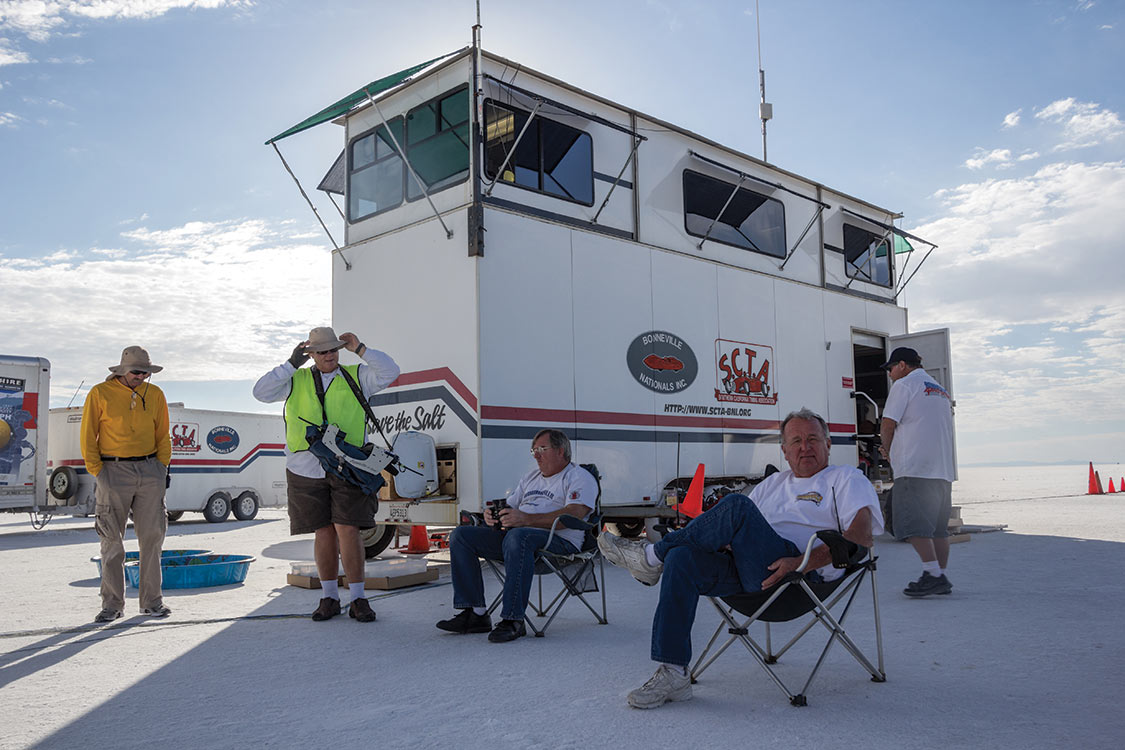
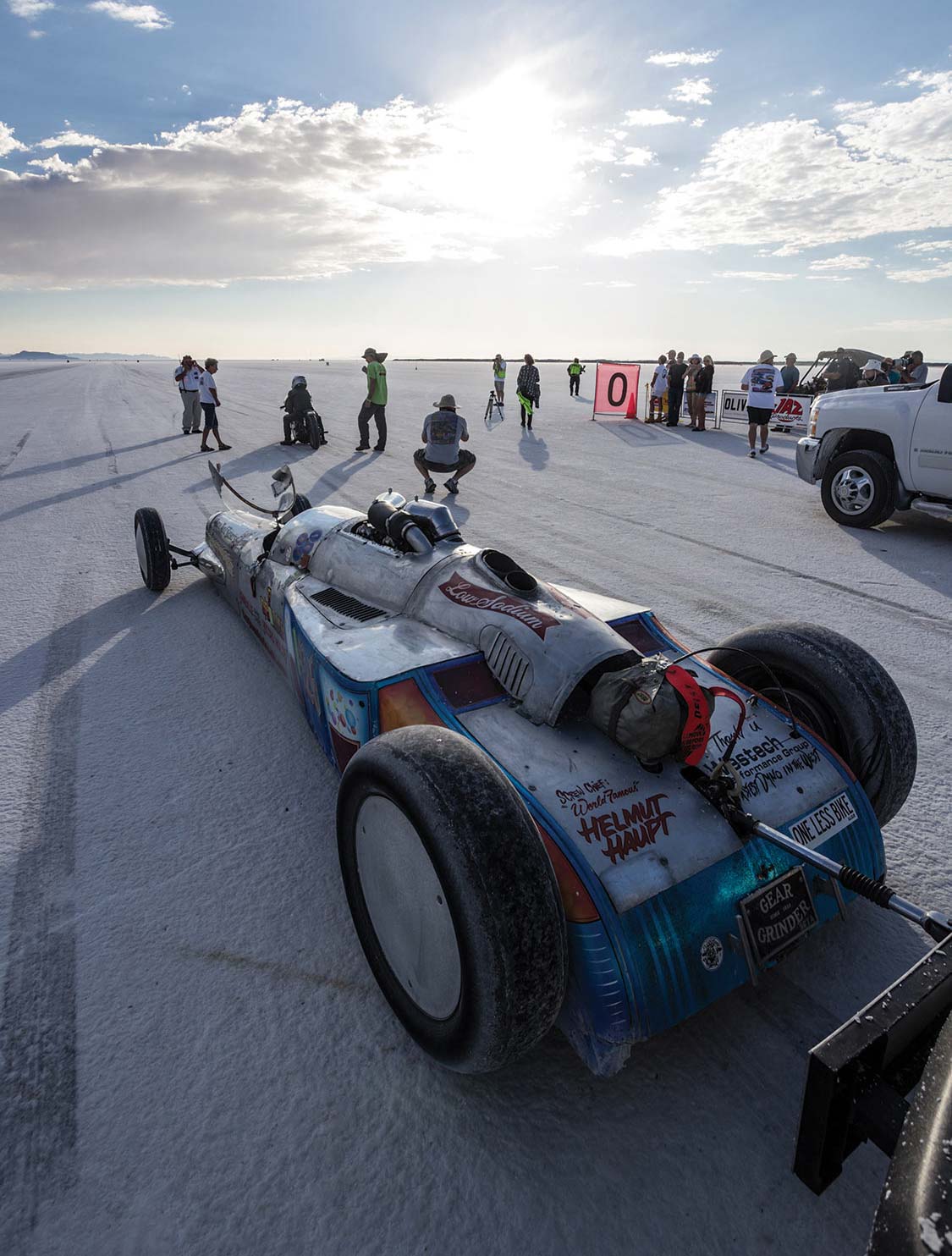
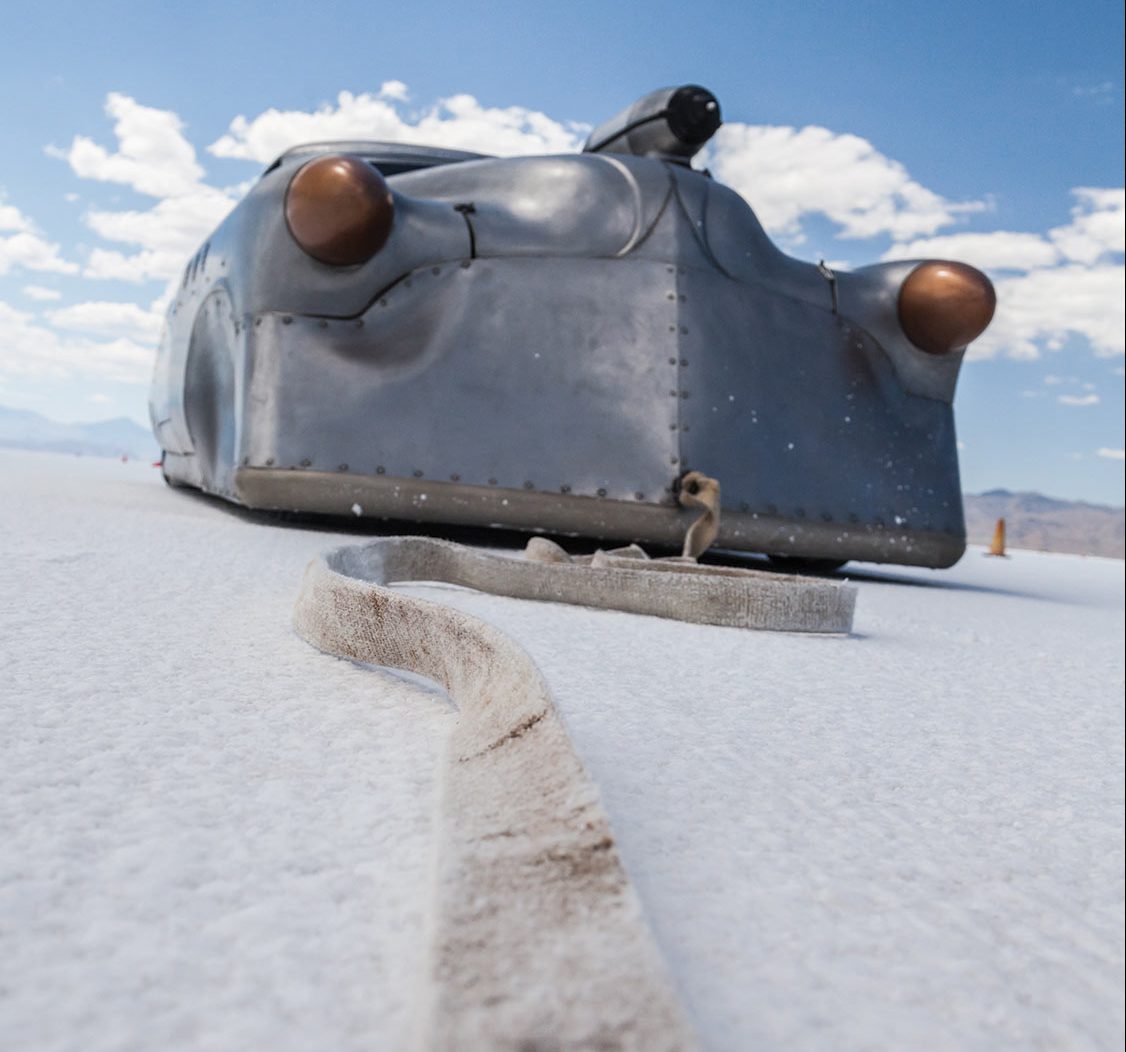
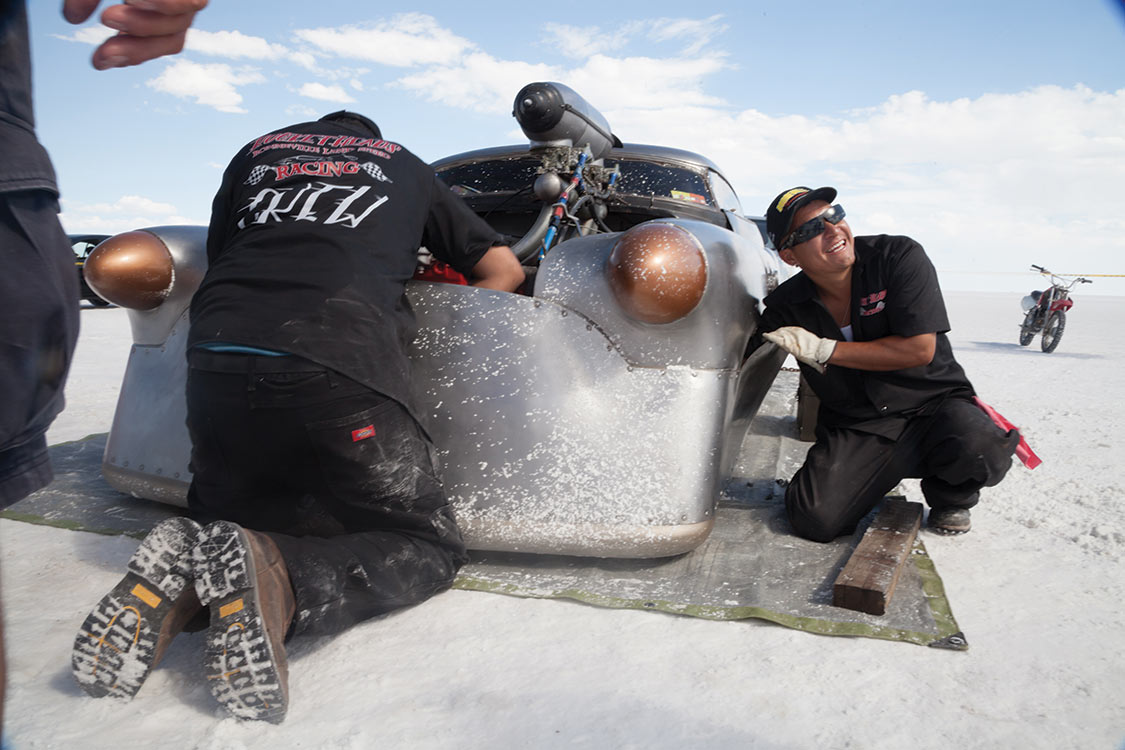
Alice’s stock inline six-cylinder is a whopping 216 ci and produced 90 hp 63 years ago. There’s no pressure oil system; little cups on the connecting rod caps splash the crankshaft bearings with oil. The little single-barrel carb is smaller than the average cup of coffee at a roadside diner, and yet we averaged 18 miles to the gallon, even with our little trailer tied to the rear bumper. To avoid any unscheduled stops along the way, we kept two small jerry cans of fuel in the trunk.
After spending time in Bonneville and taking tens of thousands of photographs, we turned our convoy back along the Extraterrestrial Highway, stopping to camp once more in Pahranagat National Wildlife Refuge, without the alien visitors this time around.
Alice was, in that sense, a time capsule, and my mother, a pro at dressing in retro fashions, also contributed to the Twilight Zone-like haze that blanketed the trip.”

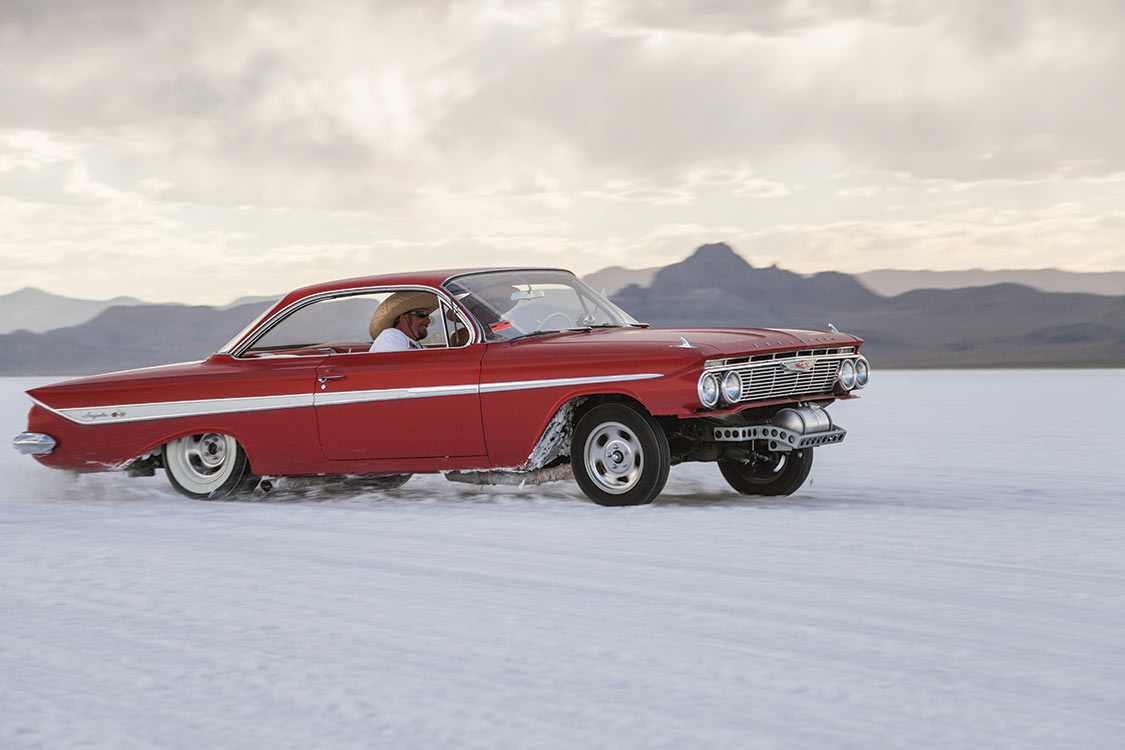
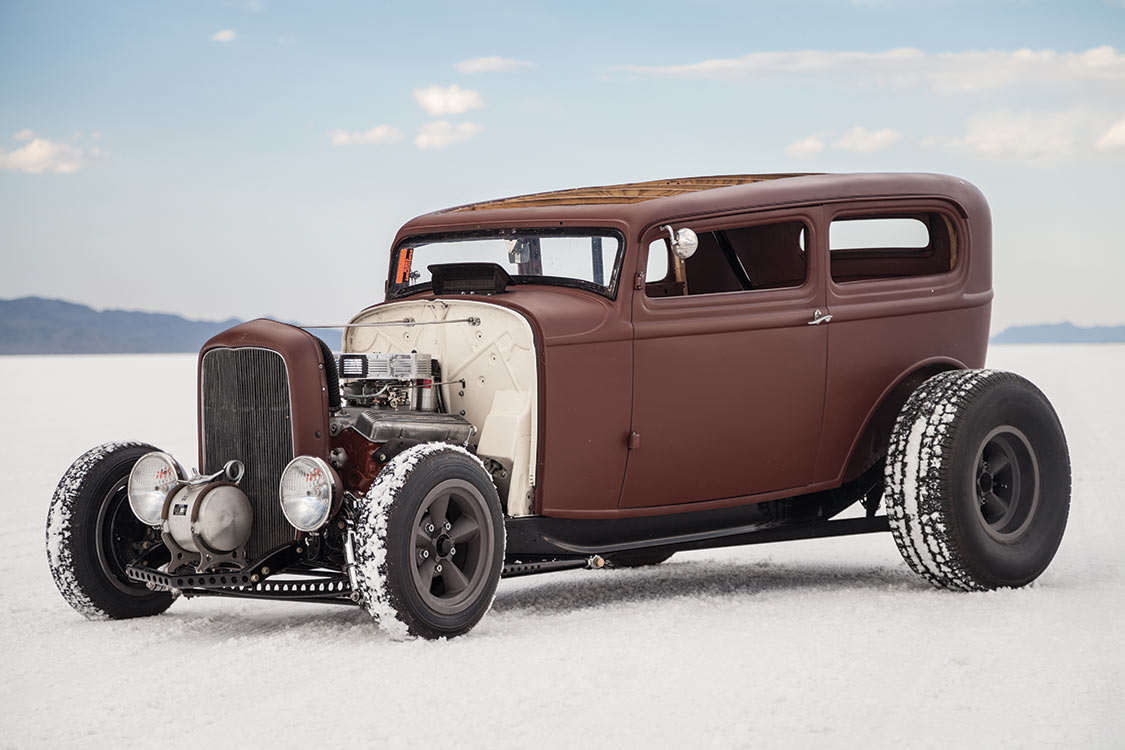
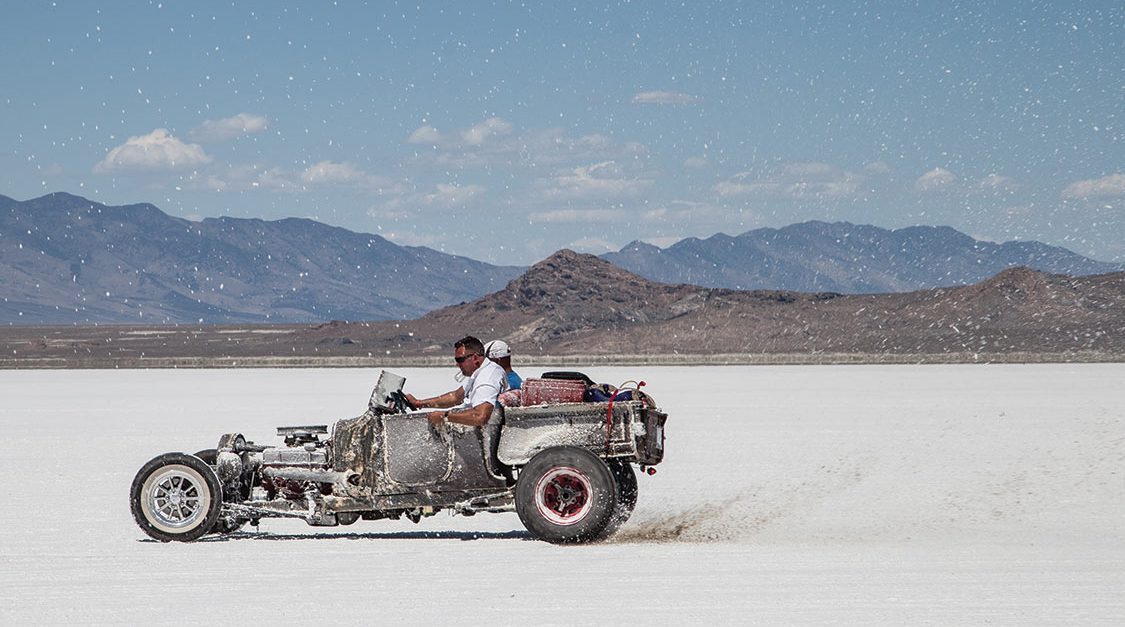
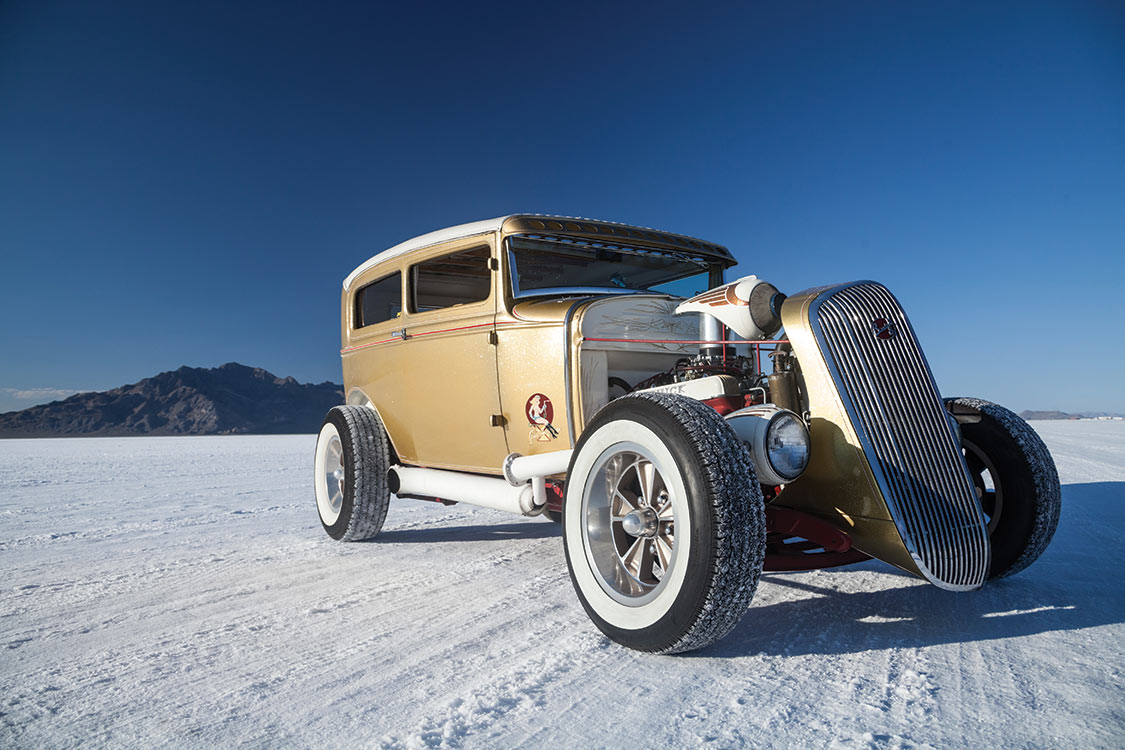
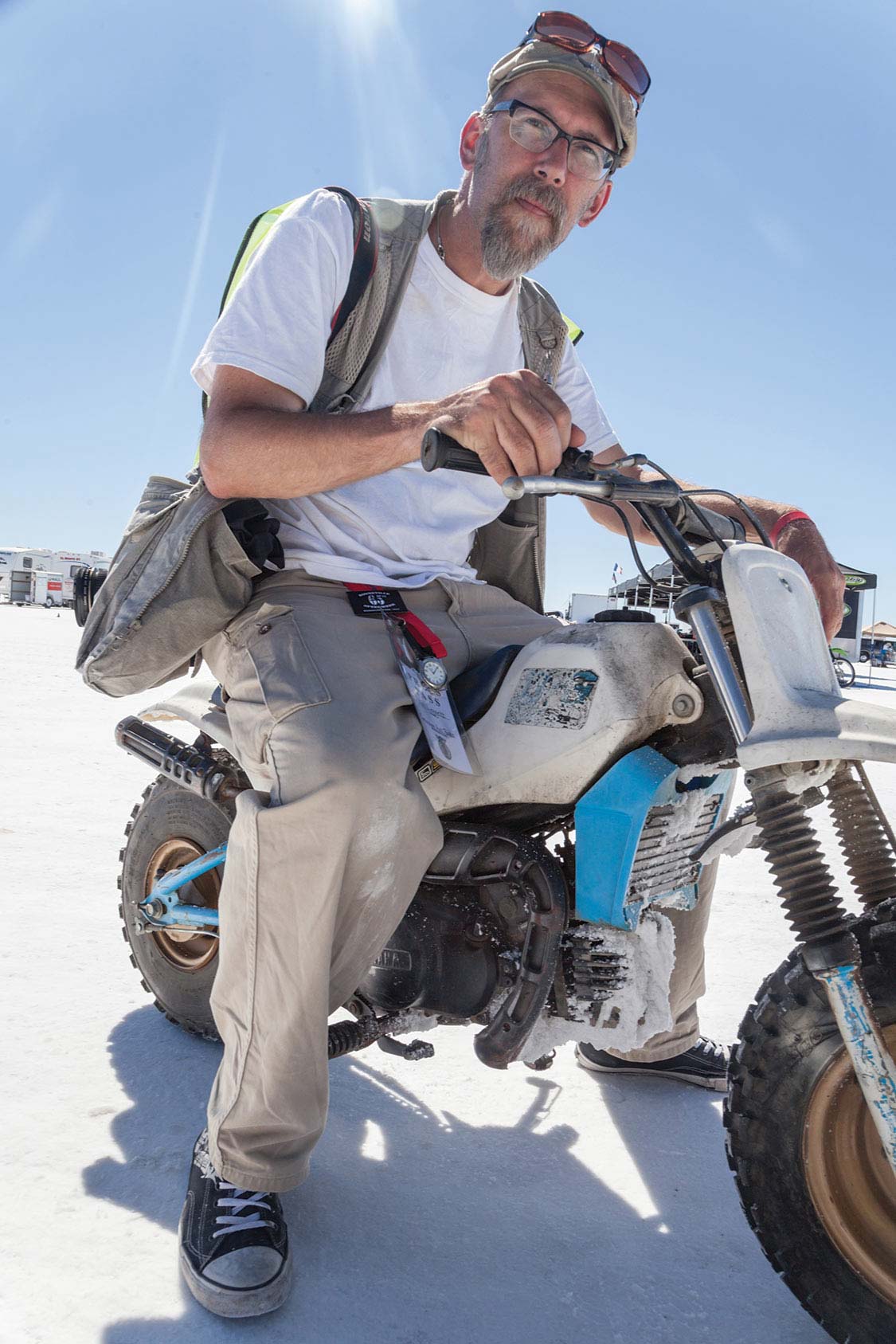

Later, we took an evening drive down Las Vegas Boulevard, dropped off the RV, and turned Alice southbound towards Needles, California. Once we hit town we passed through the tunnel seen briefly in the cult movie Two-Lane Blacktop, an easily overlooked landmark. The smell of the desert lingered and the long straight road led us past the desert in El Mirage, California where the S.C.T.A hosts its own land speed racing event. It’s another place on our list of events we plan to attend one day.
As we drove into the sunset towards the Pacific, there were many more adventures in store for us…”
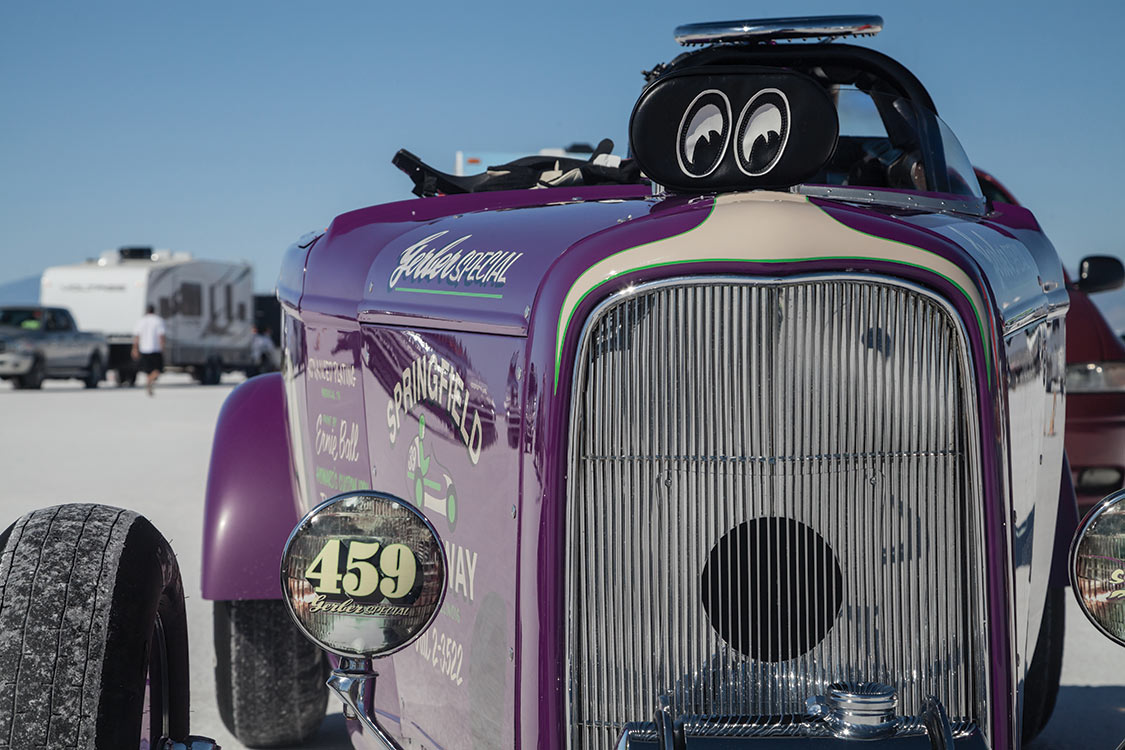

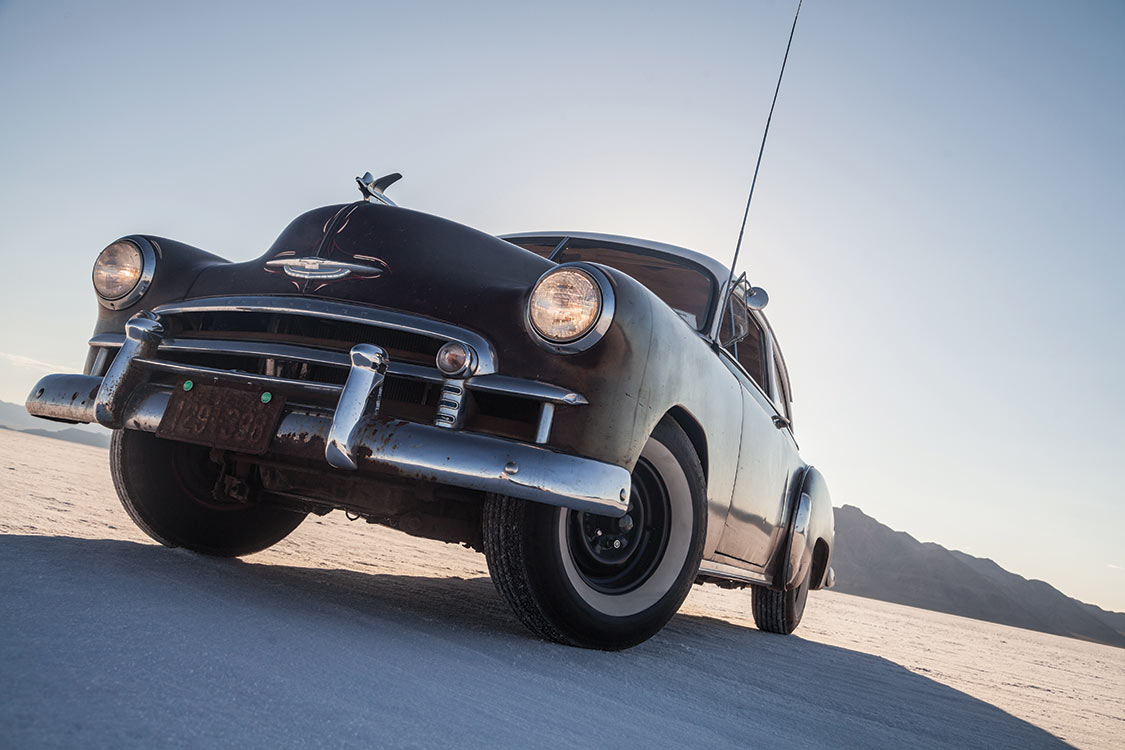

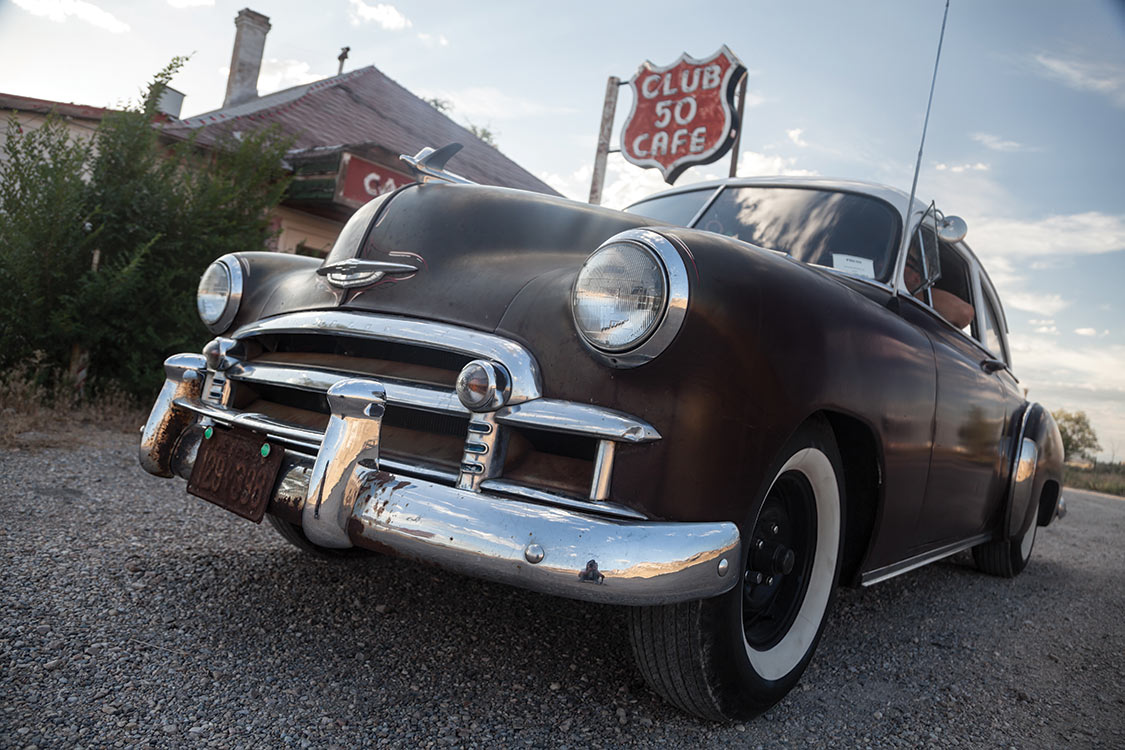
We drove along the 66 past other well-known sites like the town of Amboy, an abandoned spot in California that’s often used as a location for film and photo shoots.
As we drove into the sunset towards the Pacific, there were many more adventures in store for us, including car cruises, garage visits, California sunshine, and finally, the long winding road home. Alice made it to Bonneville in her original state, and we can only imagine where she’ll take us next.
My name is Liz Leggett and I’ve been working as a freelance photographer for the past decade. Recently, I’ve been taking images of various cars for several media outlets such as “The Montreal Gazette,” Driving.ca, “Revolution Motorcycle Magazine,” “Sympatico Autos” and “Canadian Hot Rod Magazine.” Being passionate about cars is an important part of my job, as well as traveling to various shops, speedways, local cruise nights, museums and backyard garages. Builders from all over grind, weld and fabricate amazing cars and undergo the often long and arduous task of building dream machines, and I’ve had the privilege of meeting them and photographing their work.

In the summer of 2012, I went on an intense six week cross-country road trip while living in a ’74 VW Wesfalia bus. My friend Billy Ozoux and I stopped in Detroit, Memphis and Nashville, jumped on Route 66 and drove through Las Vegas into Wendover, Utah, where I took pictures on the salt flats at Bonneville Speedway during Speed Week. From there we drove to Santa Monica, California, where we attended several car events and toured many old-school hot rod shops. After that we jumped back on Route 66 and headed to Chicago, then home again to Montreal, completing the trip with a total of 15,000 images and 9,000 miles clocked.
We decided this adventure was too amazing not to repeat, and began making plans to return in 2013. However, we decided that this time, my mother Connie, father Jim and I would be driving my family’s stock ’50 Chevy nicknamed “Alice” along the same course to Route 66 and back to Bonneville Speedway for the week-long racing event.
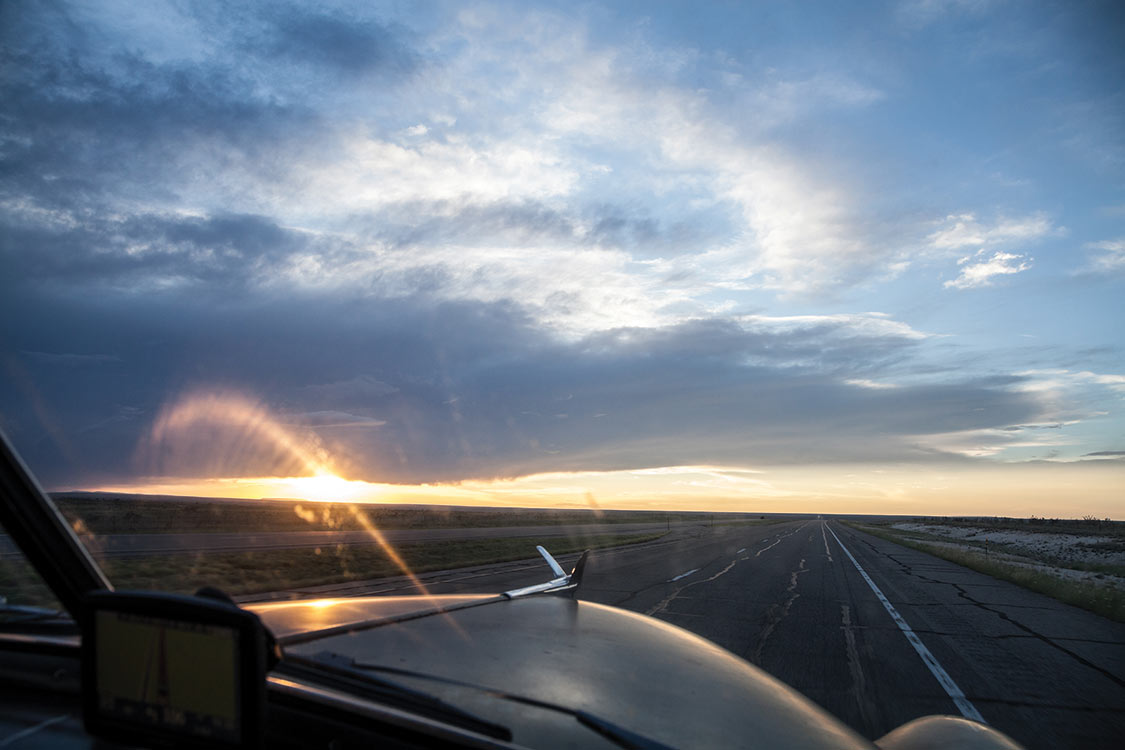


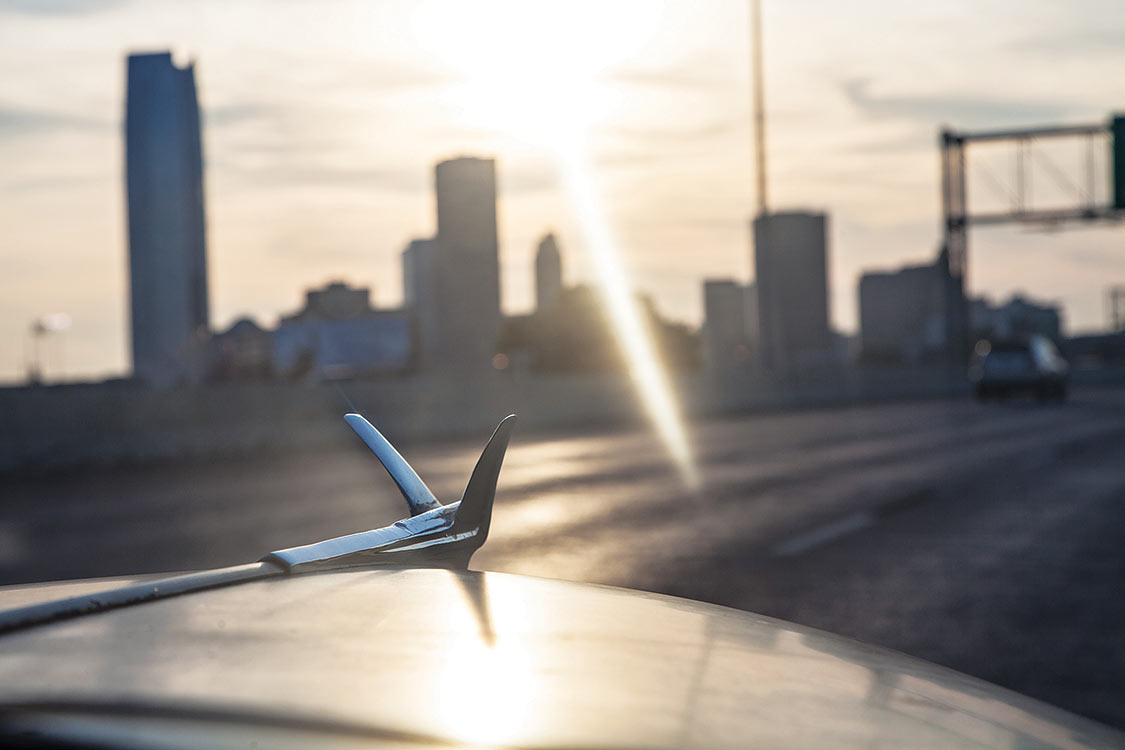
Alice was originally built in Oshawa, Ontario, Canada, and spent the majority of her life in Oklahoma. We bought her in good running condition, untouched by crooked saw blades and retaining her original inline-six engine and three-speed manual transmission. We also decided to take the road trip in the manner we’ve always dreamed, just like it was done in the days when vacationing on the road was an American tradition. So with a small trailer in tow full of clothing and a trunk packed with tools and spare parts, we set out towards the border and adventures unknown.
After stopping in Toronto to visit a friend, we continued on to Windsor and then Detroit over the Ambassador Bridge. Back in the USA, we drove to Indianapolis where we visited the famed museum filled with legendary cars. My parents had never travelled along Route 66 and it was exciting to show them places I’d photographed and share the knowledge I’d gained the previous year.
“Alice was originally built in oshawa, ontario, Canada, and spent the majority of her life in Oklahoma. We bought her in good running Condition, untouched by crooked saw Bladesand retaining her original inline-six Engine and three-speed manual transmission.”
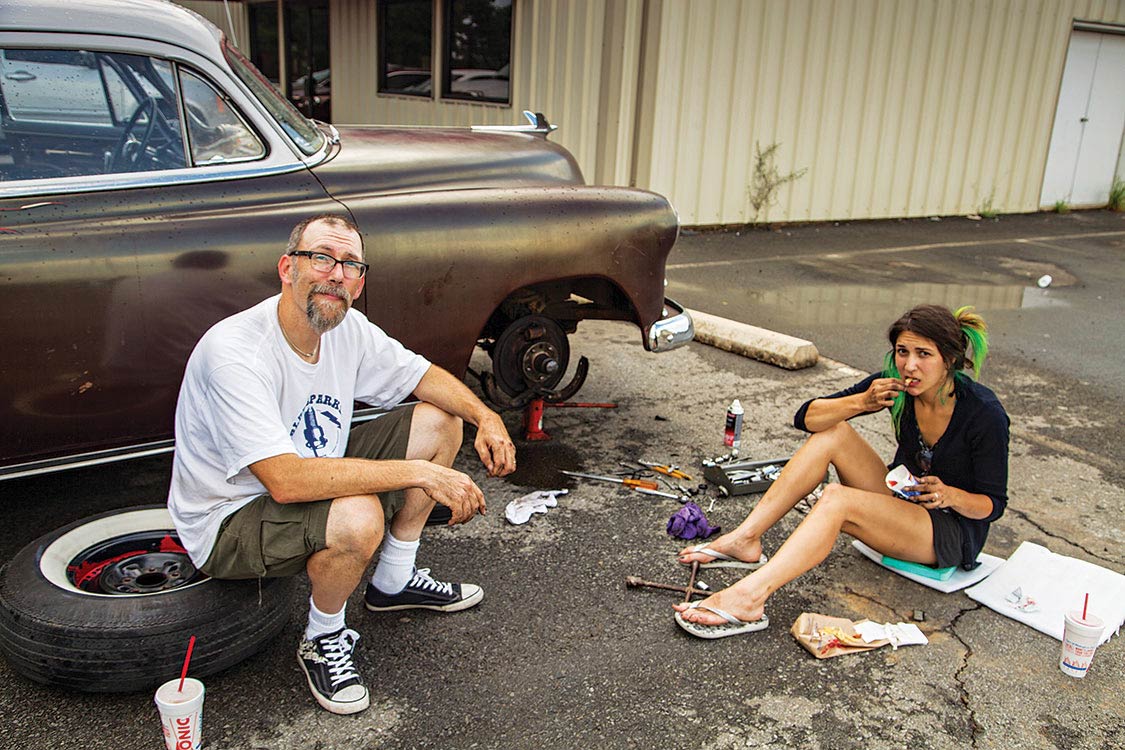
Along the way we made new discoveries and encountered many fascinating people. When we reached Yukon, Oklahoma, we had a chance meeting with local hot rodder J.A. Luper and his son, who gave us a great tour of some of the small car shops in town. Route 66’s rich history revealed itself one roadside attraction after another, and provided much information on Chevys from the Route’s heyday. We did encountered mechanical trouble when we lost the use of the front right brake in Morrilton, Arkansas. Stopping in the parking lot of the closed brake and tire shop, we rebuilt the brake cylinder, got the difficult springs back in place, and we were off again. One after the another, we visited infamous places like the U-Drop Inn in Shamrock, Texas, with its art deco design, the Jack Rabbit Trading Post complete with giant jackalope and the infamous Arizona Meteor Crater site.
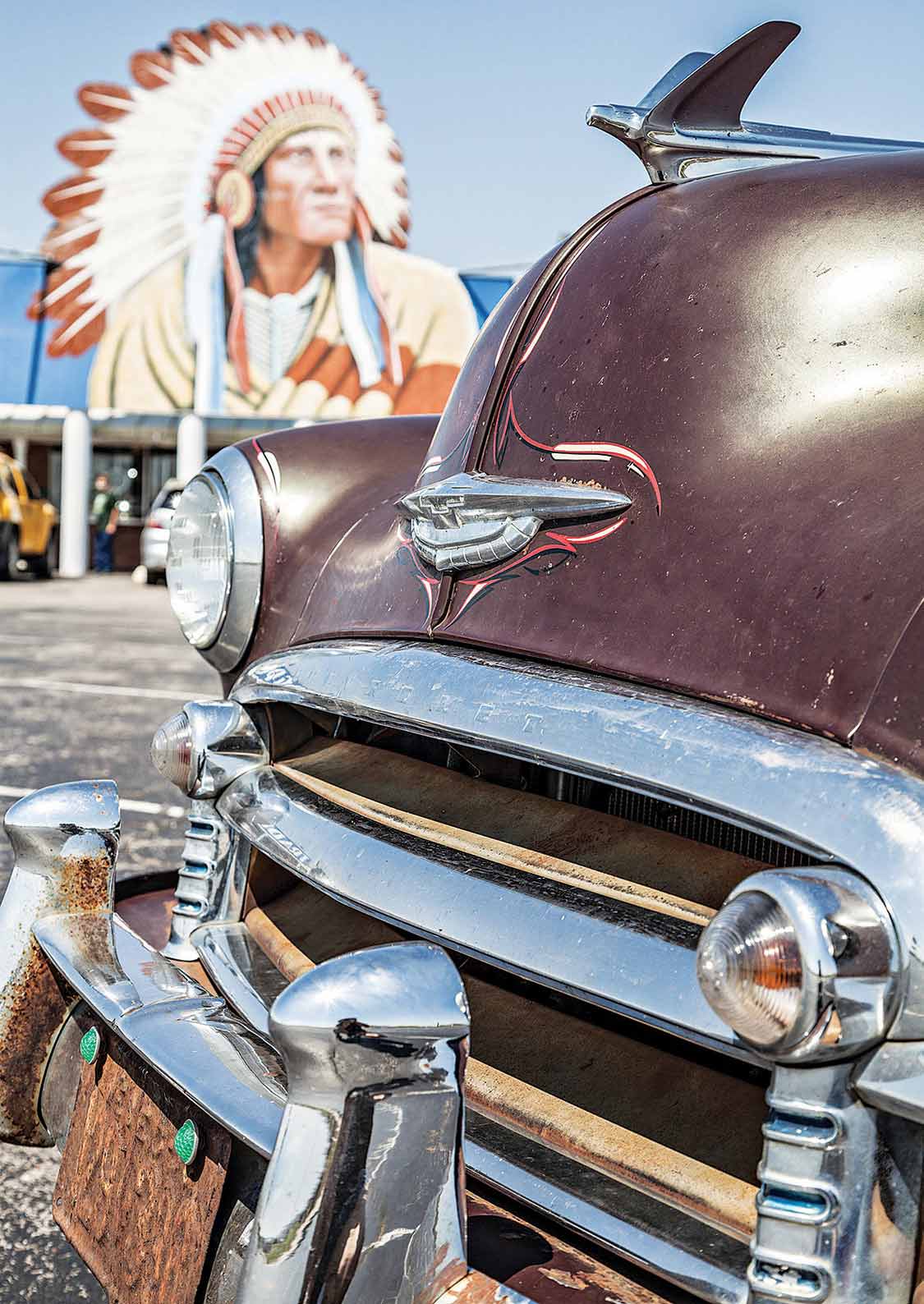
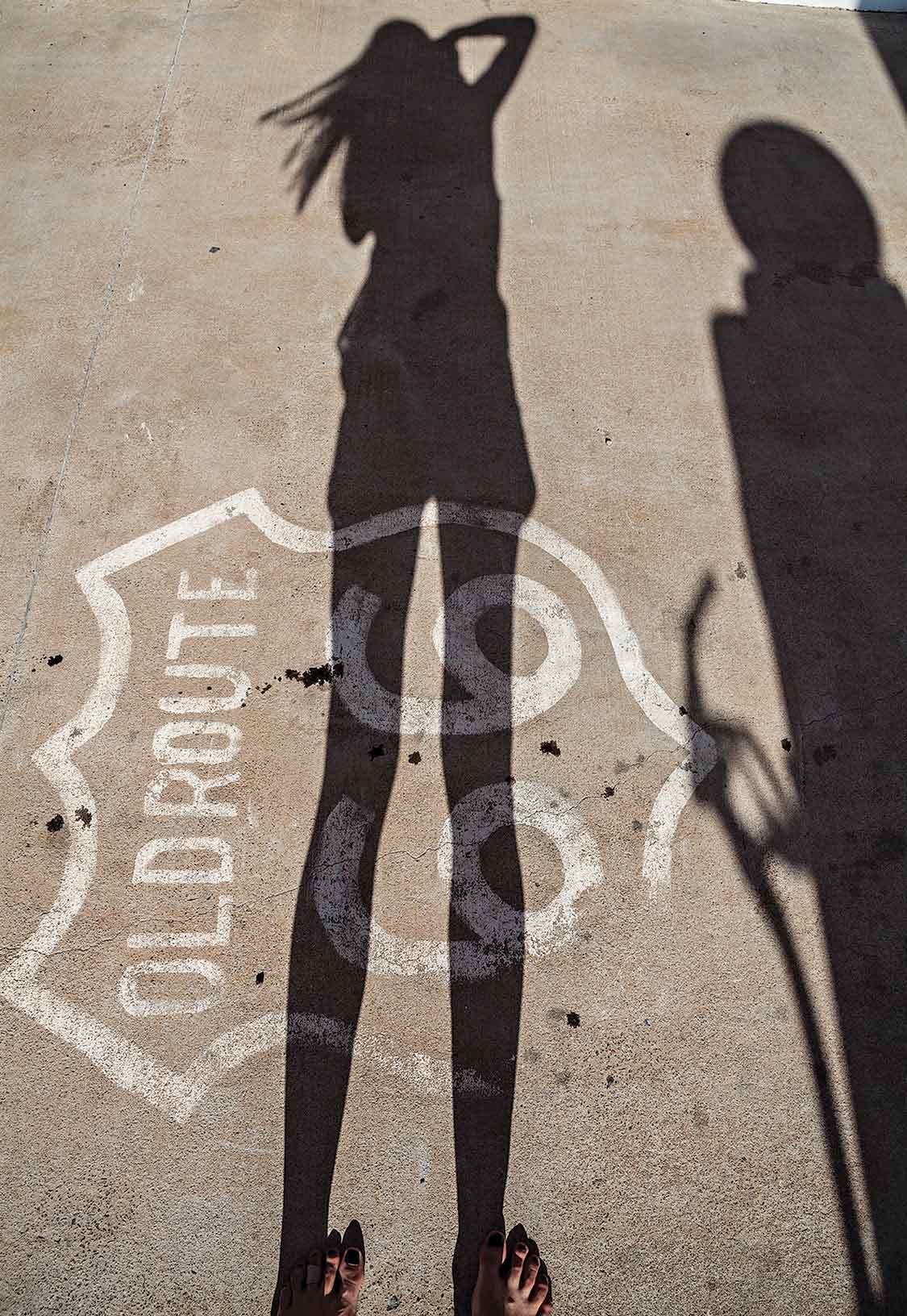
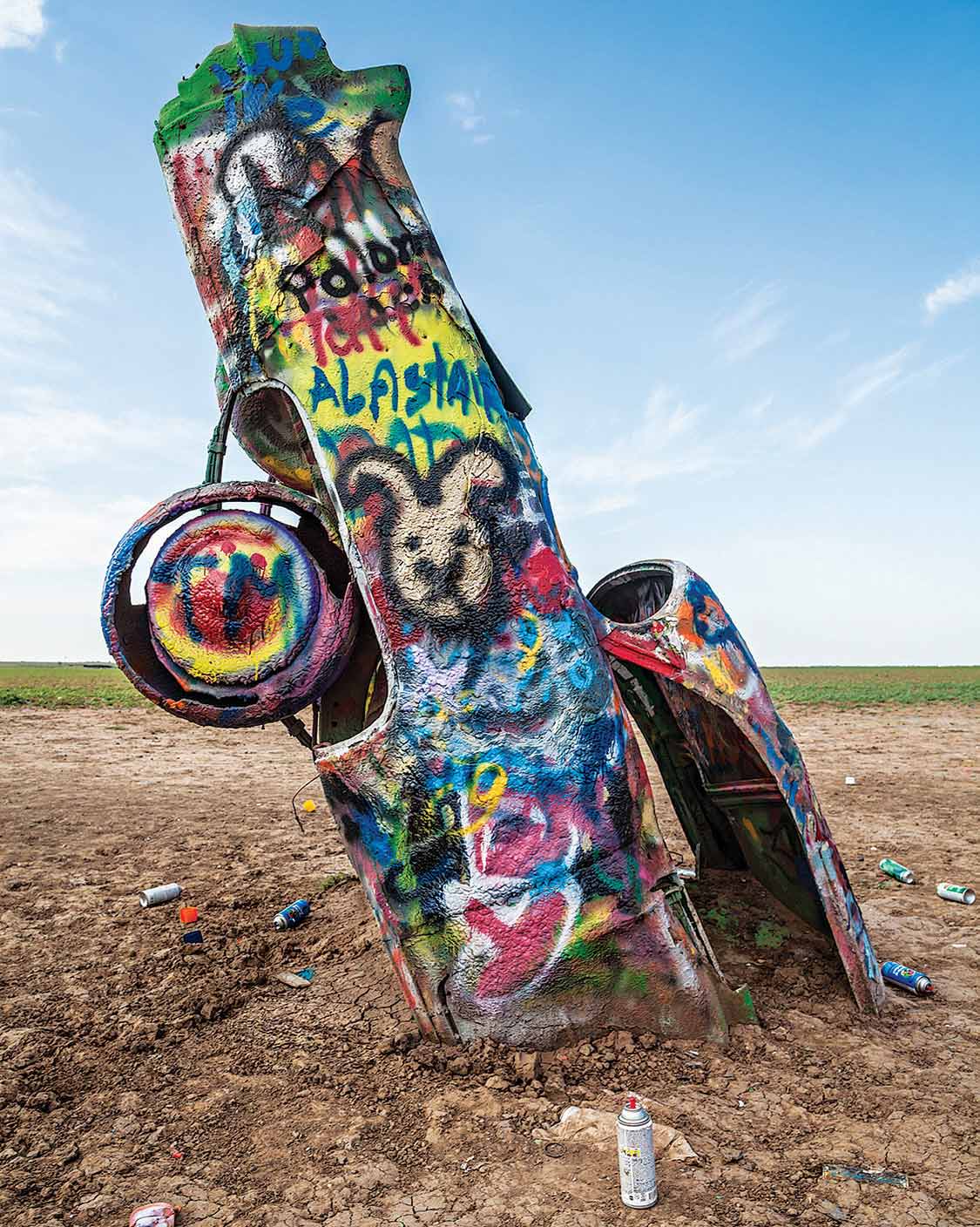


When we reached Tucumcari, New Mexico, the bright signs of Tee-Pee Curios and The Blue Swallow Motel greeted us. We turned off the mother road in Tucumcari and headed south to visit Roswell’s International UFO Museum and Research Center. This was where the road got slightly difficult for poor Alice. With outside temperatures peaking at 115˚F, we were forced to “MacGyver” a solution to the fuel boiling in the fuel line before reaching the single carburetor. Armed with tinfoil and duct tape, we insulated the line by splitting a rubber fuel line covered in foil, and we built a custom shroud from cookie sheets to force more air through the radiator. This gave us just enough cooling capacity to get out of the desert and back on route.
“Along the way we made new discoveries and encountered many fascinating people.”


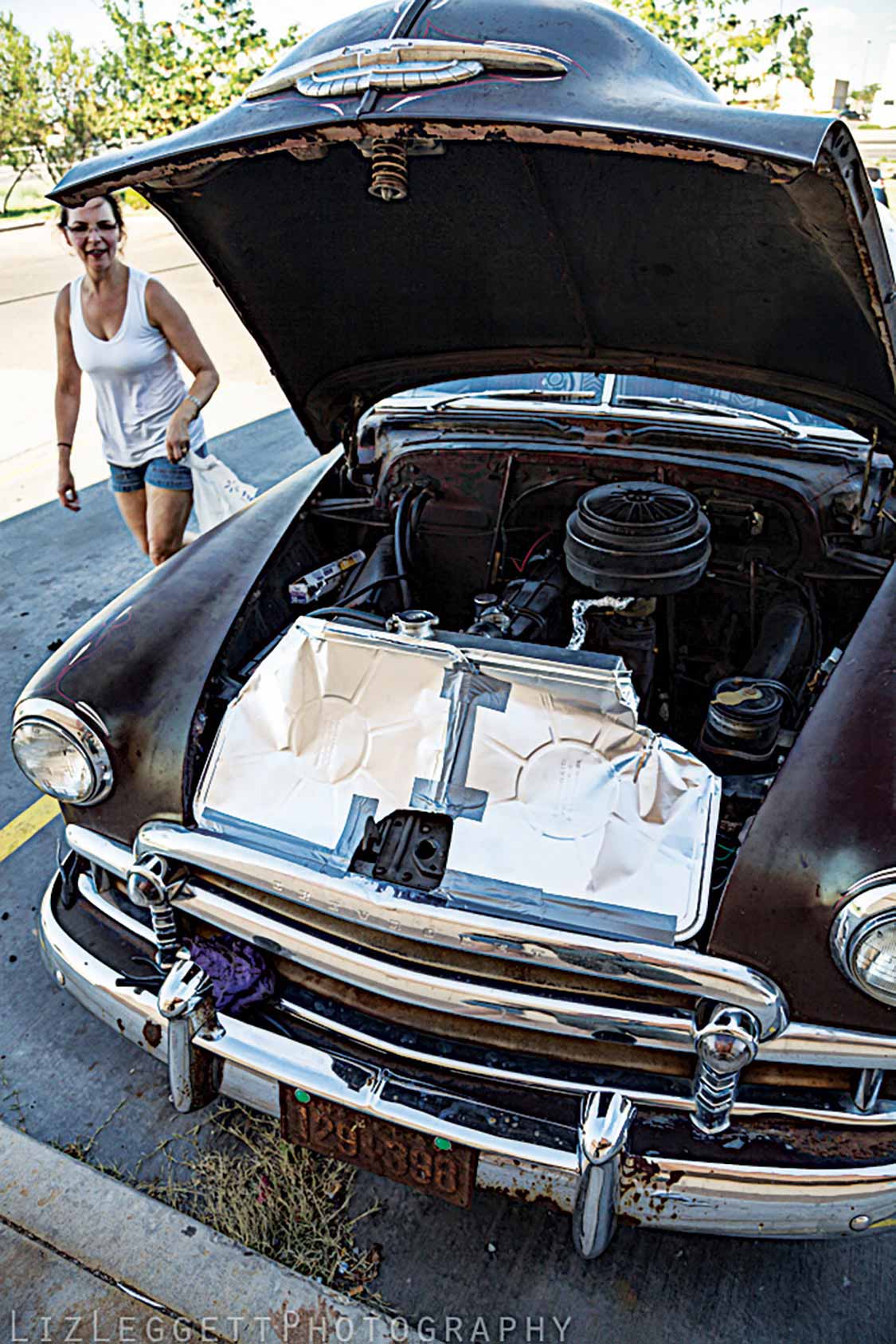
Once we reached Needles, California, we headed towards Las Vegas where we picked up the RV that would serve as our base of operations during speed week. We carried our convoy along the Extraterrestrial Highway and decided to camp out at Pahranagat National Wildlife Refuge, a stone’s throw away from the infamous military compound, Area 51. After parking for the evening, our vehicle was suddenly surrounded by a television crew that had been filming in the park. Actors dressed as aliens sprang up from the buses and agreed to pose for a few pictures with Alice.
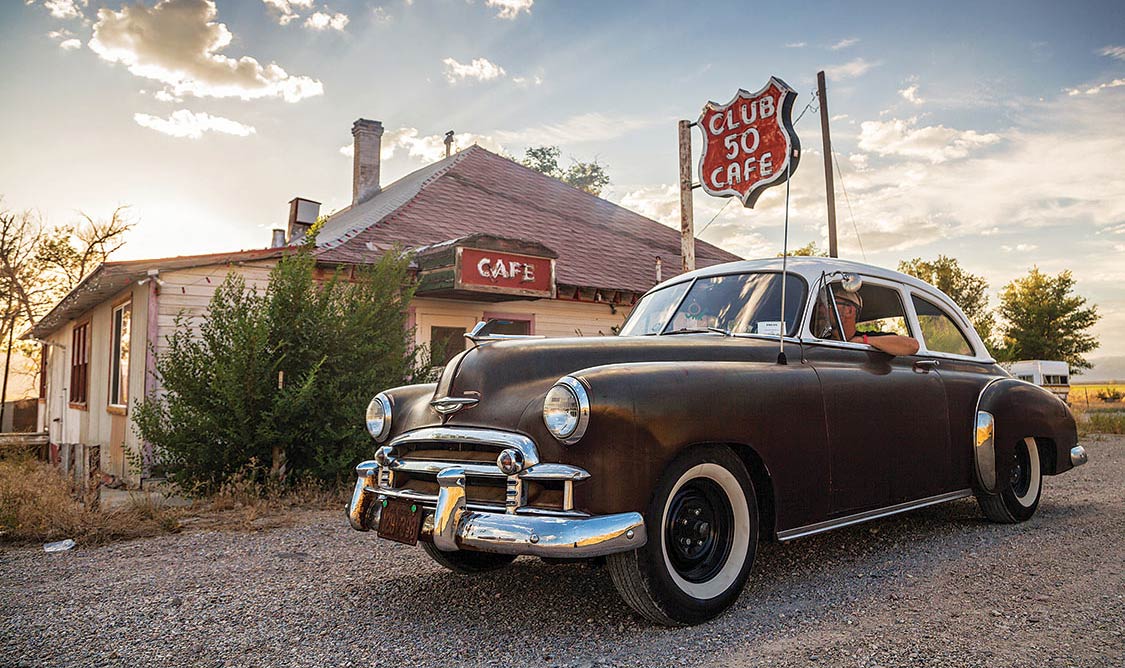

Finally arriving in Ely, Nevada, Alice met with an unfortunate malfunction with her clutch’s throw-out bearing, a repair dad and I couldn’t make on our own. We were forced to leave her for three days while parts were delivered, so we carried on to Bonneville. All in all, Alice proved to us that she was well up to the task of getting us across the country, all while maintaining her original engine, transmission, body and chassis, a feat that not many 60-year-olds can boast.

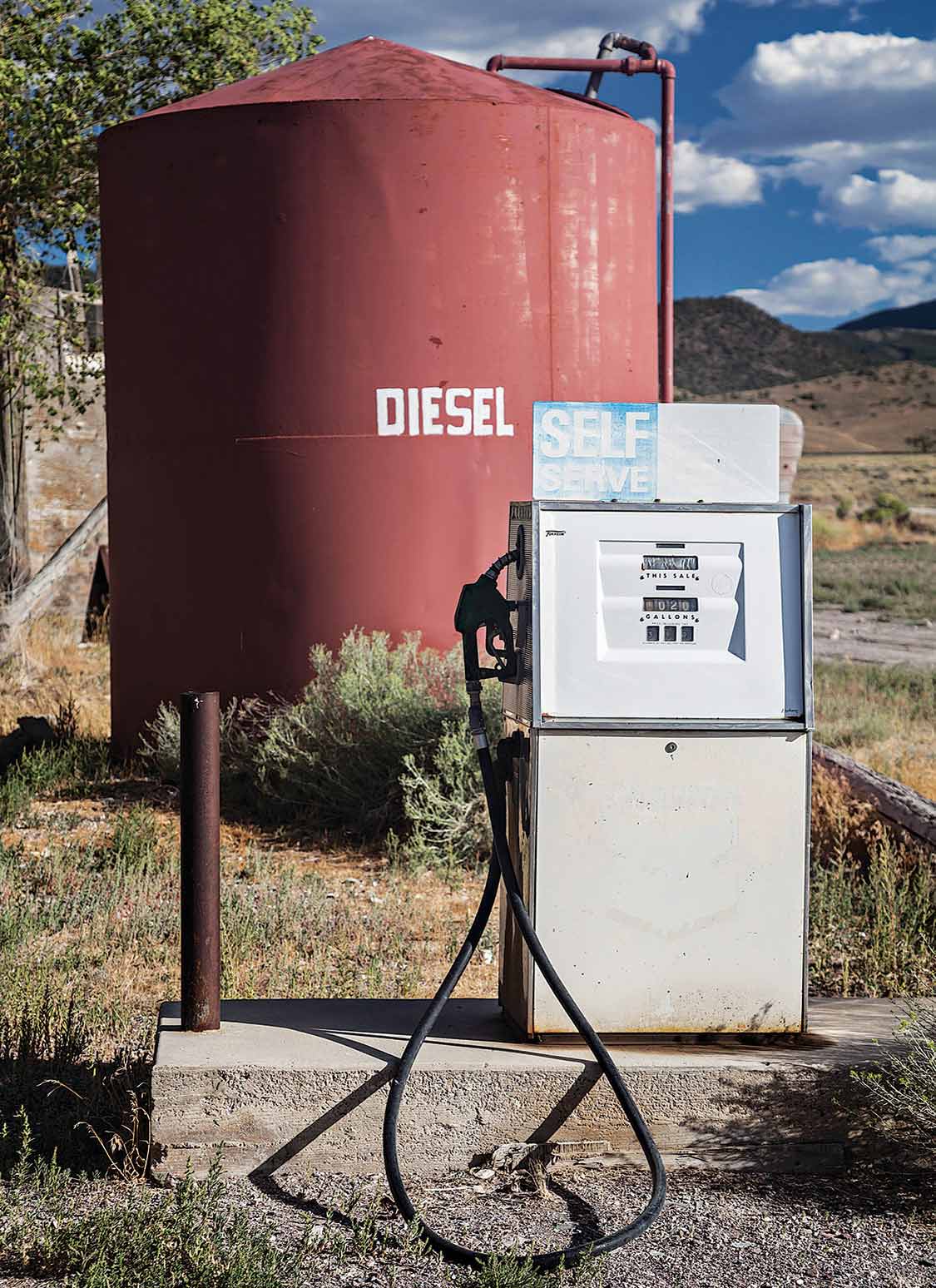
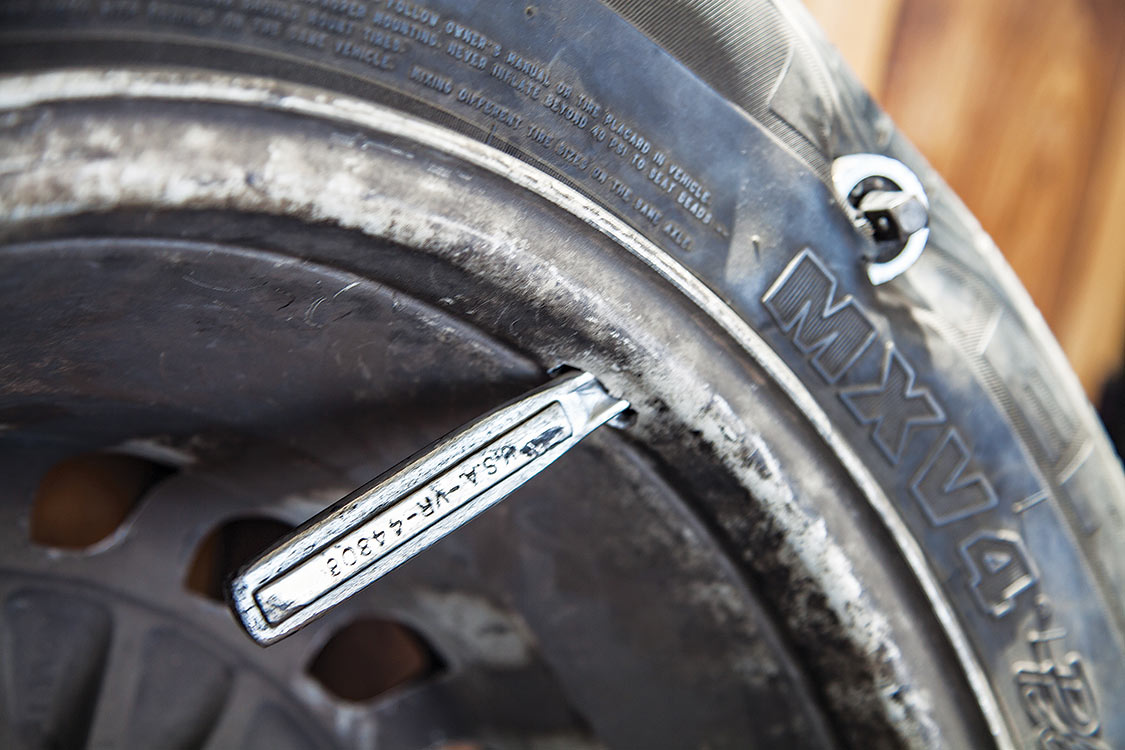
But the road trip was not yet through, as Alice still had a long haul ahead of her, bringing us to California, across the badlands of the Midwest and all the way back home. This was just the beginning of one of our craziest adventures yet.

The RPM Nationals is a throwback to the early days of drag racing. Back when street cars and race cars competed head-to-head to see whose garage had built the faster car. The racers went down the 1/8 mile, two at a time, with the drop of the flag. At the RPM Nationals, things haven’t changed much from the early days — apart from the age of the drivers.
The event takes place at the beautiful Santa Margarita Ranch just a bit northeast of San Luis Obispo. There are three different racing brackets competing head-to-head. One class for flathead V8’s, one for the 4-Bangers and another for full-race. All of the classes are restricted to running periodcorrect speed equipment. There was definitely much more patina than shine at this event!
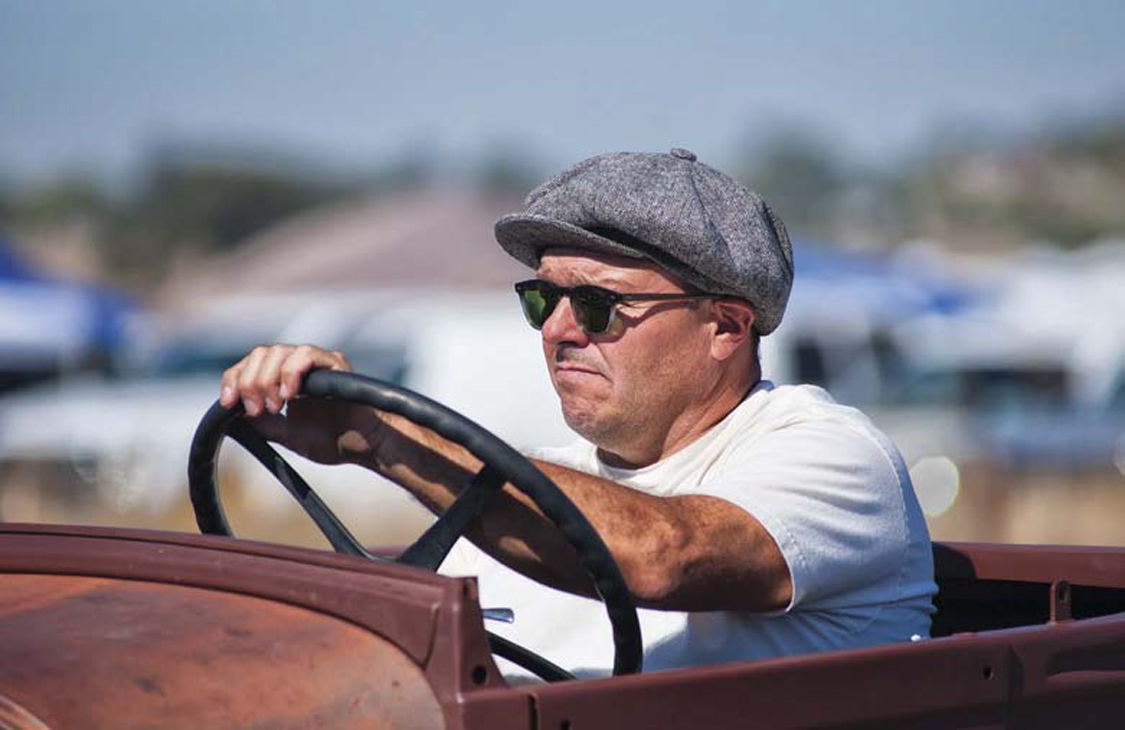
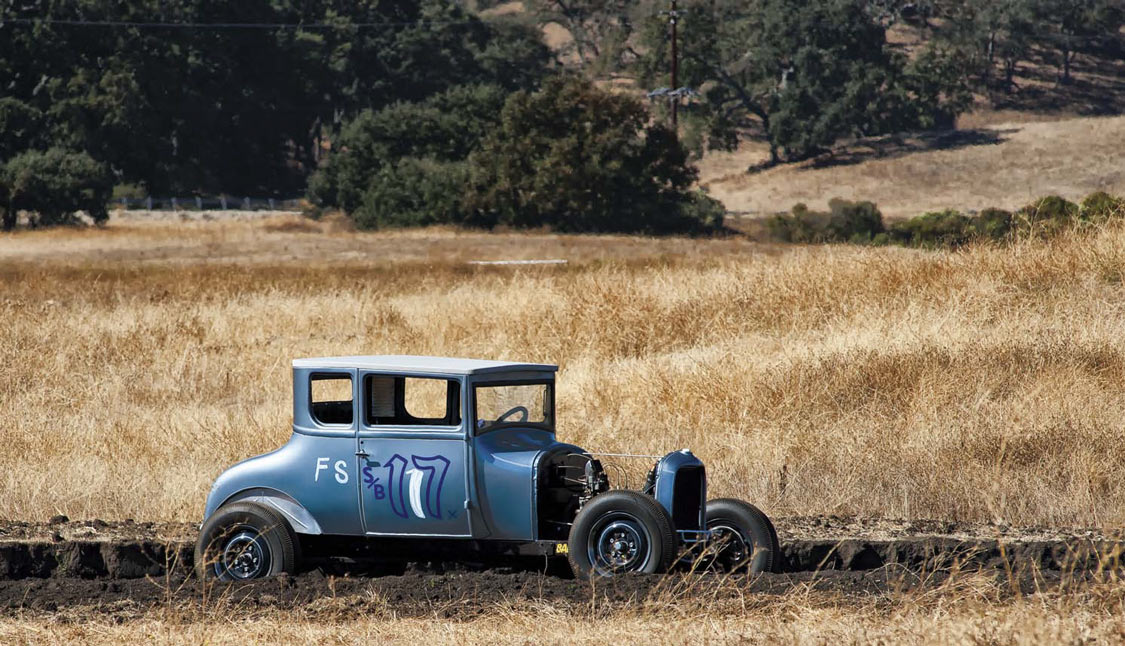
We left Orange County, CA on a Friday afternoon, taking Interstate 5 up to Highway 126. The 126 is a really great route to get to Highway 101. It passes through the small towns of Piru and Fillmore, which has a cool old downtown if you want to stop for lunch or check out an antiques shop or two. We joined Highway 101 in Ventura where we needed to stop for gas. A friend had recommended a local brewery called Topa Topa so we stopped in there for a couple of tasters. The Tux Nitro Milk Stout was delicious, as was the Howler Coffee IPA.
Back on the road, our next stop was for lunch in Buellton at Firestone Walker Barrel Works. I highly recommend this restaurant. They have really good food and some fantastic beers (which I couldn’t try this time because now I was driving).
We arrived at our destination for the evening around 5 PM at a friend’s house in the Village of Arroyo Grande. Arroyo Grande is a real gem of the California central coast, located just southeast of Pismo Beach. The town has a great vintage main street lined with lots of hip eating and drinking storefront establishments.
… Fillmore, which has a cool old downtown if you want to stop for lunch or check out an antiques shop or two.
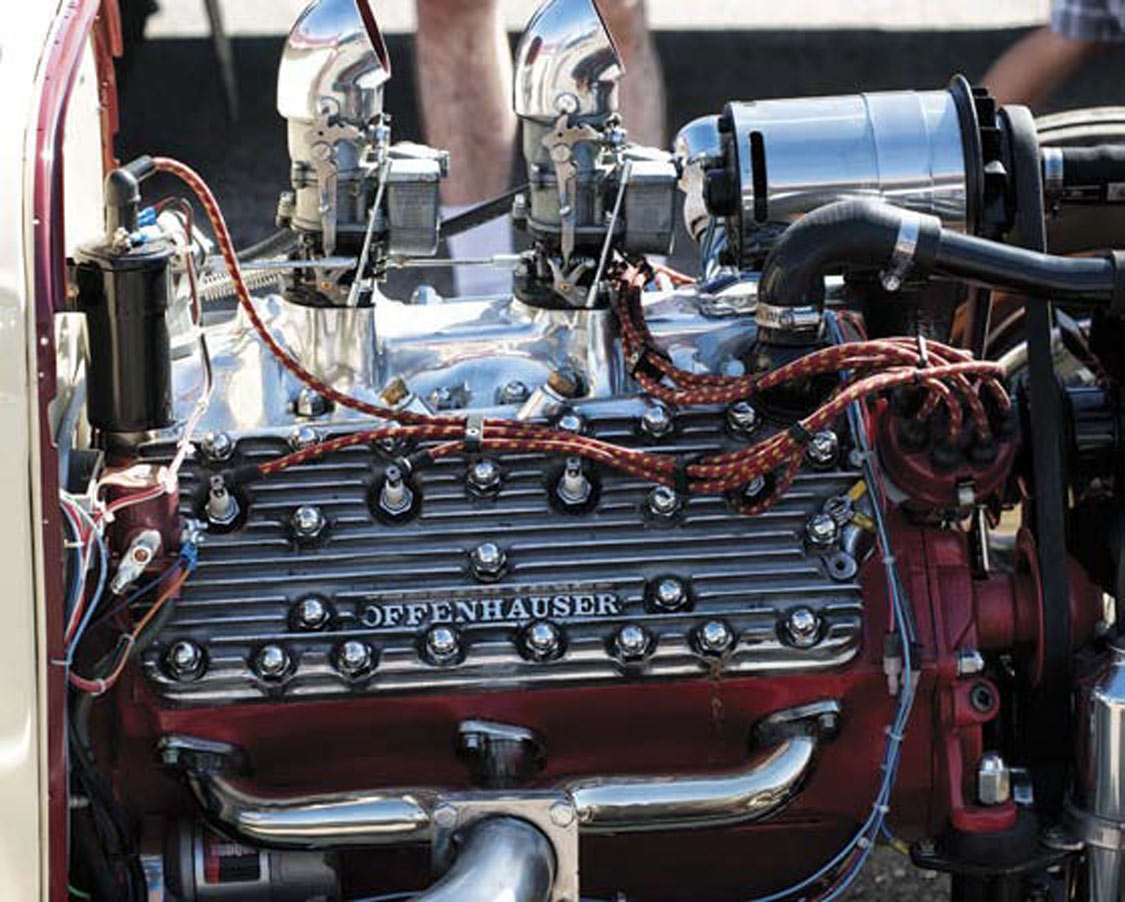
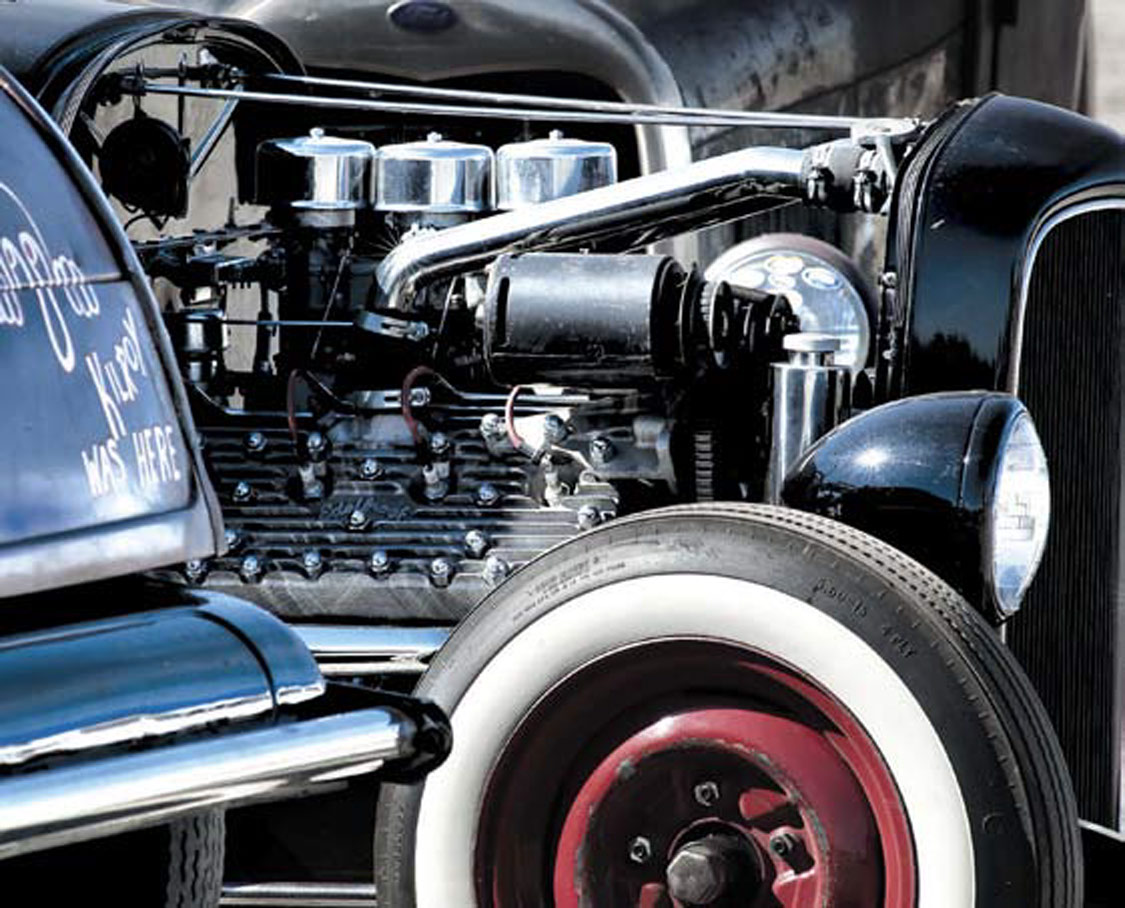
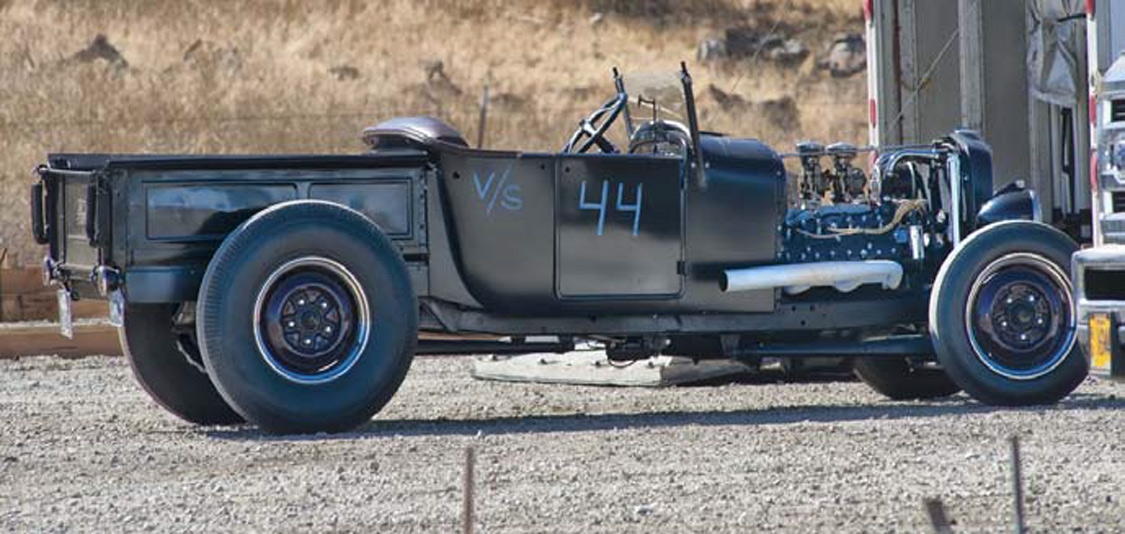
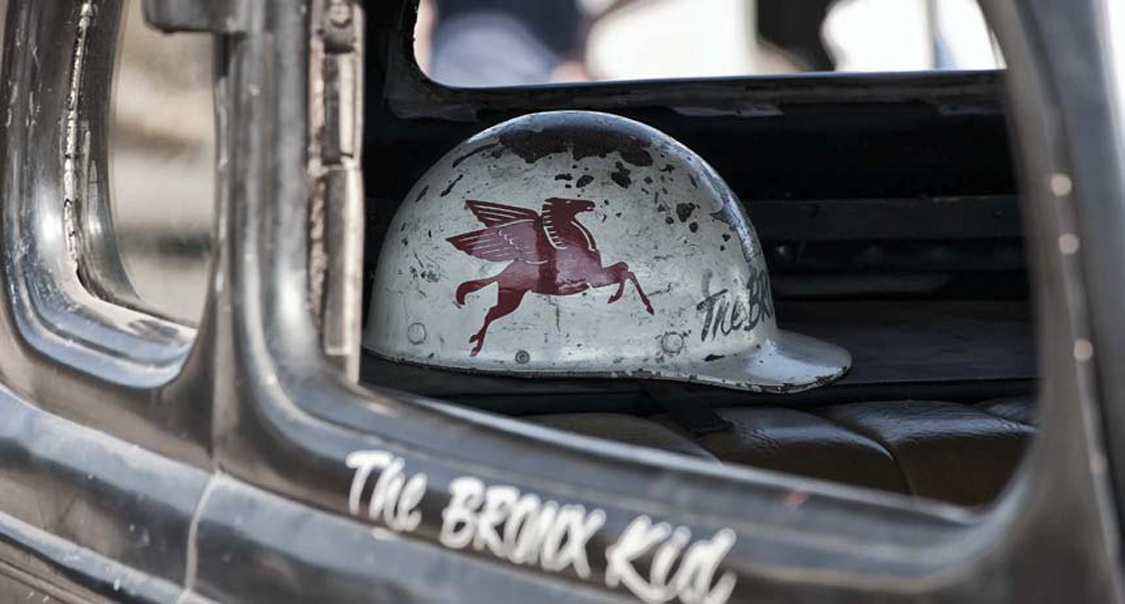
The Santa Margarita Ranch is one of the oldest continuouslyoperating cattle ranches in California. The Ranch was established in the late 1700s and now hosts a wide range of events including weddings, fund raisers and festivals. Some of the unique features also on the premises are old barns and narrow gage railroad. It looks almost like a studio set for an old western movie. The drag strip is on what appears to be a small airfield.
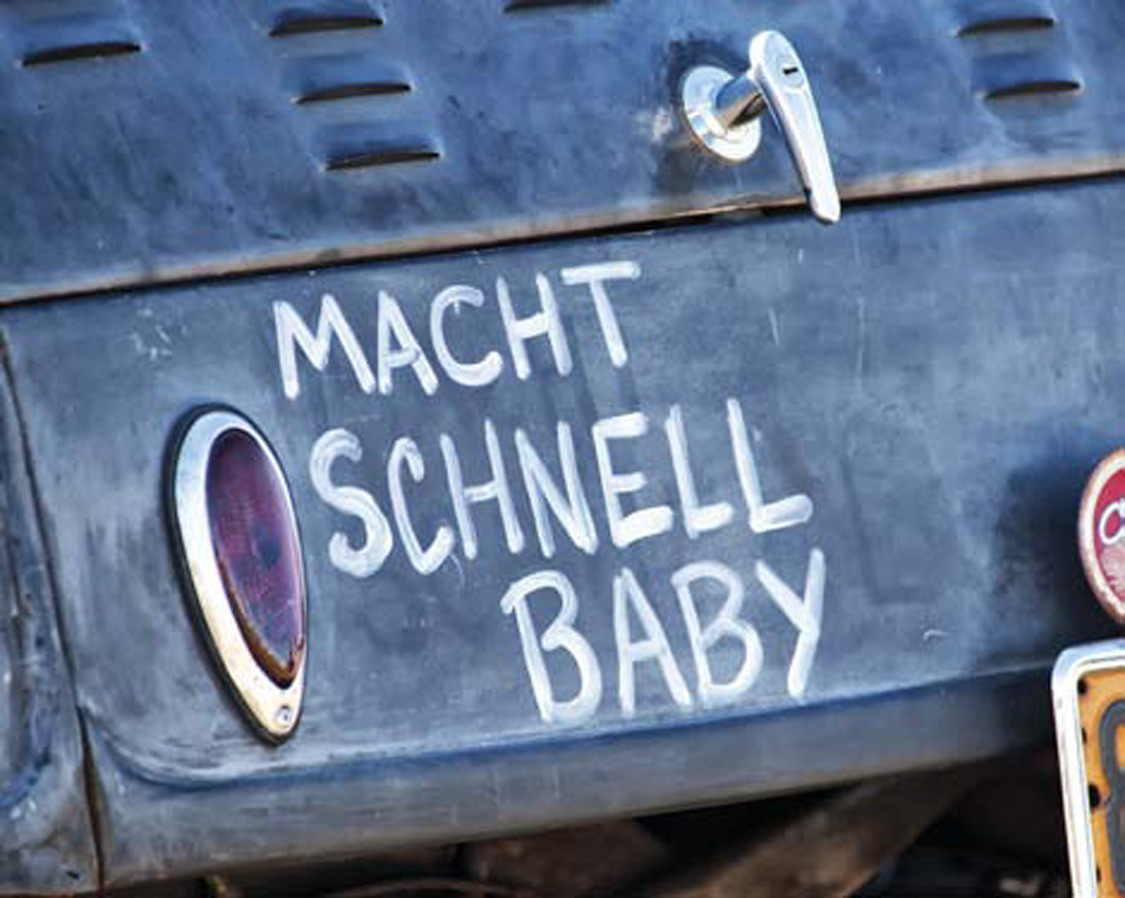
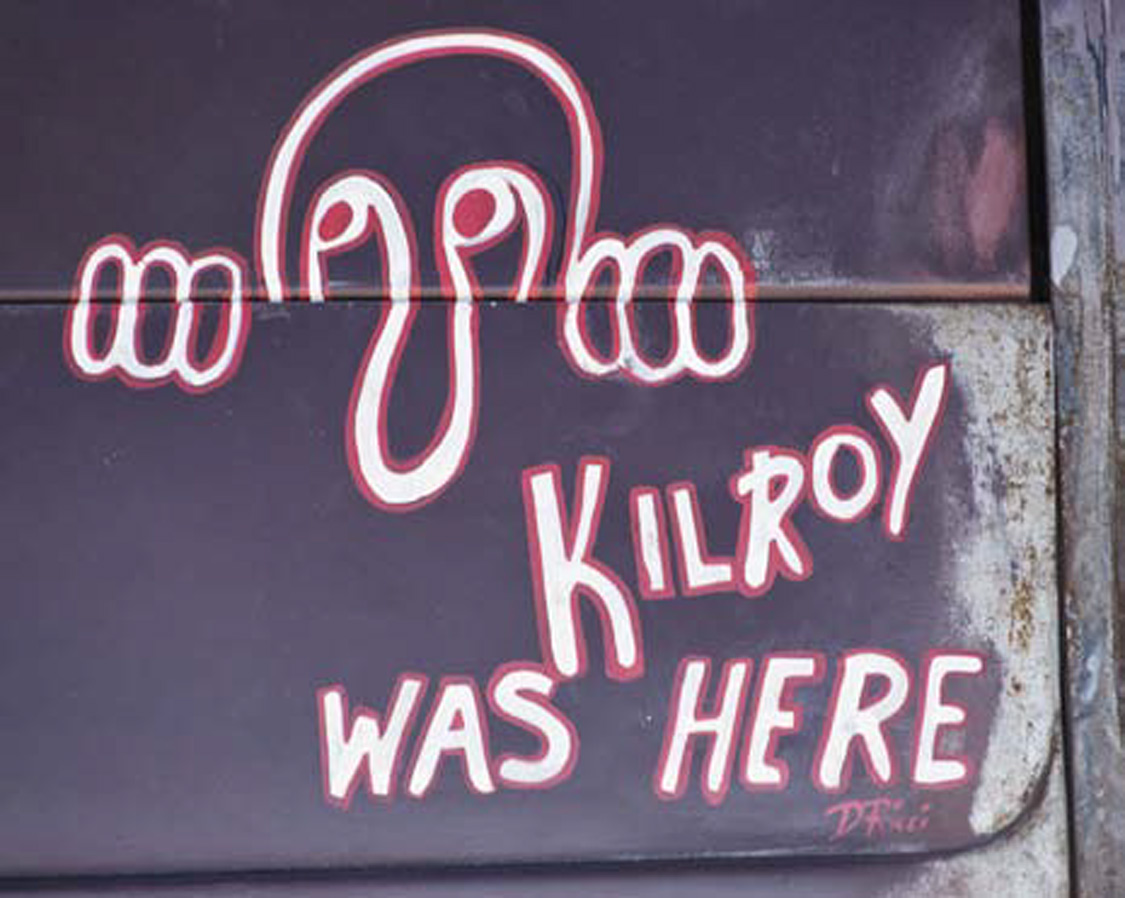
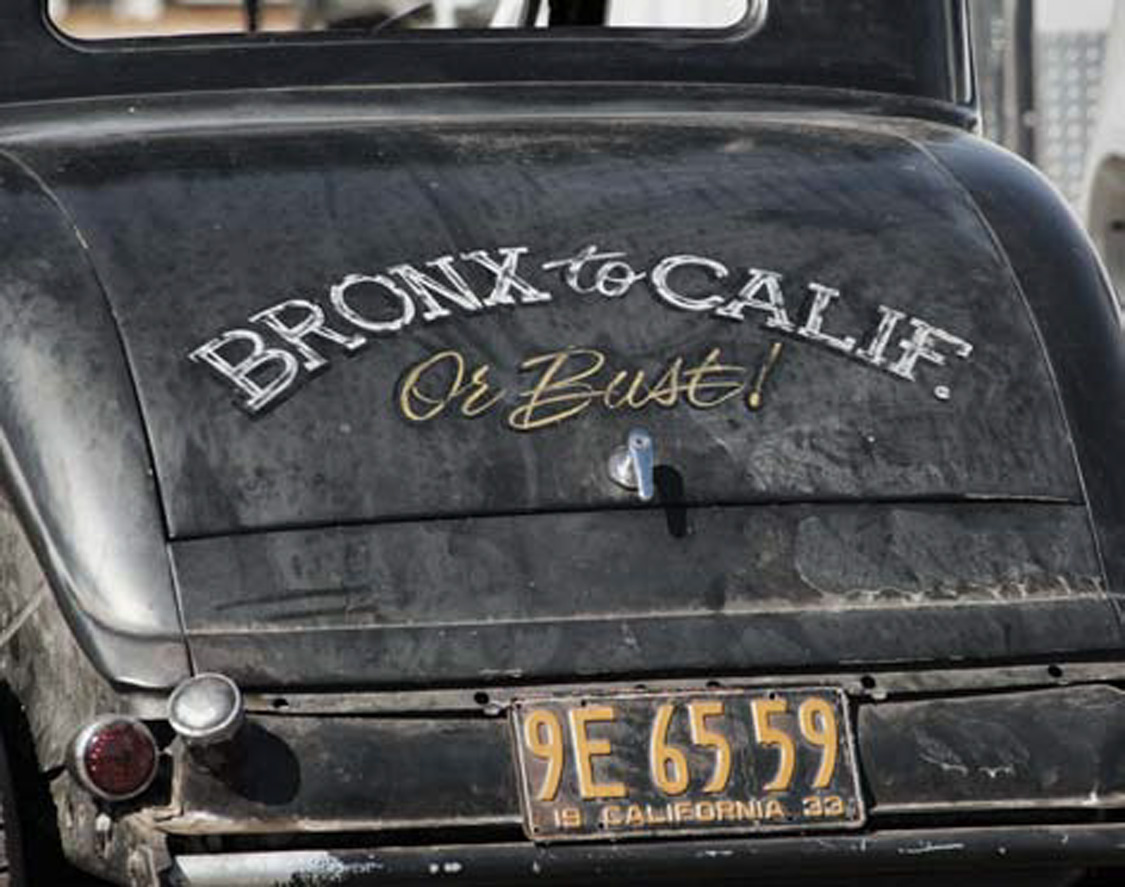
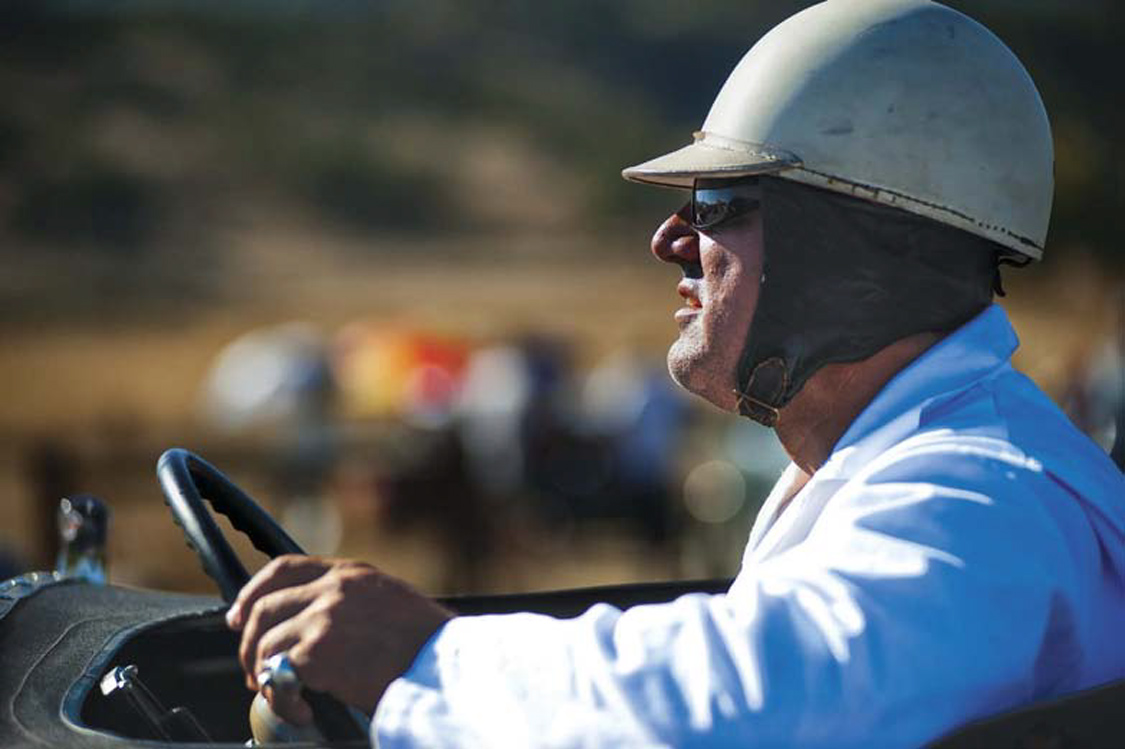
Upon arrival I was very pleased with the totally laidback nature of this event. The racing had already started by the time we arrived so we immediately headed to the starting line. Spectator access is really good you can get right up close to the cars as they are staging. Once the cars finish a run they would drive back around and get in line for another go.
The races started the oldschool way with the official pointing to each driver to make sure they are ready, then the flag drops and the drivers stomp the pedal to the floor. This is a real “run what ya brung” type of event. Not to mention there’s no program to tell you what the cars are, or who is driving them. However, they would announce them over the PA but I wasn’t keeping score and not sure anyone else was either. It seemed they were all having too much fun to be bothered.
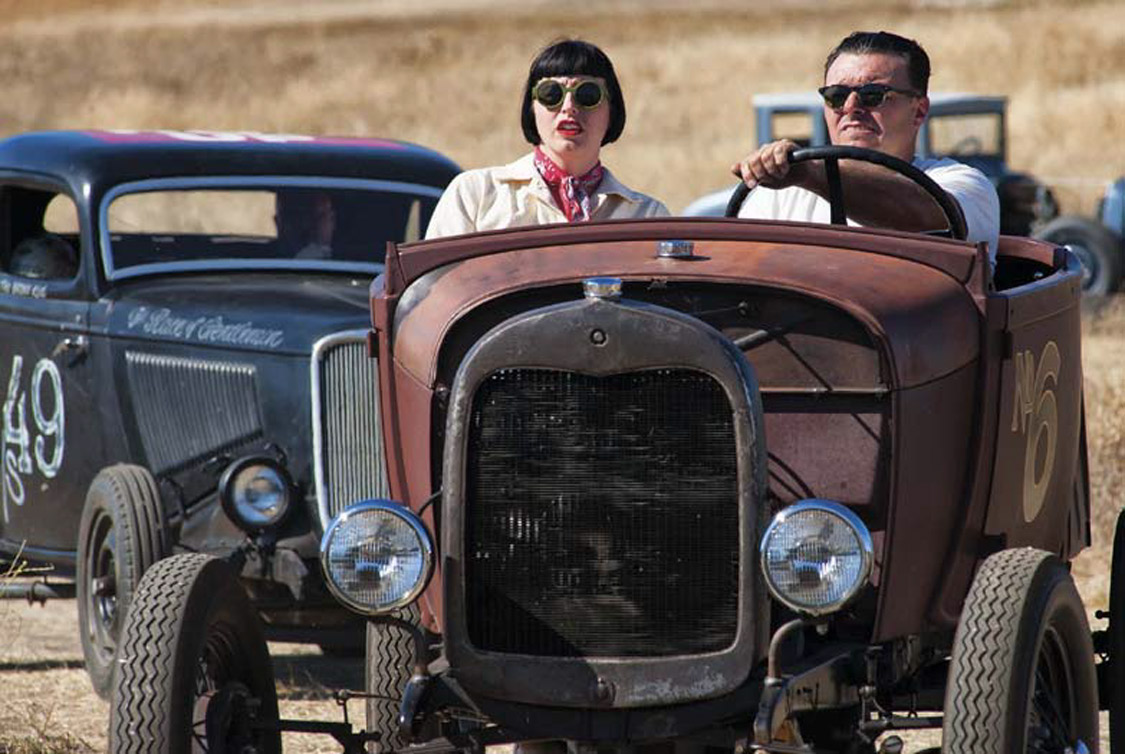
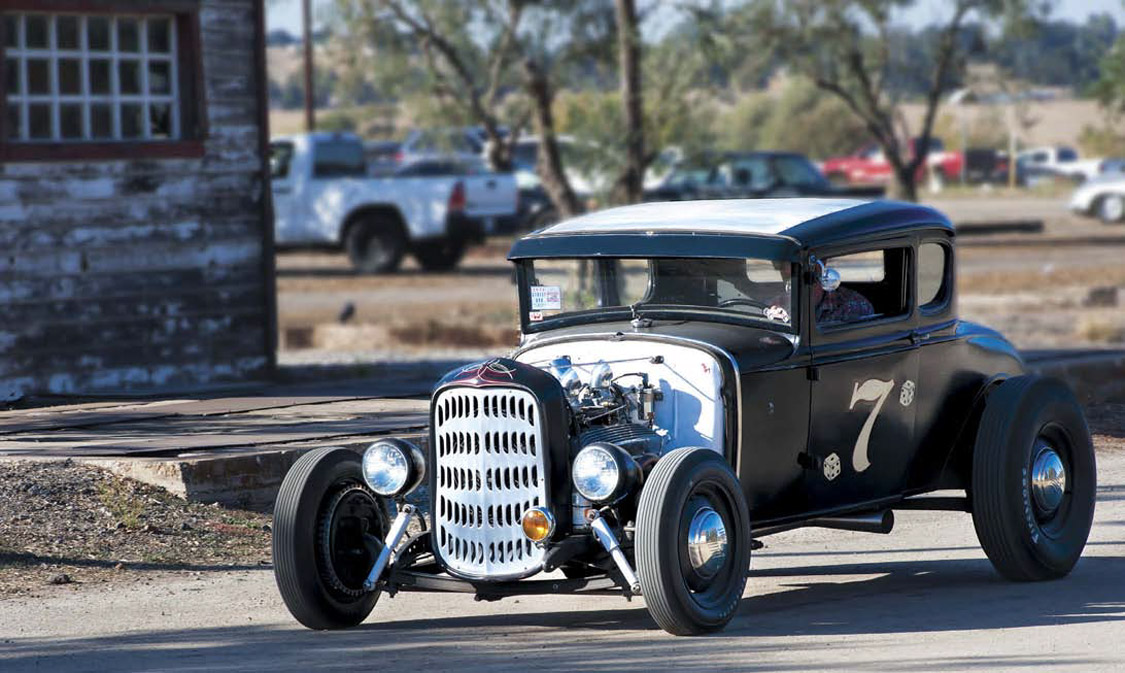
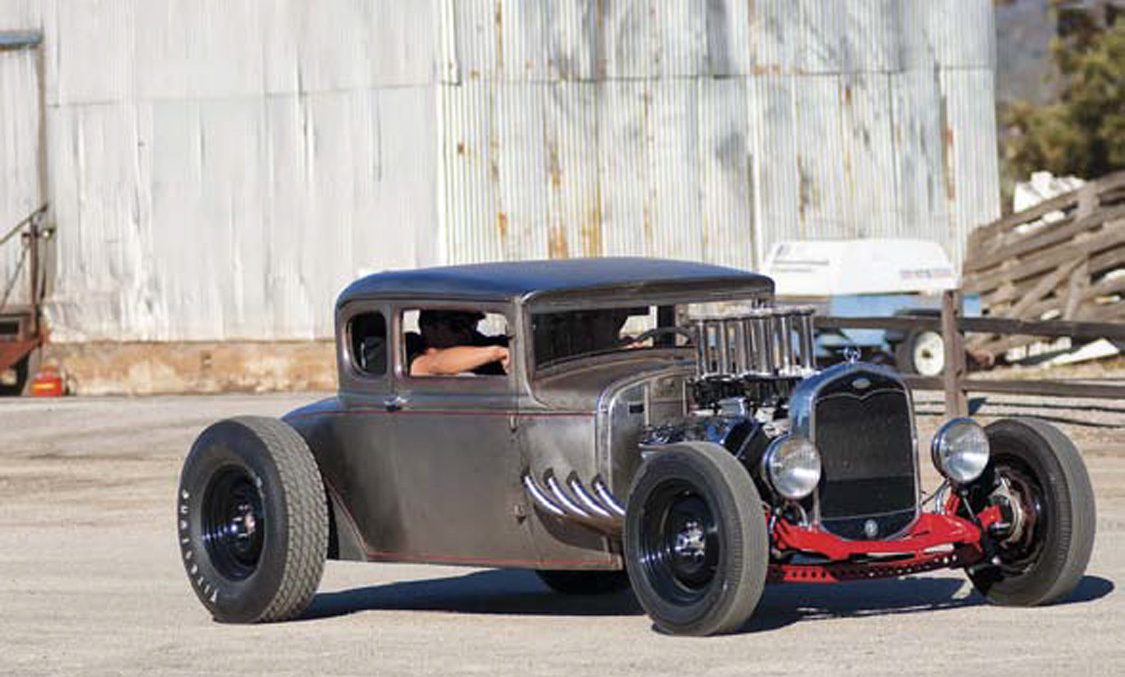

There was a driver as young as 18 years old racing a car he built himself and one racer I saw looked to be on the high side of 80. The ladies were pretty well-represented too – and really held their own, winning the majority of the races they were in.
One of my favorite drivers of the day was in the car with “Hop N Mad” painted on the side of it. He was tearing down the dragstrip wearing a bunny suit. He must have been roasting. Another of my favorites, and one I recognized from the historic car races at Laguna Seca, was the Baldwin Mercury Special. This car has really great looks and the speed to back up those good looks.
There was also a swap meet for period pieces only, and a car show of the pre 50s period. The event was pretty well set up with enough food vendors and toilets for all. The were also a few good merchandise stands for all your cool vintage hot rod shirts and such.
…taking their cars out on the track and not taking themselves, or the racing, too seriously.
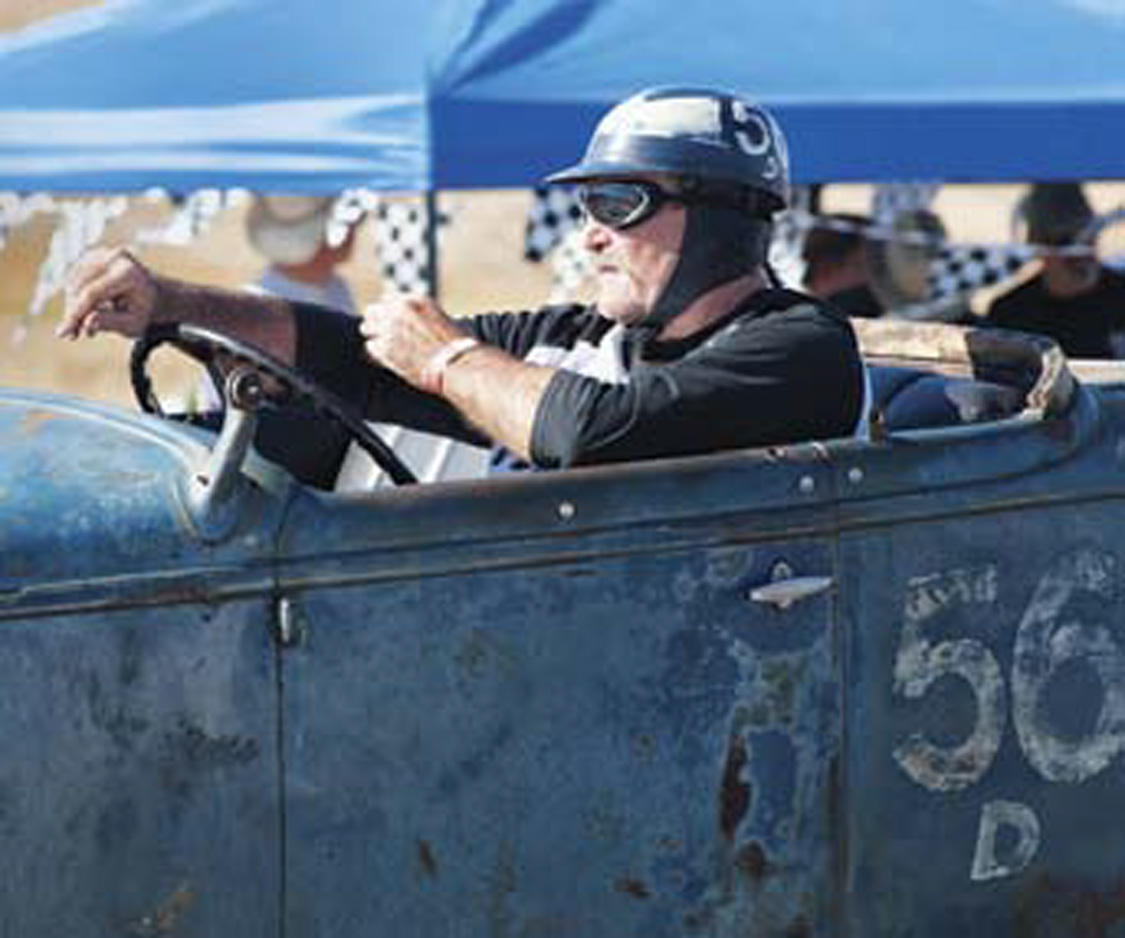
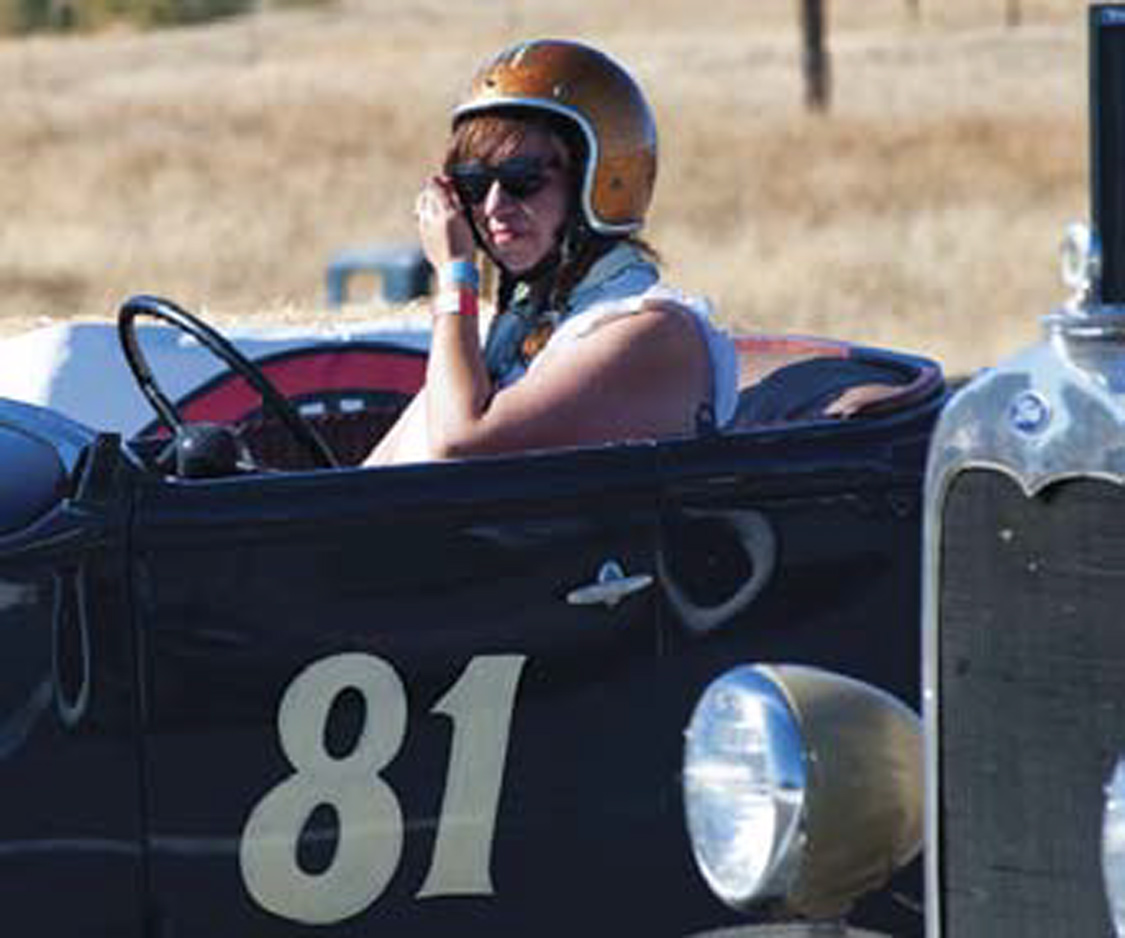
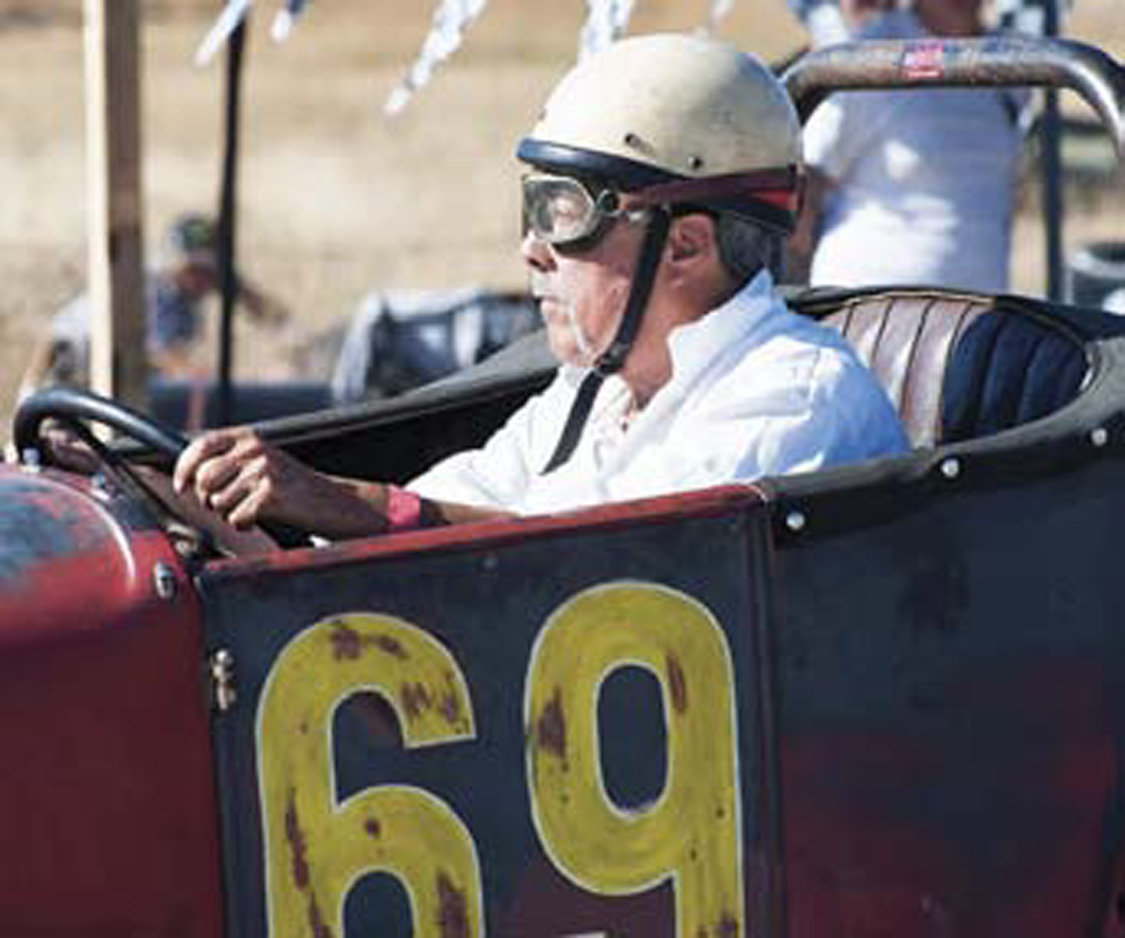
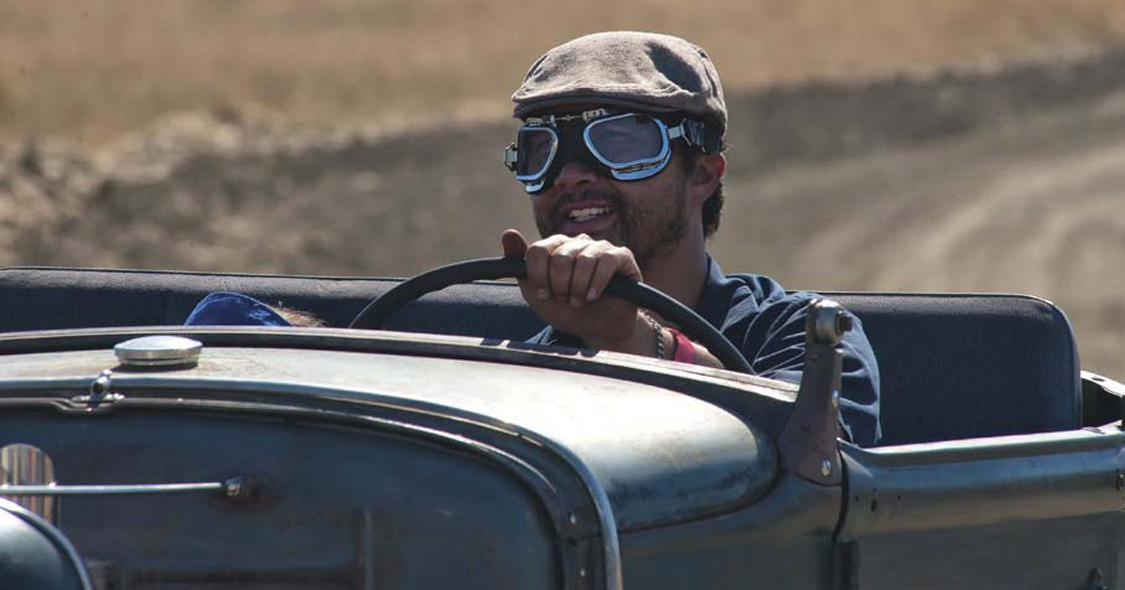
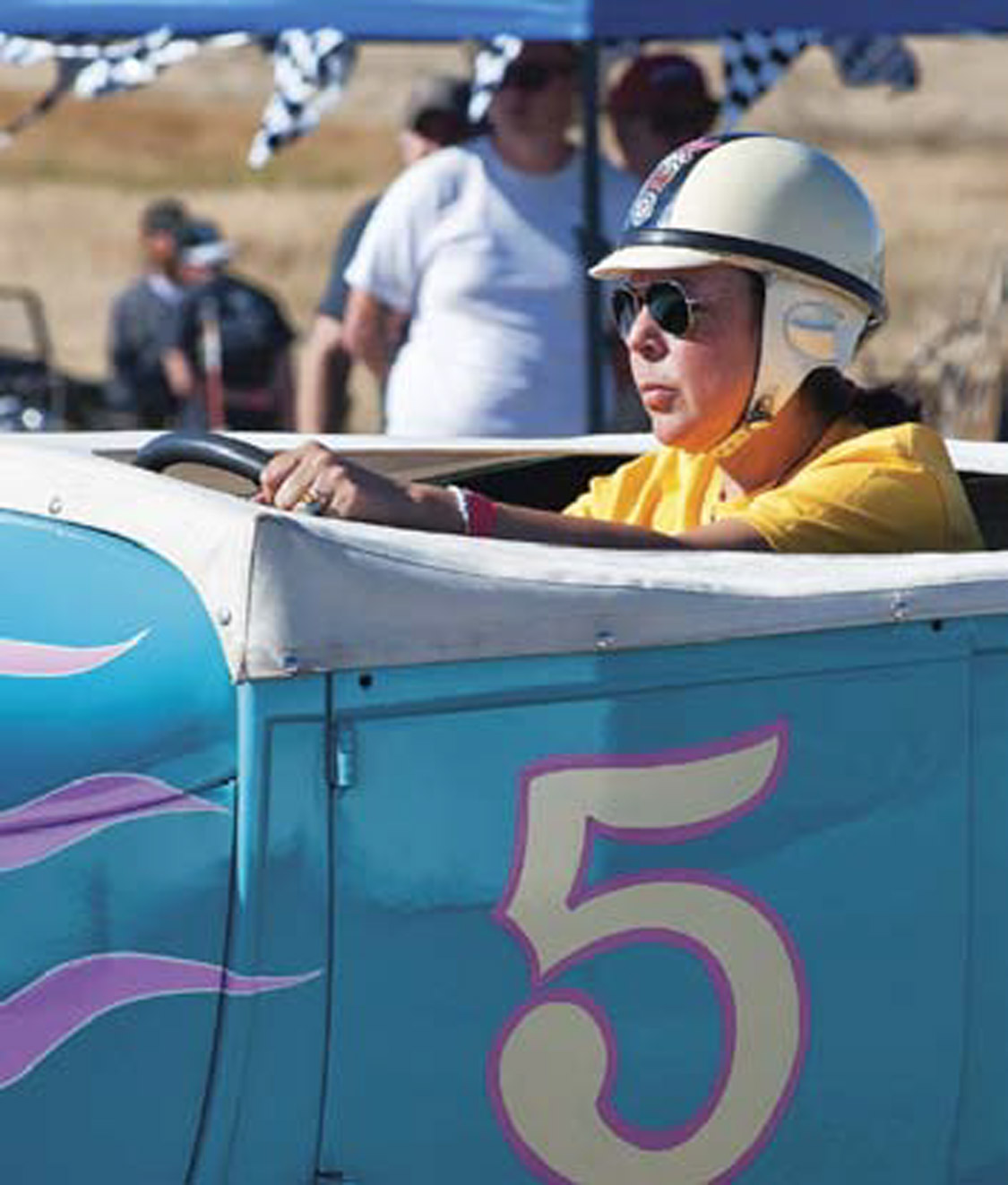
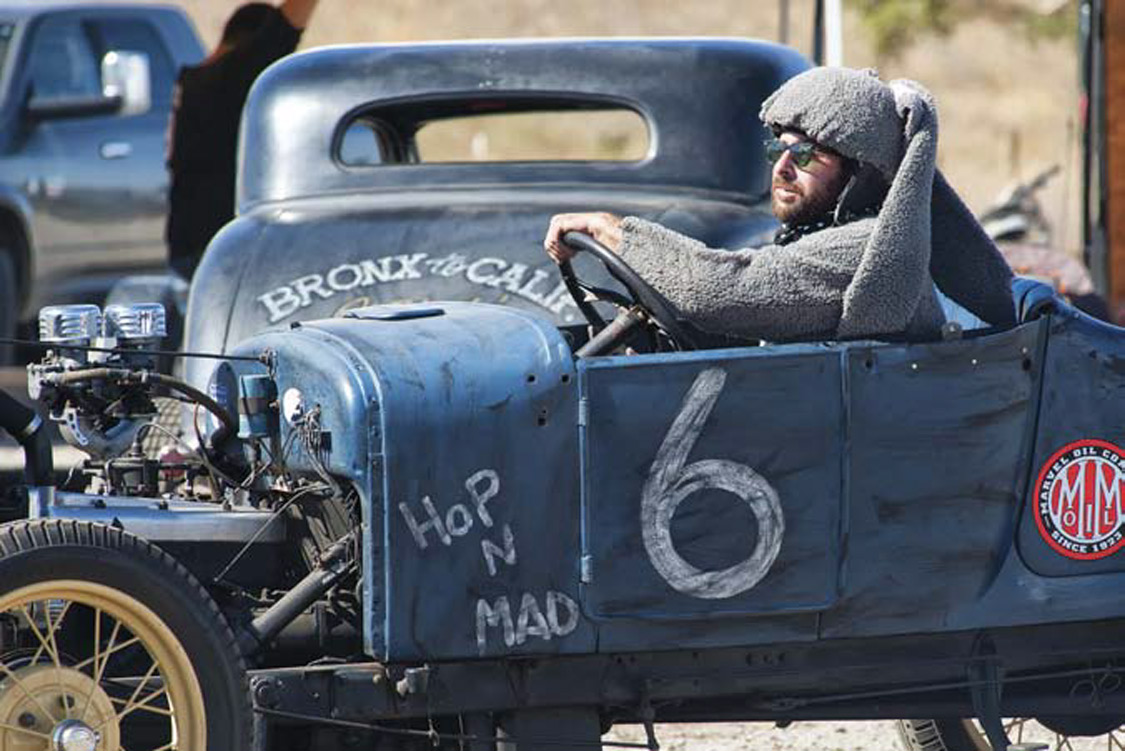
I thought this was a fantastic event at a beautiful location. Just the right crowd — and no crowding, as they say. I wish they would have provided an entry list or posted the results on their website, but hey, that might make things too serious and spoil all the fun.
I will definitely be going back again next year. It was very refreshing seeing people enjoying taking their cars out on the track and not taking themselves, or the racing, too seriously.
This is a real “run what ya brung” type of event.
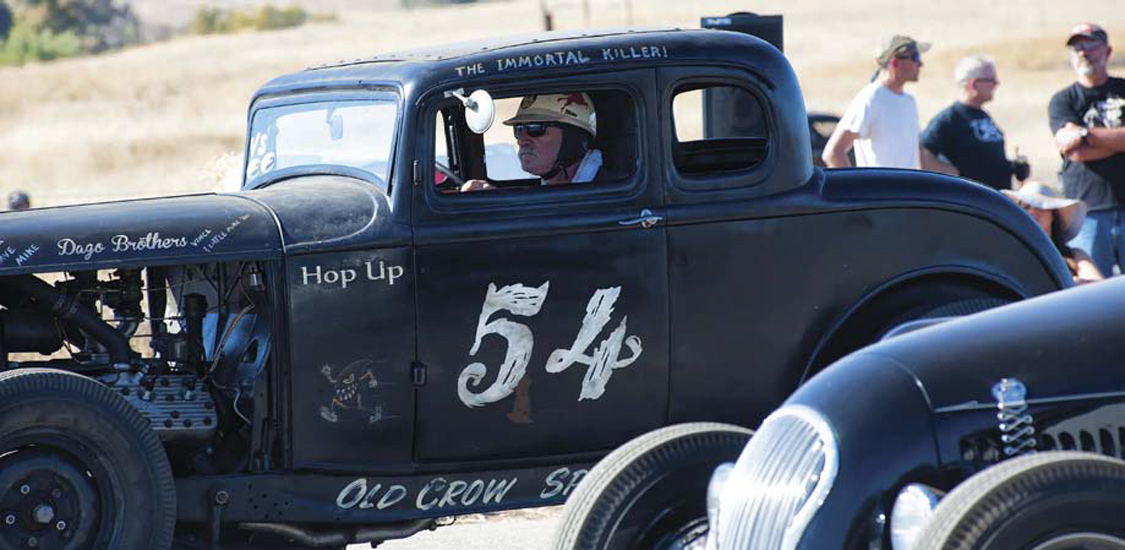
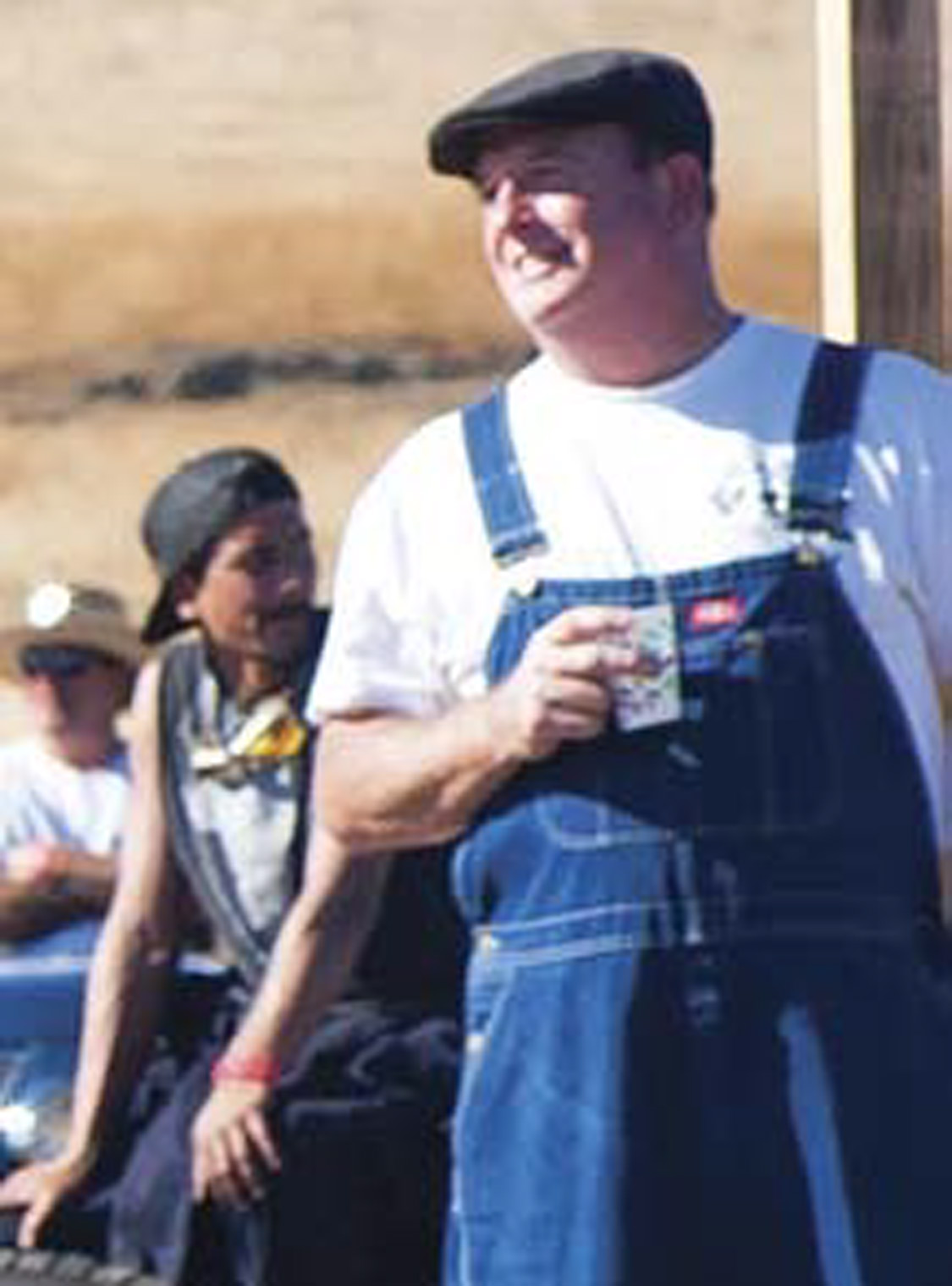
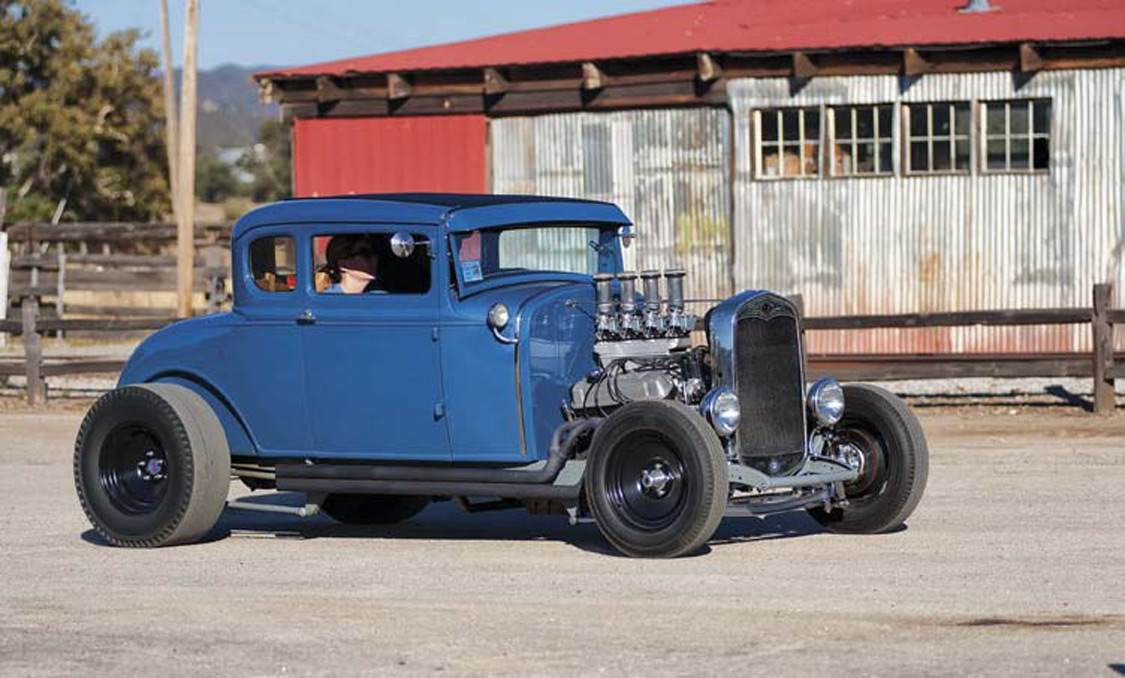

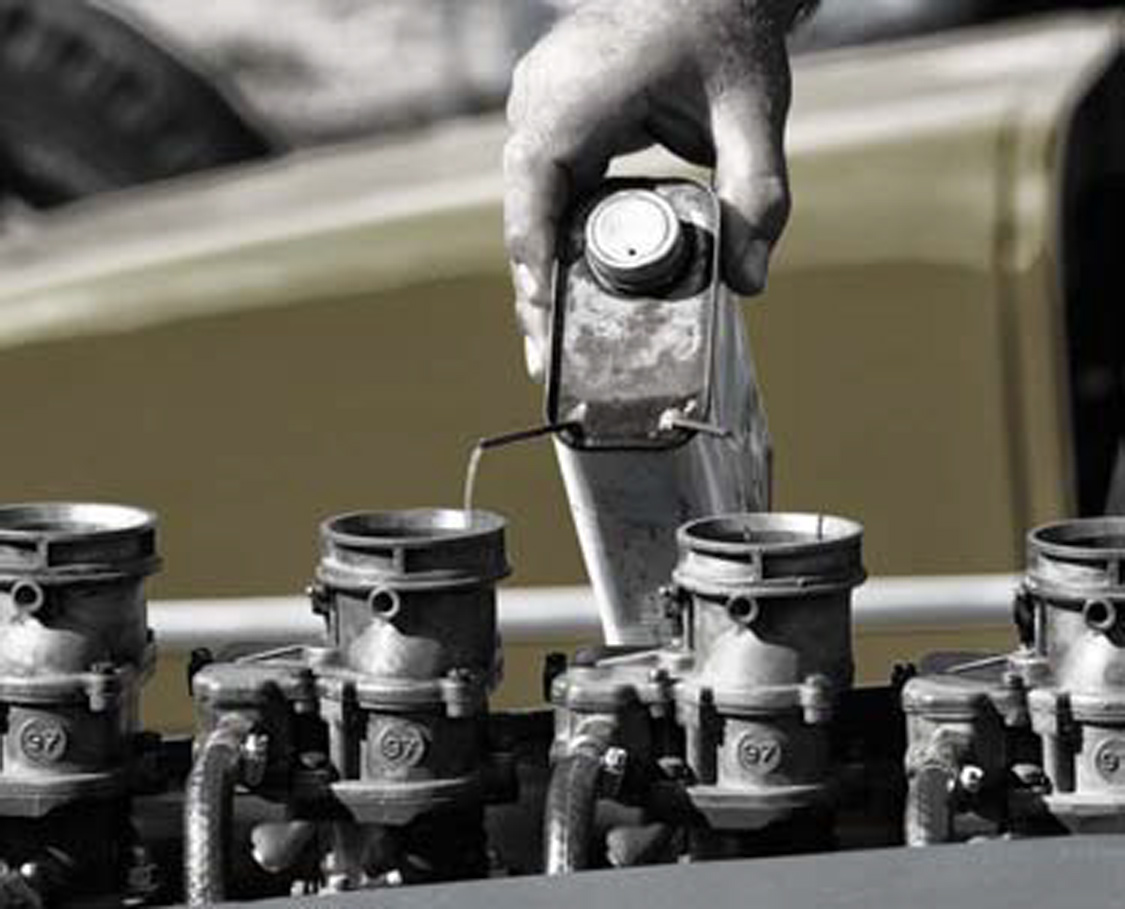
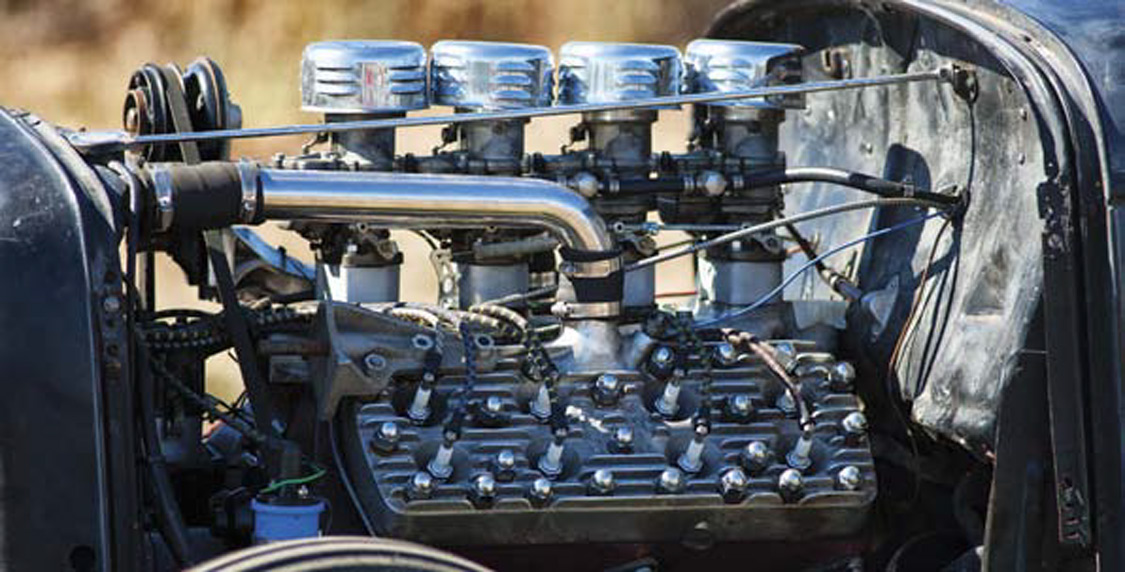
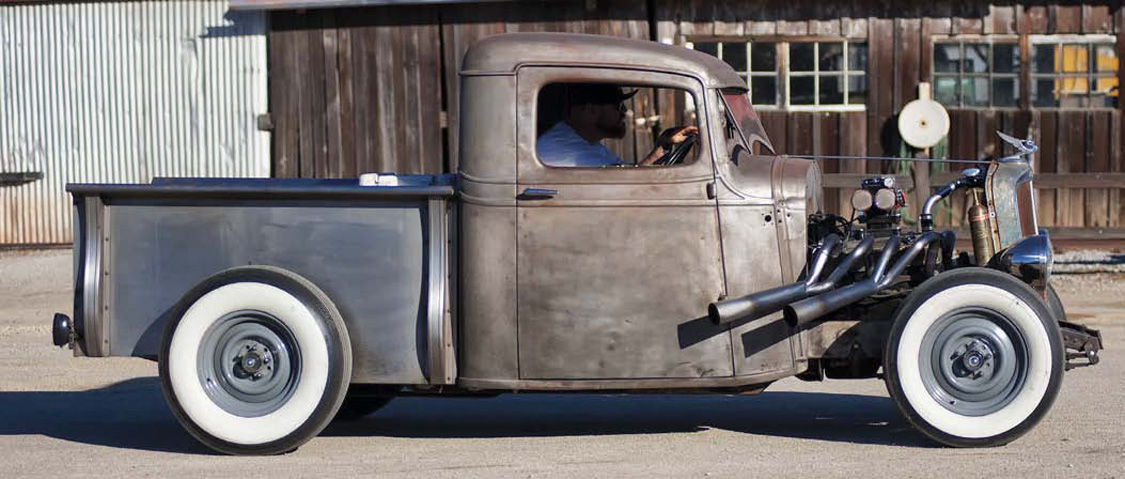
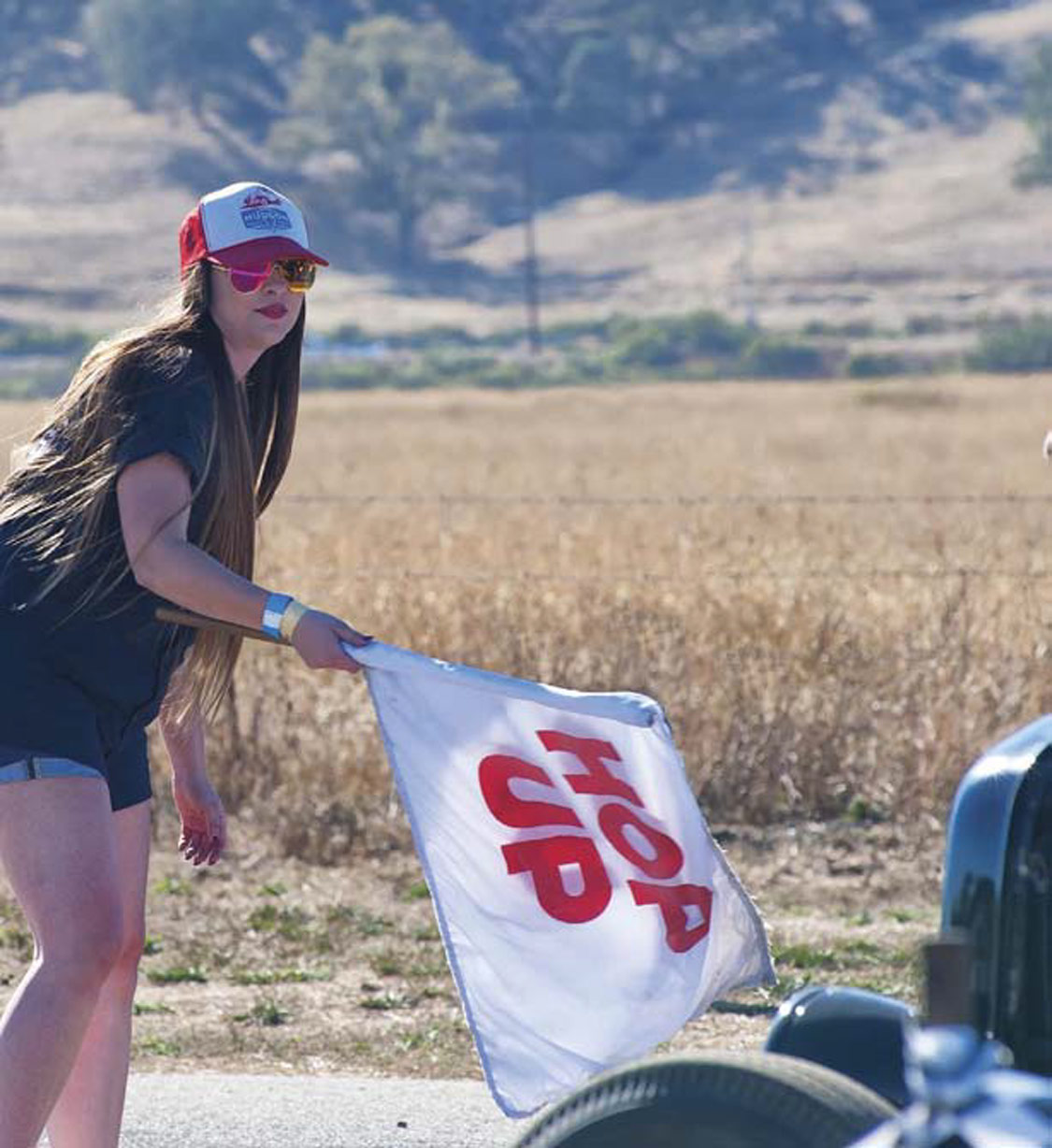
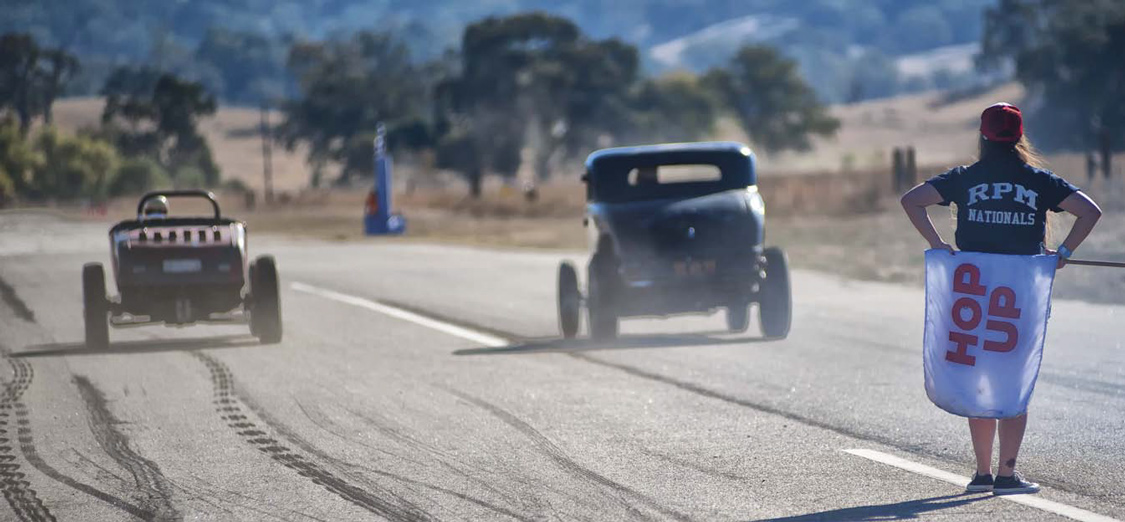
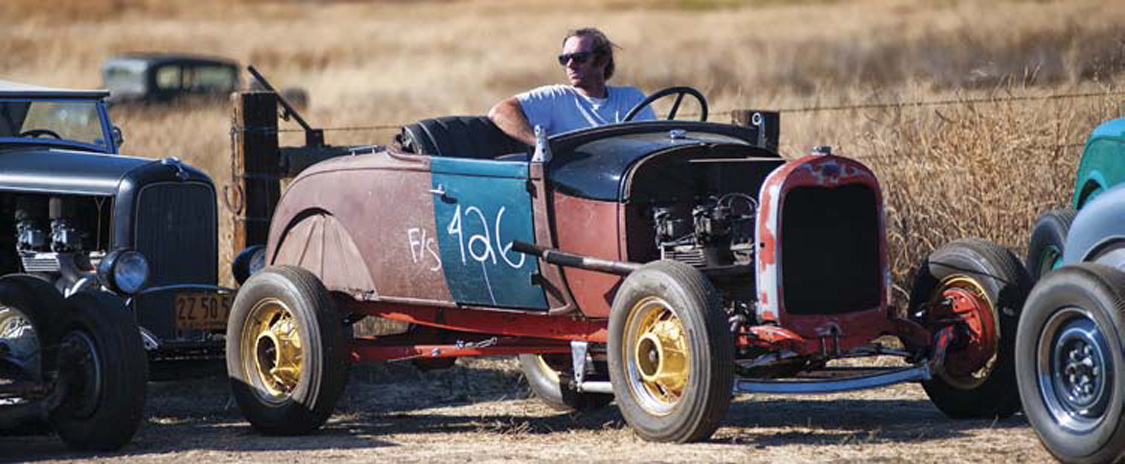
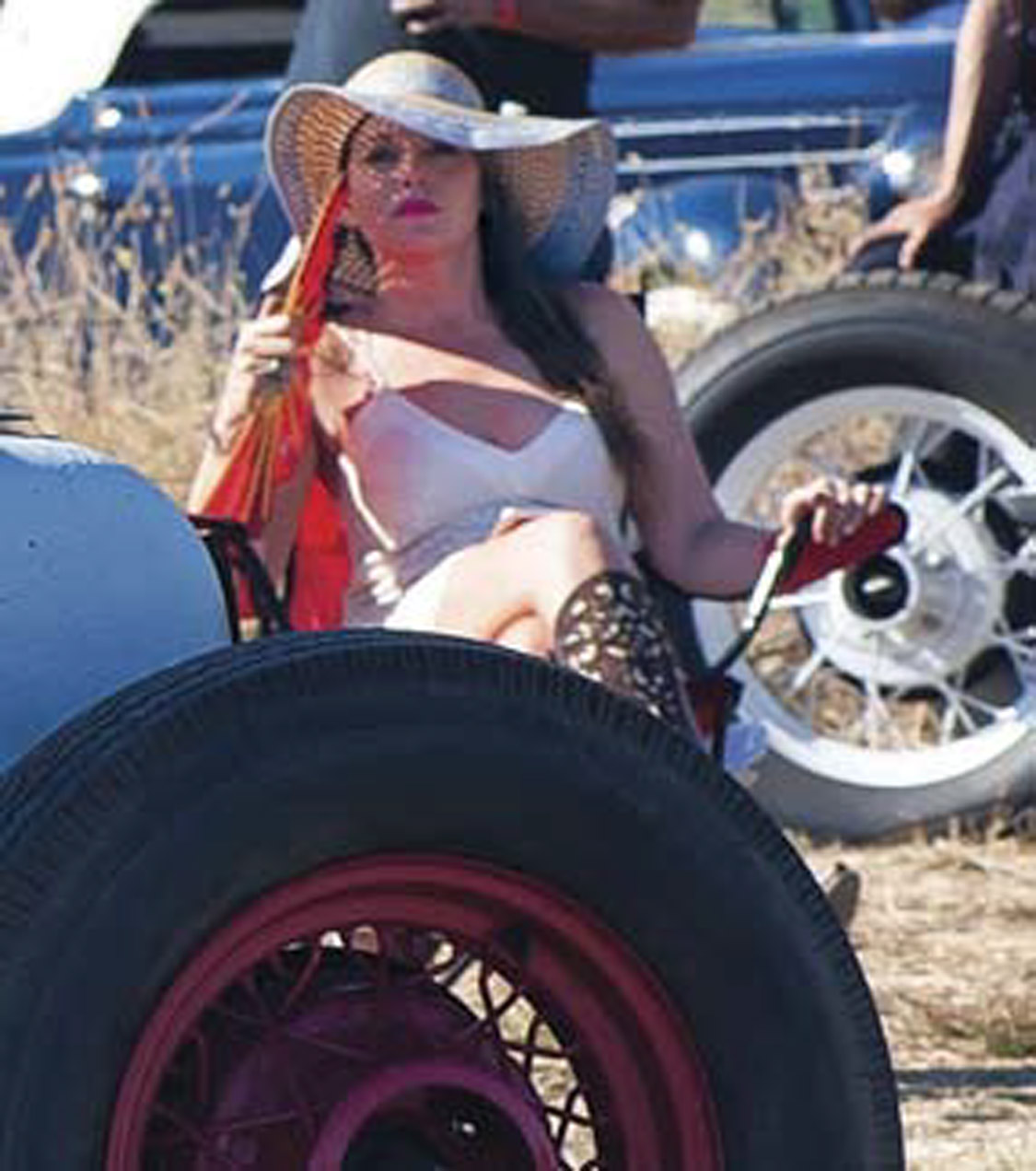
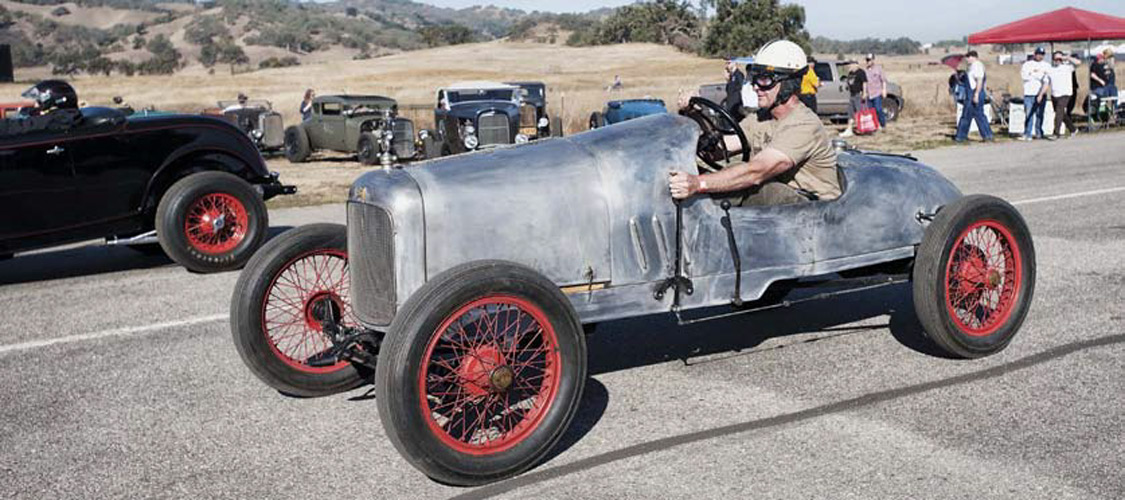
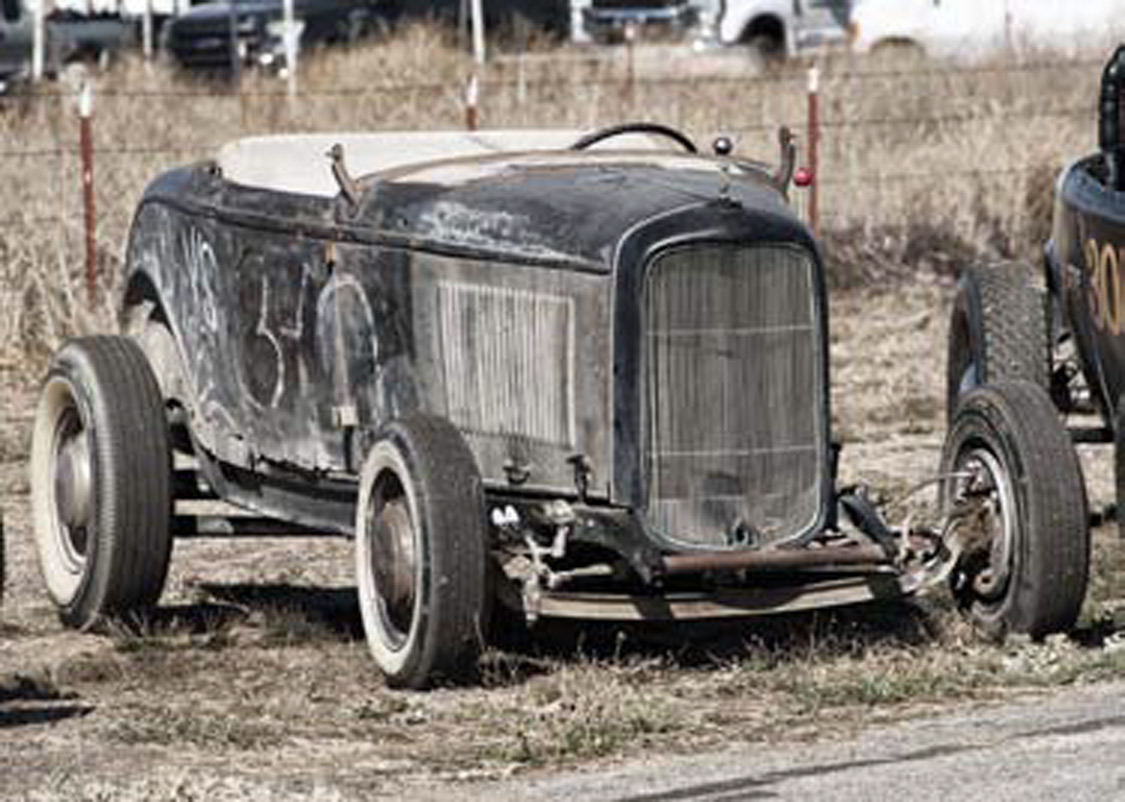

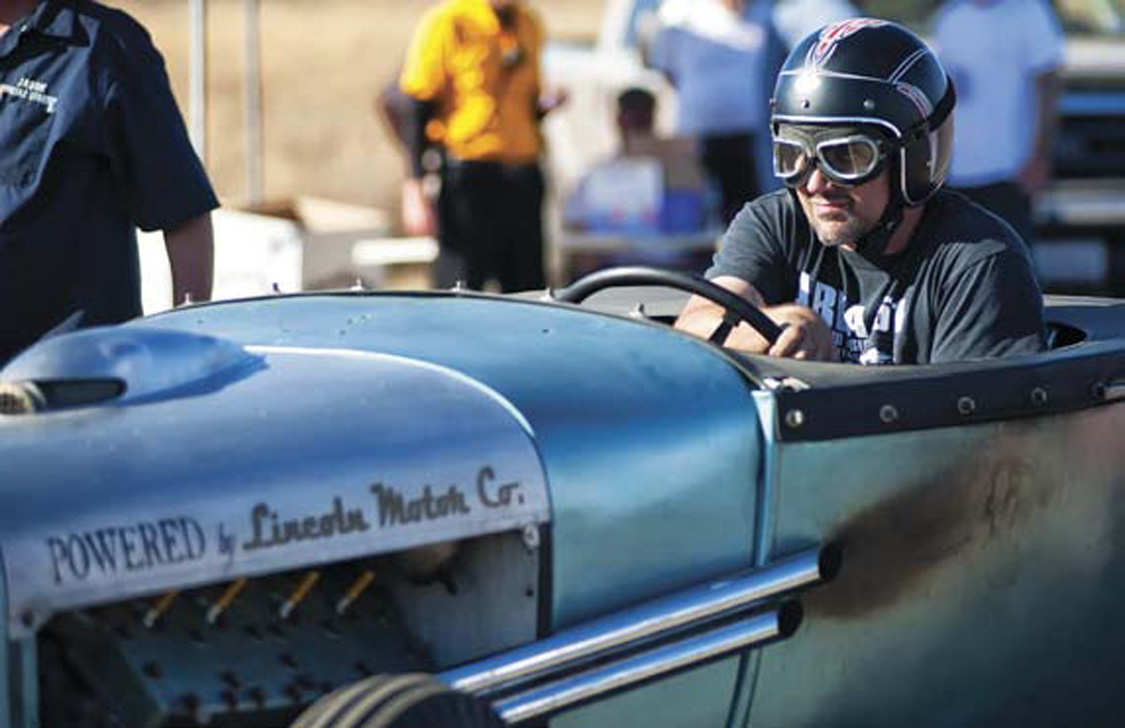
We purchased the 1931 Ford Pickup in February of 2006. It had already been sectioned 3”. The 350cc Chevy engine, the Oldsmobile narrowed rear end, and the automatic transmission were all in place. The bed of the pickup was done, but there was no top and the tailgate was not installed. The power windows and the tilt steering wheel were also in place.
My husband (Jerry) drove it home gingerly with no seat. He wanted a new project and so the work started.
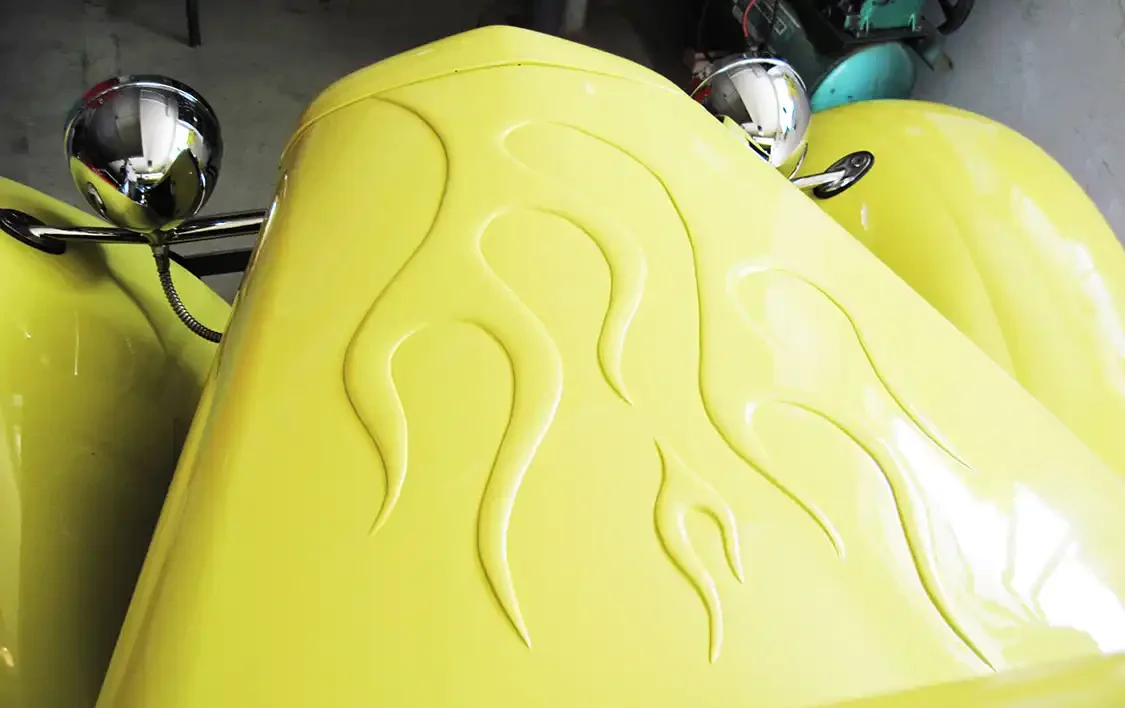
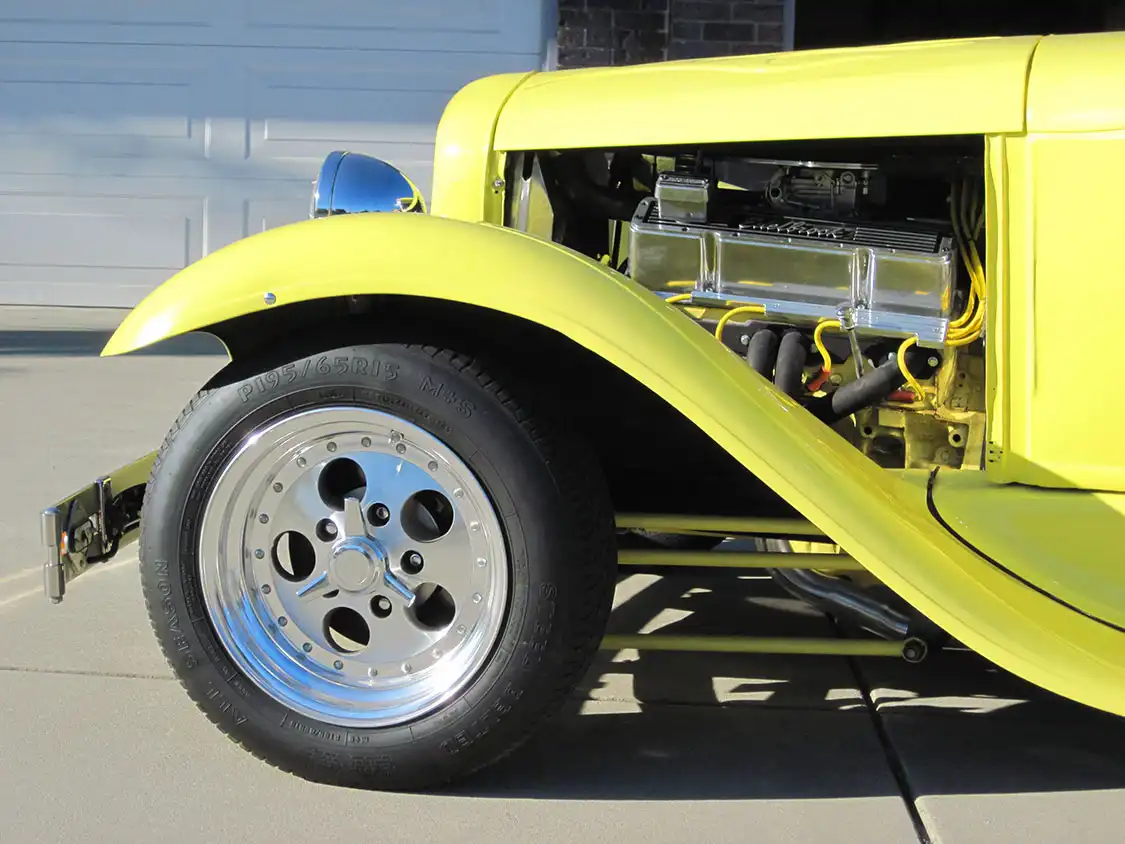
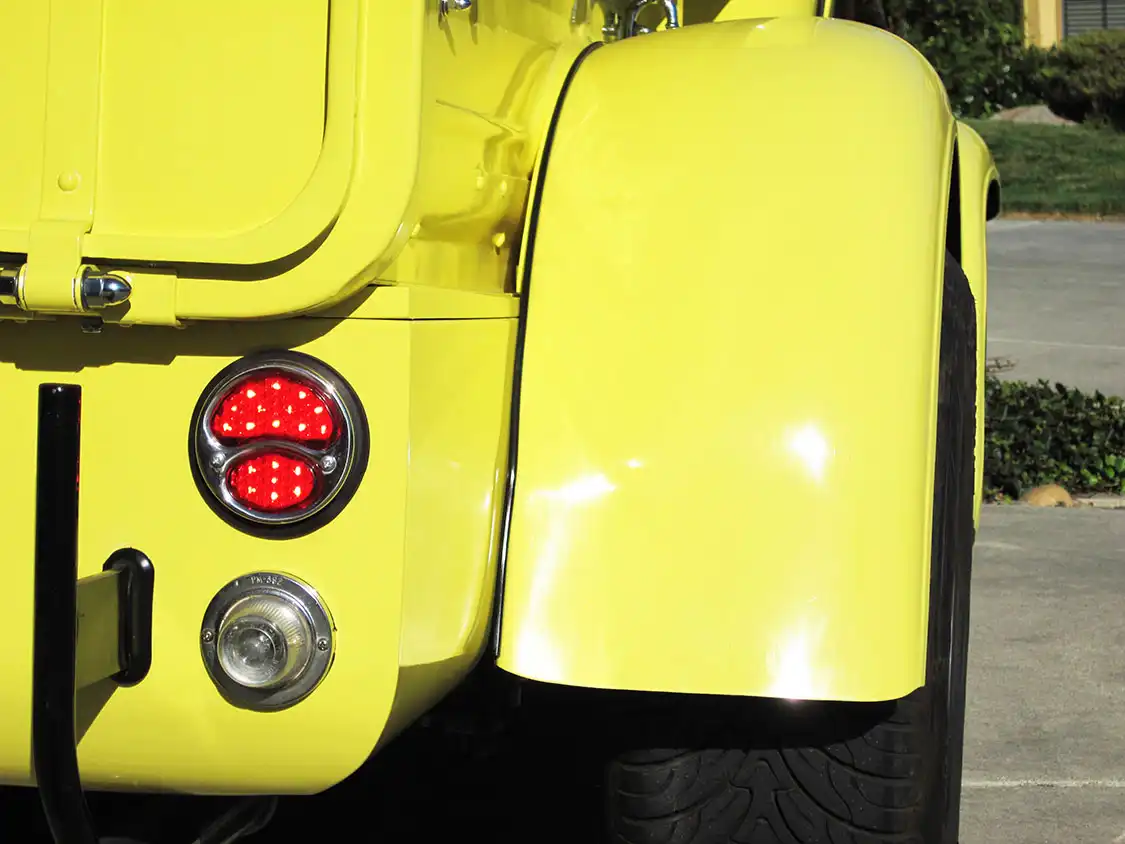
After doing all the work, my husband decided to sell the pickup. He was getting very tired of cramming his 6-foot frame behind the steering wheel. I said, “If you’re going to sell it, why can’t I have it.” It fits me perfectly. I’m only 5’2”.
We gave my Honda to our daughter, and the 1931 Ford Pickup has become my daily driver ever since. I never have to move the seat or adjust the mirror. I love it.
…the 1931 Ford Pickup has become my daily driver …
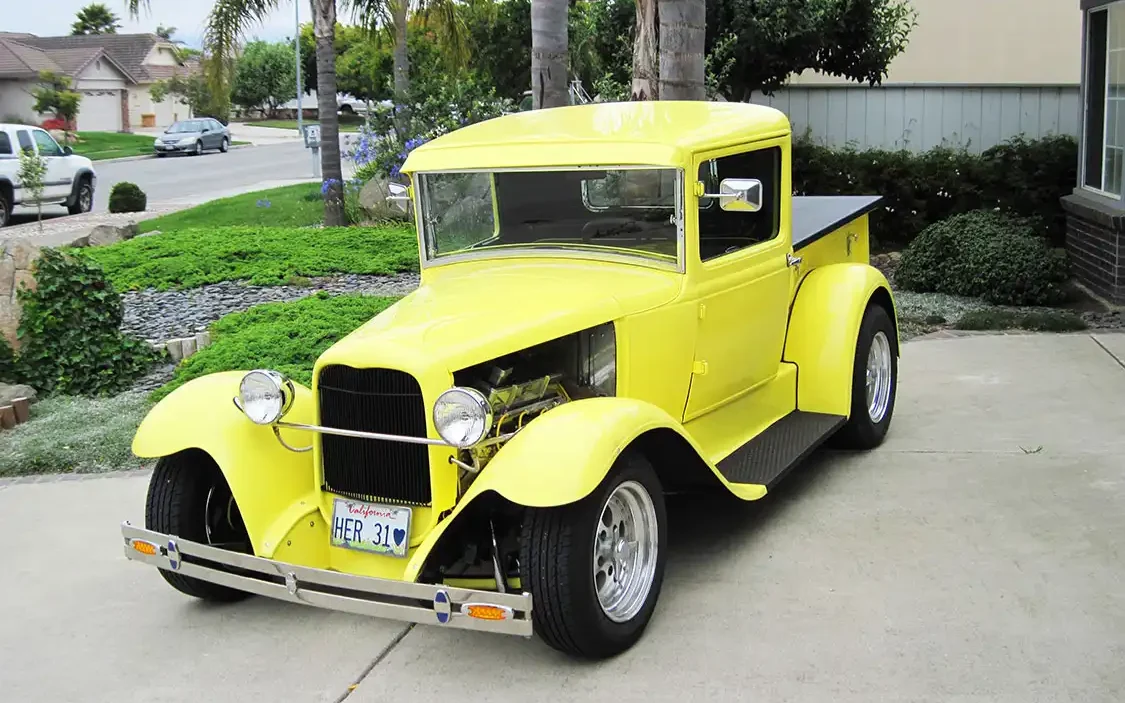
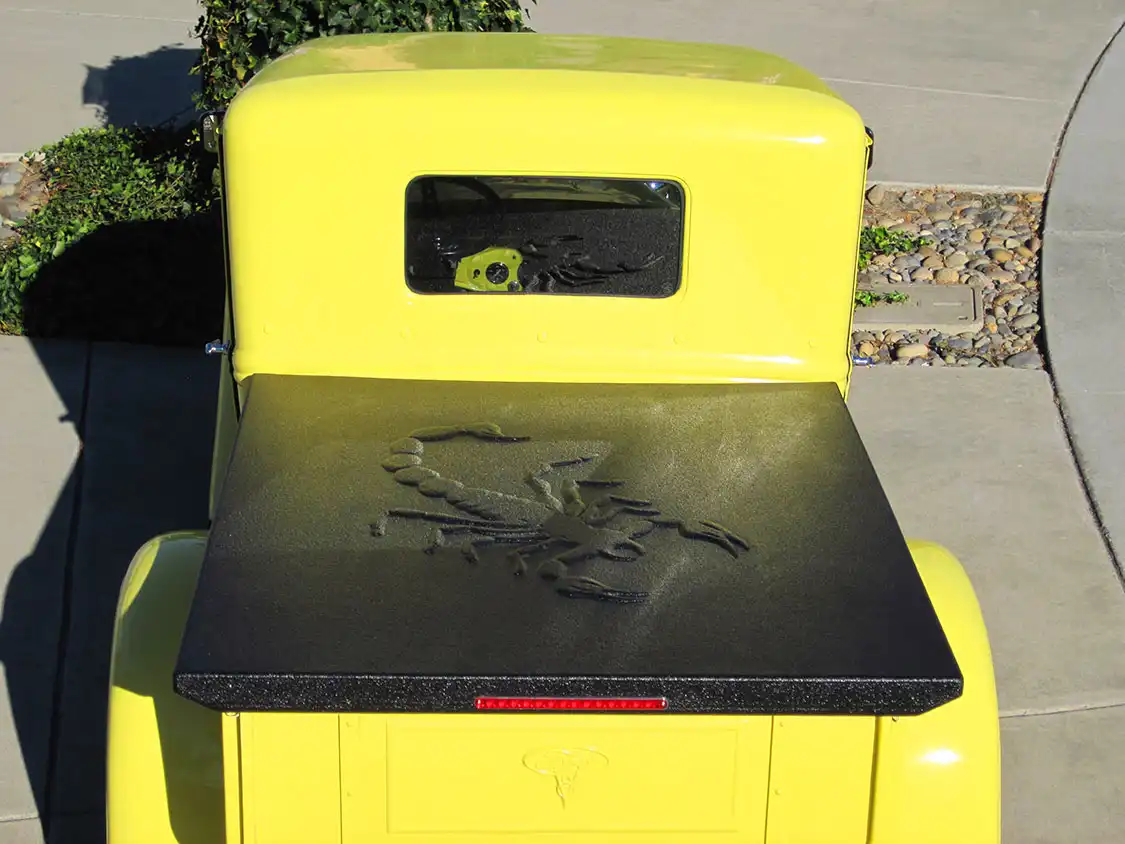

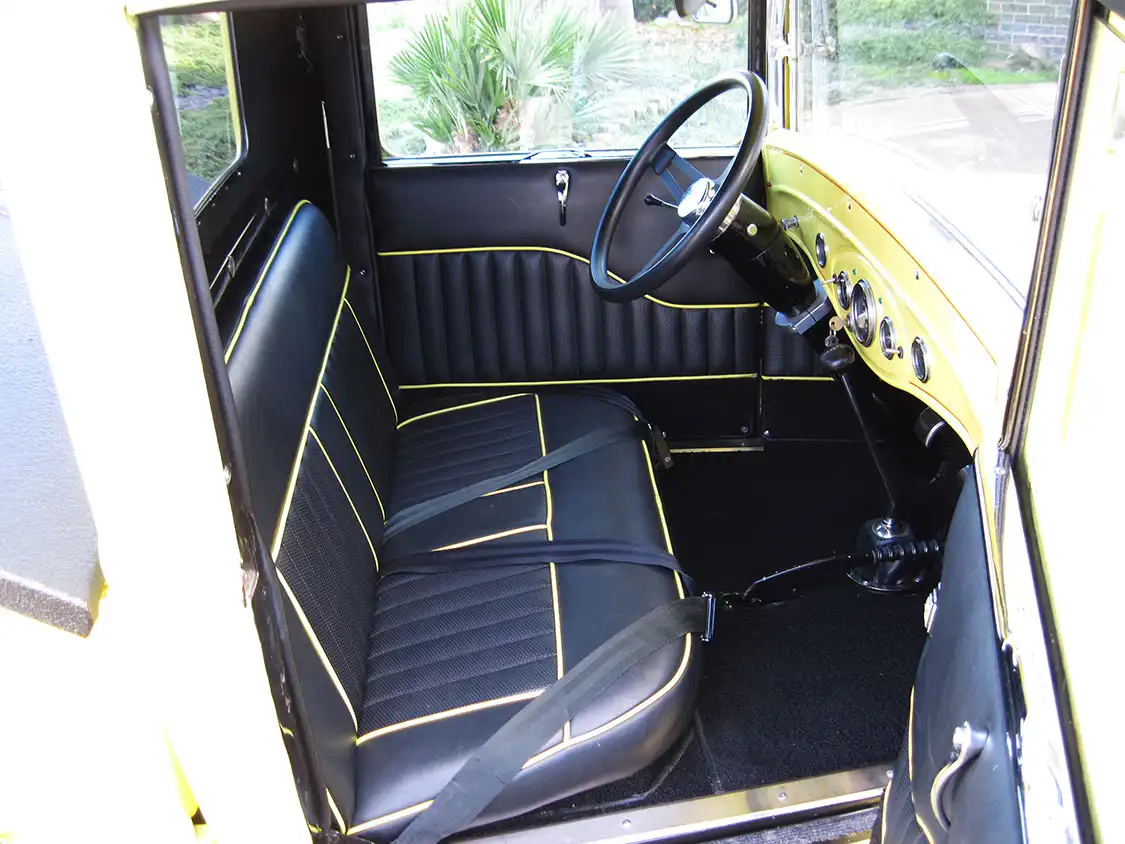
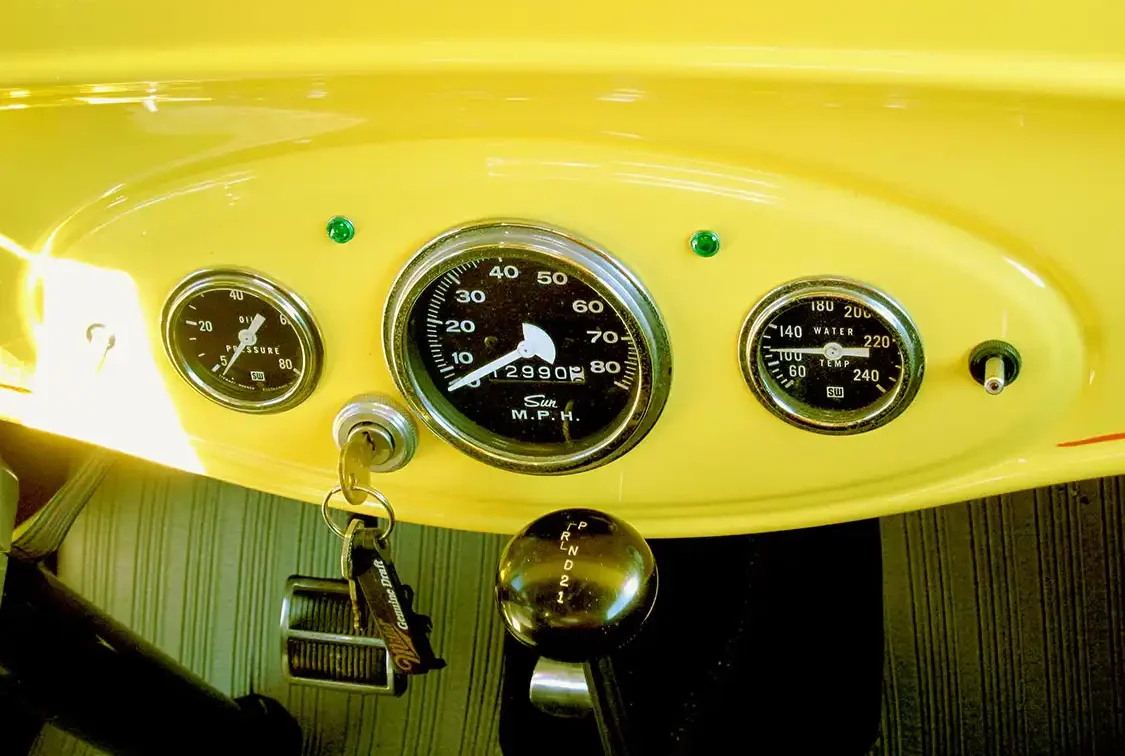
EXTERIOR
INTERIOR
ENGINE
TRANSMISSION
RIGID’s Revolve Light Pod is the perfect solution for those who want RIGID’s legendary quality in a compact package. The Revolve Light Pod is built with a high-grade aluminum alloy housing and heatsink, and is coated with a two-stage powder coat light texture finish in black, it features an impact resistant nylon bezel that offers an extra layer of protection against road debris and sun exposure. The Revolve Light Pod features a Broad-Spot™ optic that combines the attributes of a spot and flood beam pattern projecting the perfect amount of light to tackle almost any road or weather condition. The Revolve Light Pod also features a back-lit trim ring available in amber or white that is significantly brighter when compared to other back-lit applications.
Website:
https://www.rigidindustries.com/revolve-landing-page
MSRP:
$219.99
Generally, truck trends are unpredictable and cycle quickly through the ranks of the top industry builders and ballers. F-100 bump-sides and pro-touring, patina-paneled C10s are just a few recent examples of popular projects that the average Joe wouldn’t think to produce until they see a fully completed custom gracing the pages of national publications or influential social media channels. These ideas and completed concepts come from the mindset of being unique with the goal of making a statement at massive events like SEMA, LST and Texas Heatwave. With that said, I think it’s safe to say we all see the next major trend hurling down the pipeline like a 6-foot surfer named Bodhi riding a 15-foot wave off Bells Beach during the 50-year storm. (That was a “Point Break” reference if you didn’t catch it. What a great ’90s movie!)
Speaking of the ’90s, if you were a natural born truck junkie finally making it to the legal driving age around those times, you most certainly wanted a Chevy C/K truck since they were literally everywhere. Everyone from utility company employees to school district secretaries used these heavily produced pickups for their day-to-day operations. Even your grandpa’s grocery-getter was most likely an ’89-’98 Chevy. They came in so many different visual styles with factory options galore. Originally designed by Donald Wood in 1983, Chevy was able to move 551,223 of these GMT400 trucks by 1989 alone according to the Standard Catalog, not to mention the popular 454 model released in 1990 that sold 16,953 units over the four years with 13,748 of those units selling in the first year of production alone.
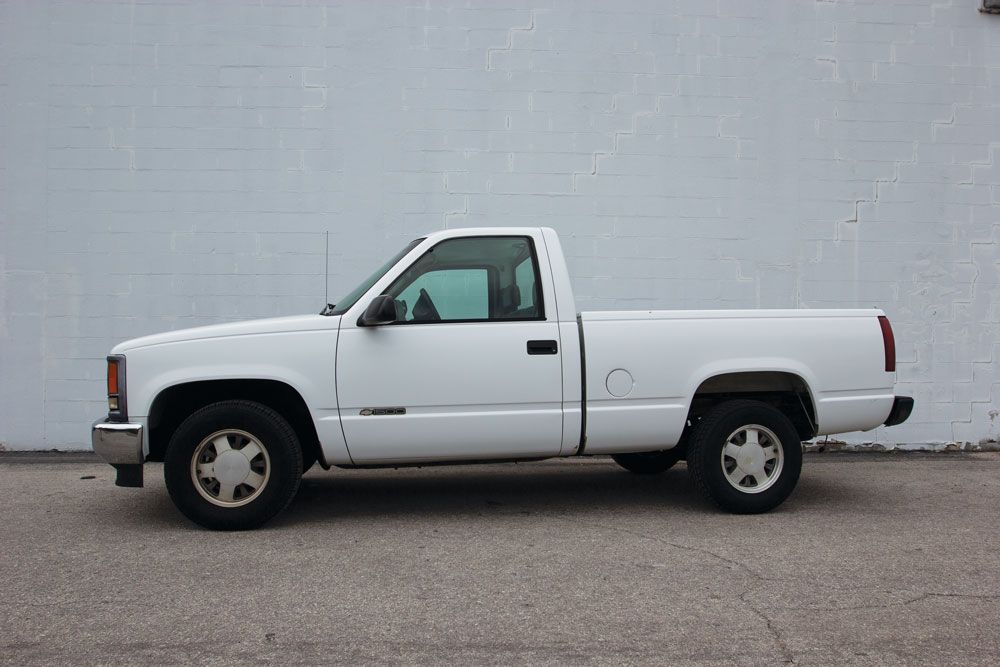
With that heavy of a number, it’s easy to see why we not only saw a massive increase of these trucks in magazines, but also why the custom aftermarket scene is heating up so much right now. These trucks are still pretty easy to come by and the demographic of buyers are slightly older and more well-off than your average new-truck enthusiast. The guys who wanted these trucks in their teens are now older, generally successful and more comfortable than they were at 16 years old. These factors are driving the great custom parts manufacturers to focus on these industry icons to get ahead of the curve.
It’s easy to talk the talk, but it’s far more impactful to walk the walk. So, we put on our Airwalks and jumped into the deep end of desire by picking up a running, driving 1995 Chevy C/K truck from the original owner for a smooth $2,000. Cold A/C and a solid cranking 4.3-liter V-6 gave this truck the appeal, but a full gas tank and a fresh oil change just shows that the previous owner still has love for this 20-plus-year-old family member.
In the next few issues we are going to take you through the process of giving this truck new life on the same old roads it’s been cruising down since its inception, first starting with suspension, brakes and wheels/tires, followed up with a facelift for the ages. The plans don’t stop there, but you’re going to need to stick to the script the see the next steps. If you’re not a subscriber already, I implore you to do so. If this truck doesn’t motivate you to go out and start wrenching on your own project, I’m not sure you picked up the right publication. Now let’s get to the good stuff!
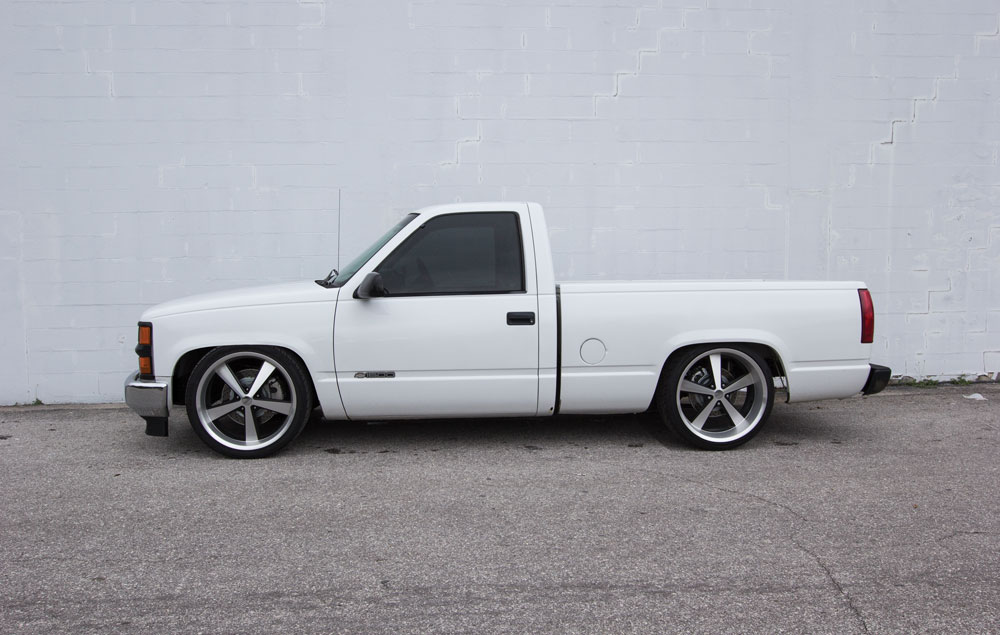
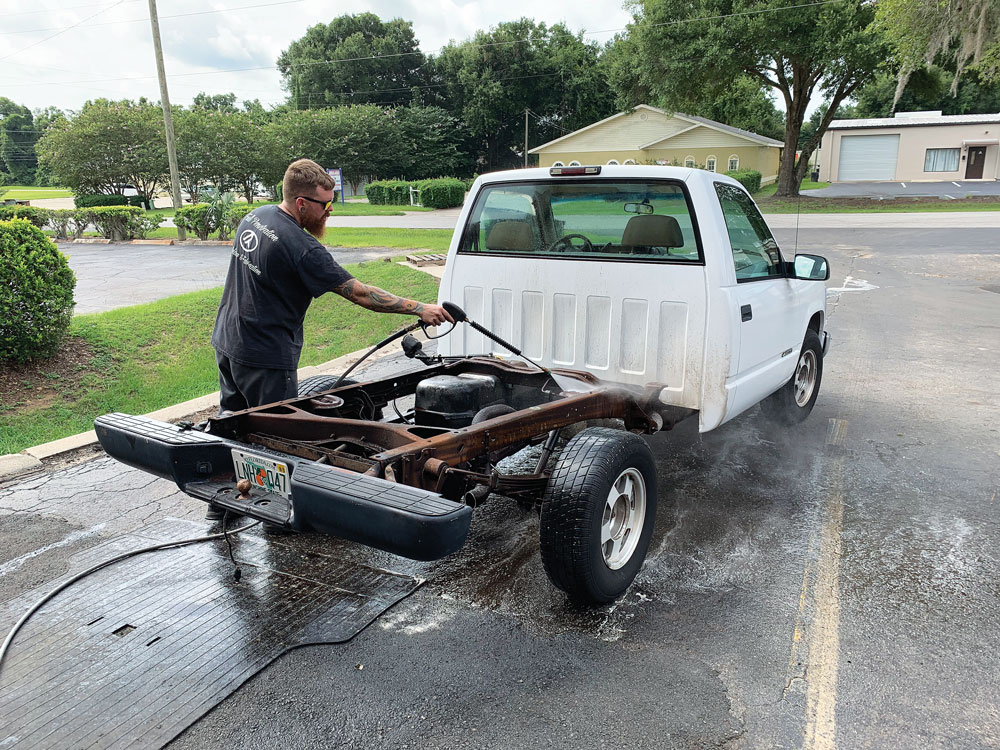
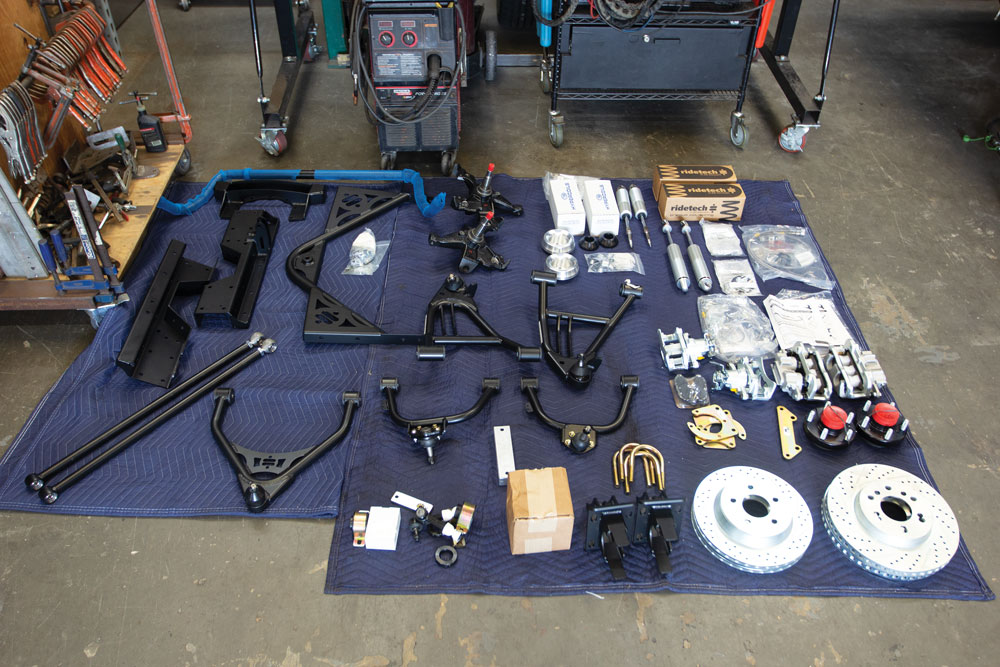
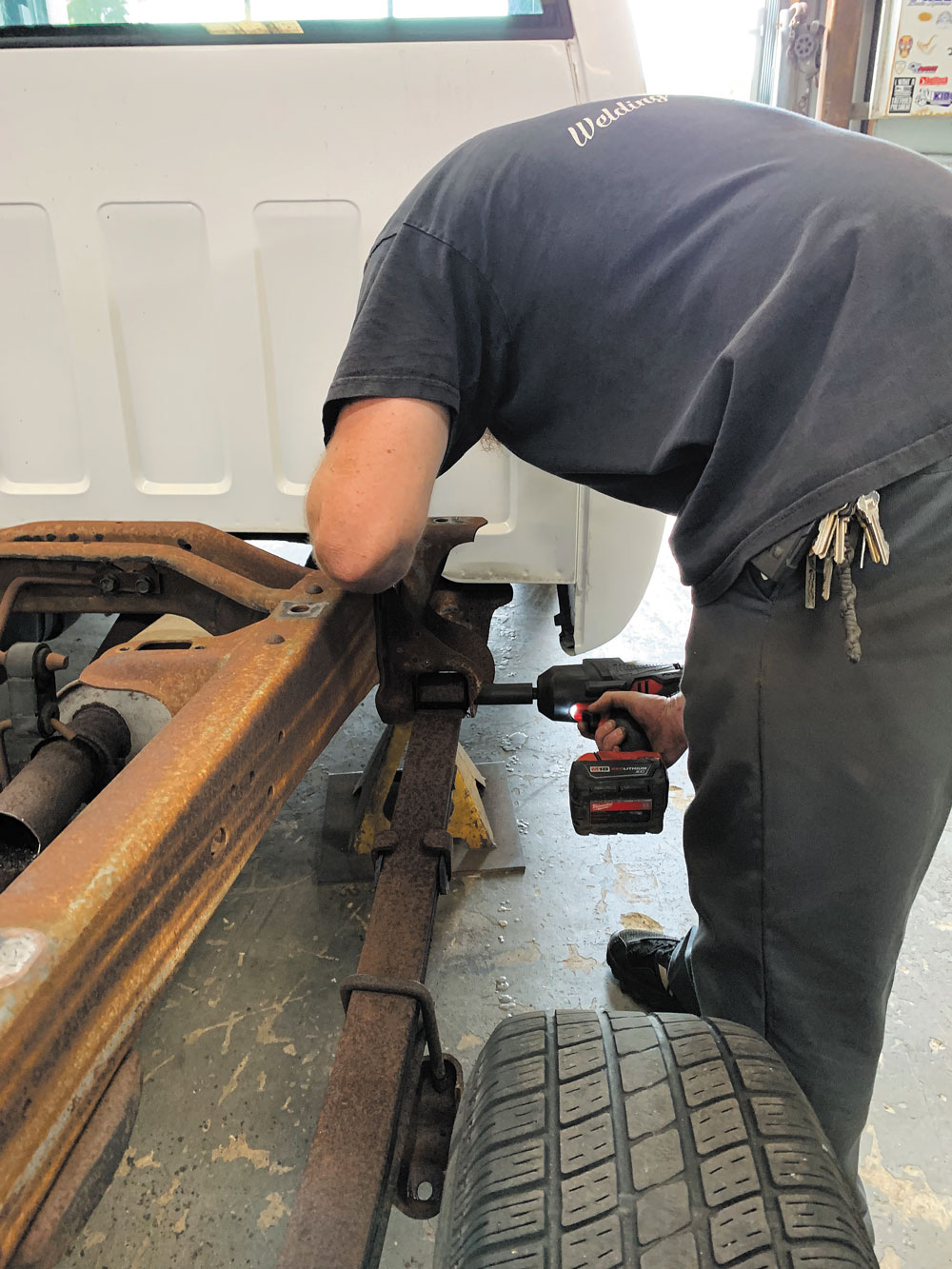
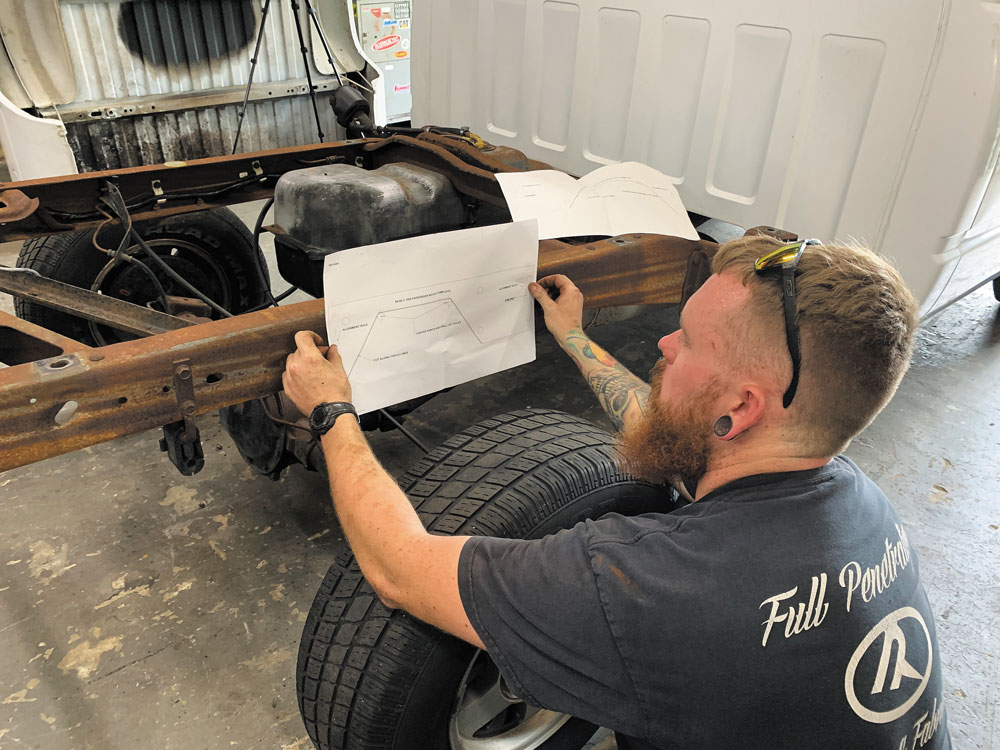
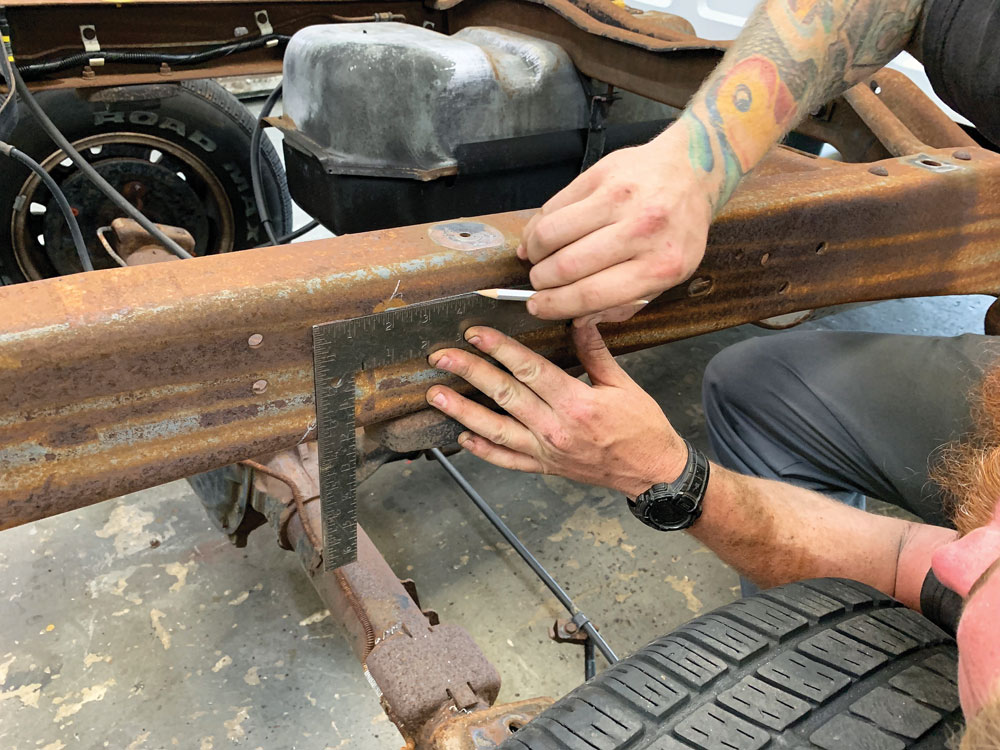
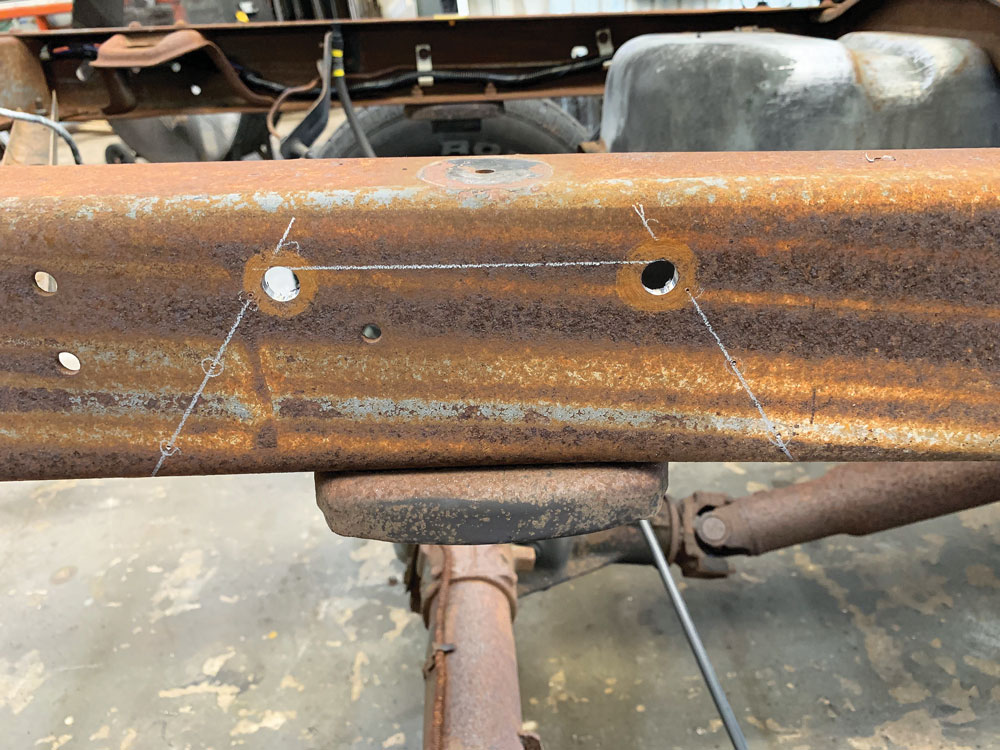
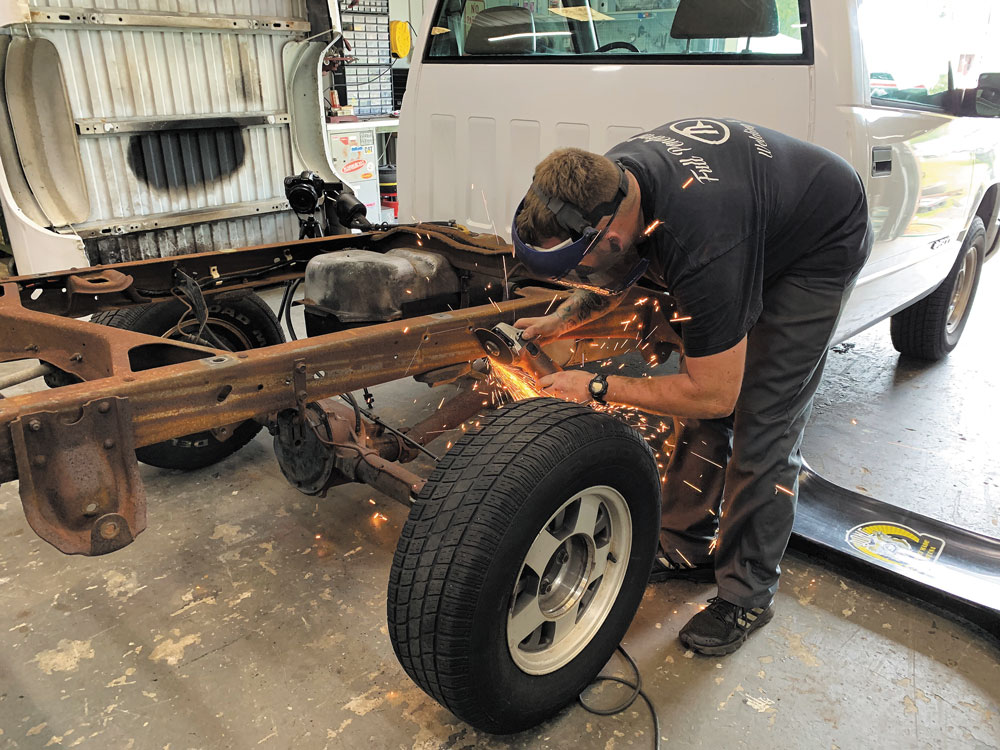
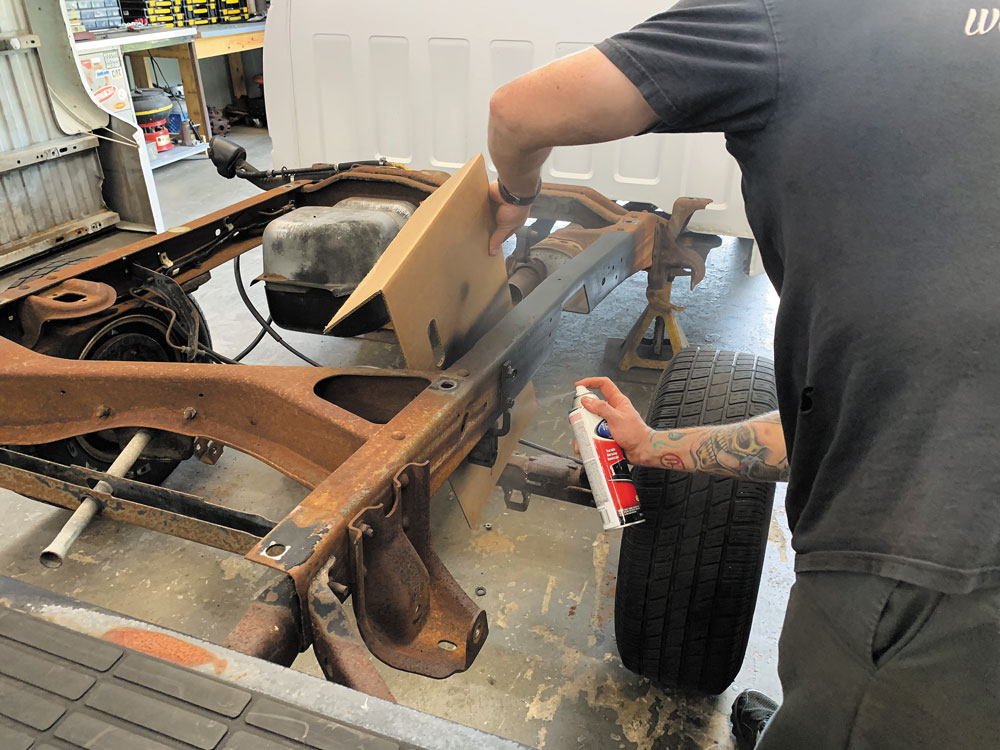
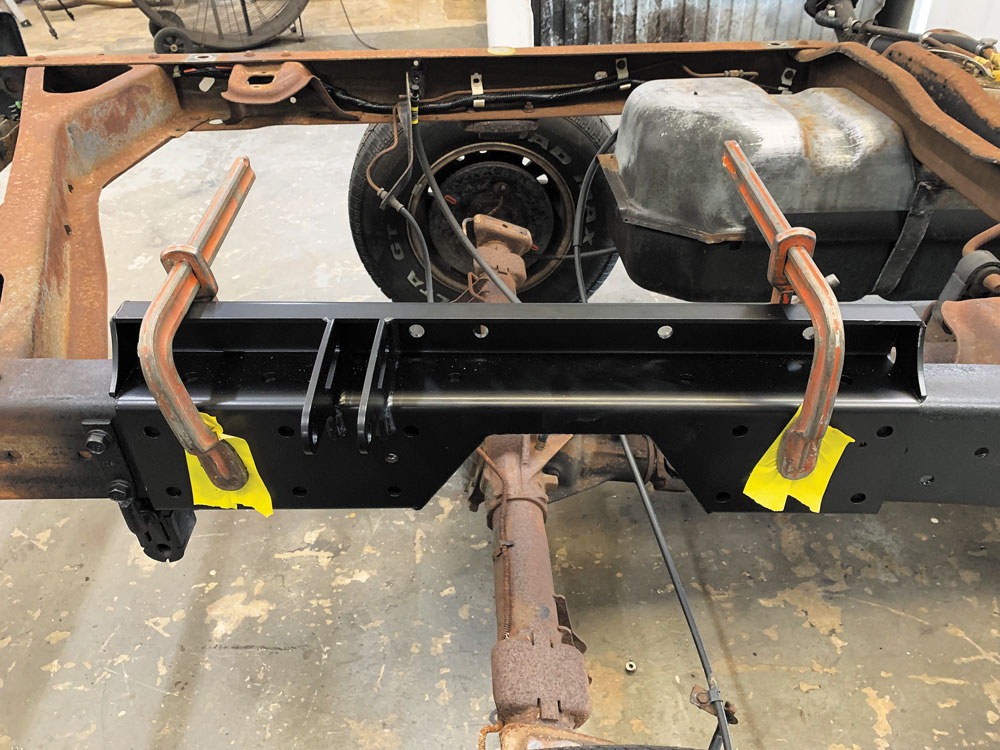
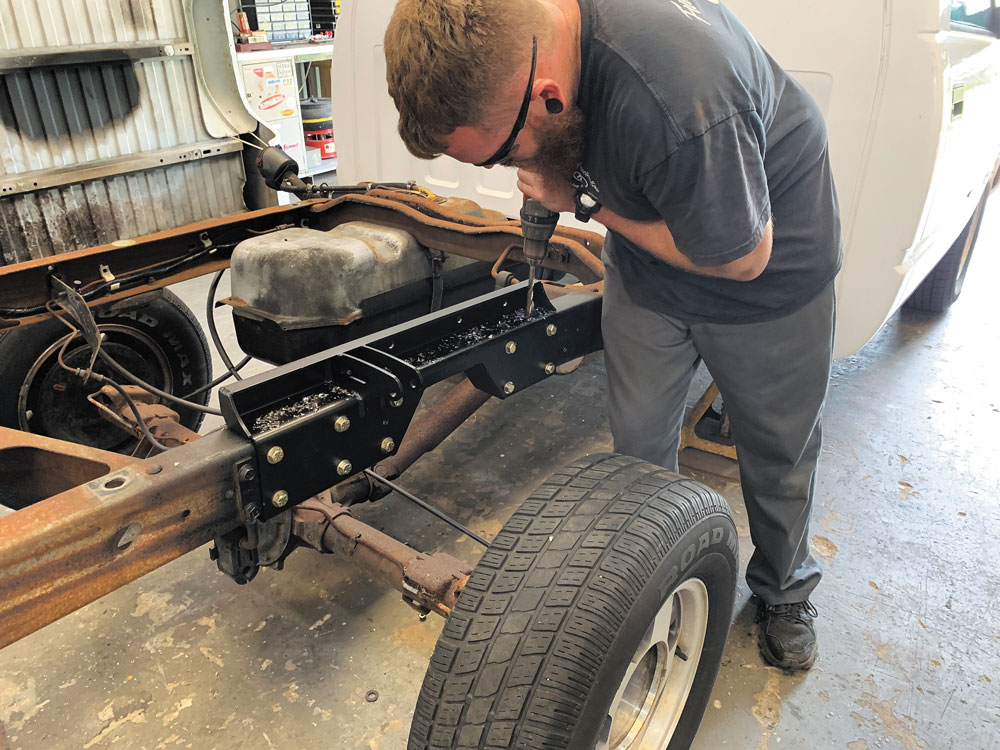
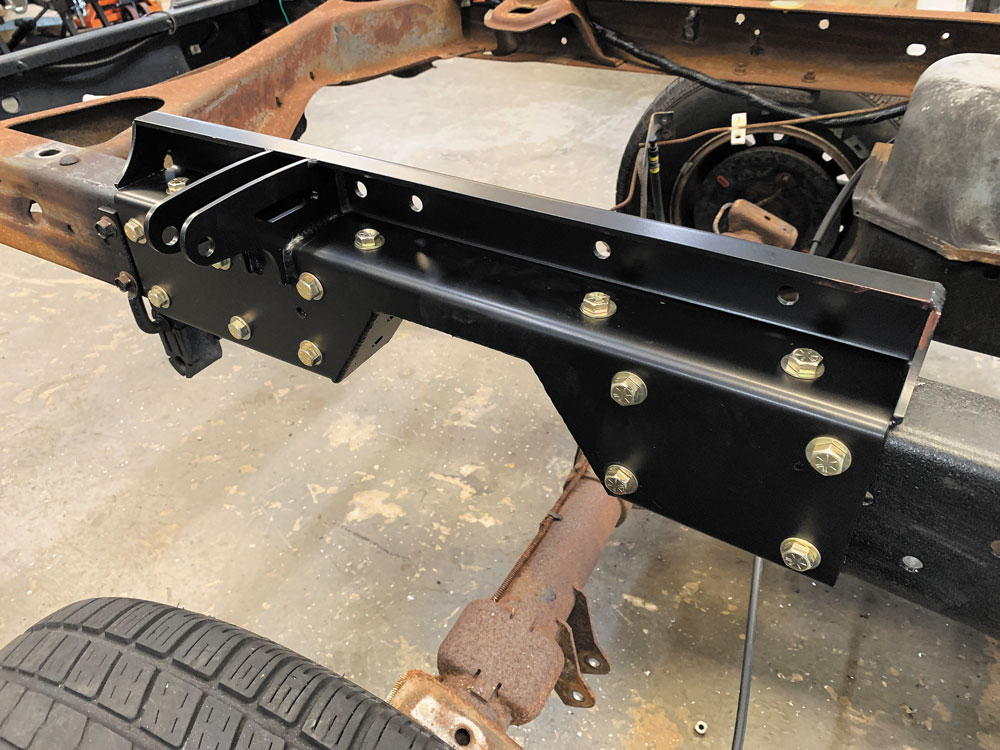
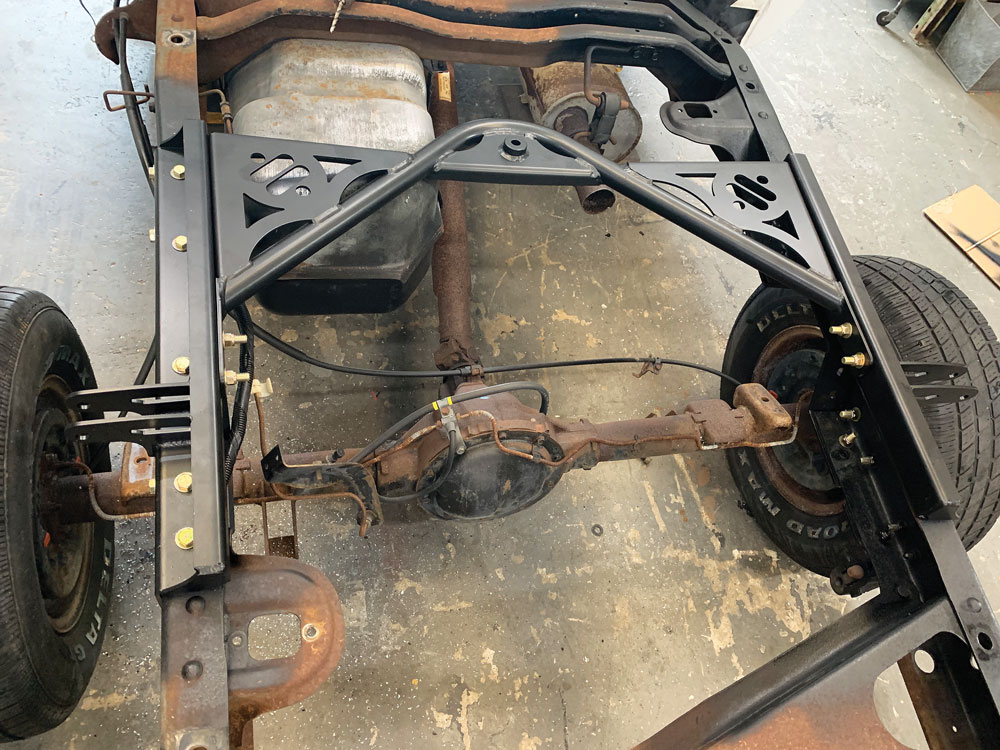
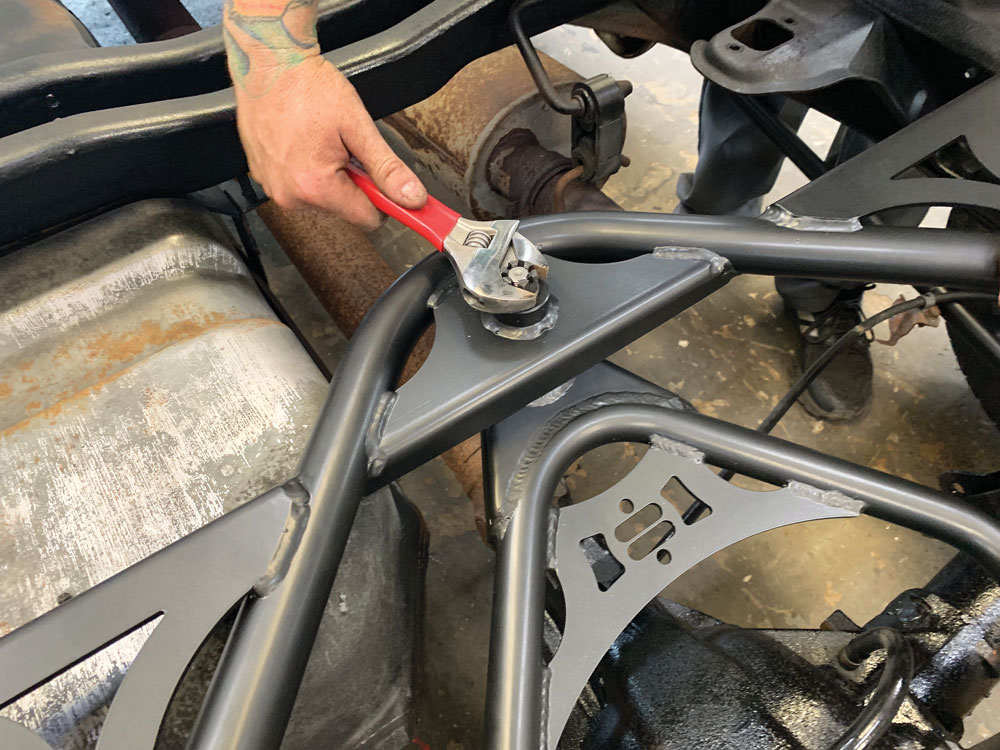
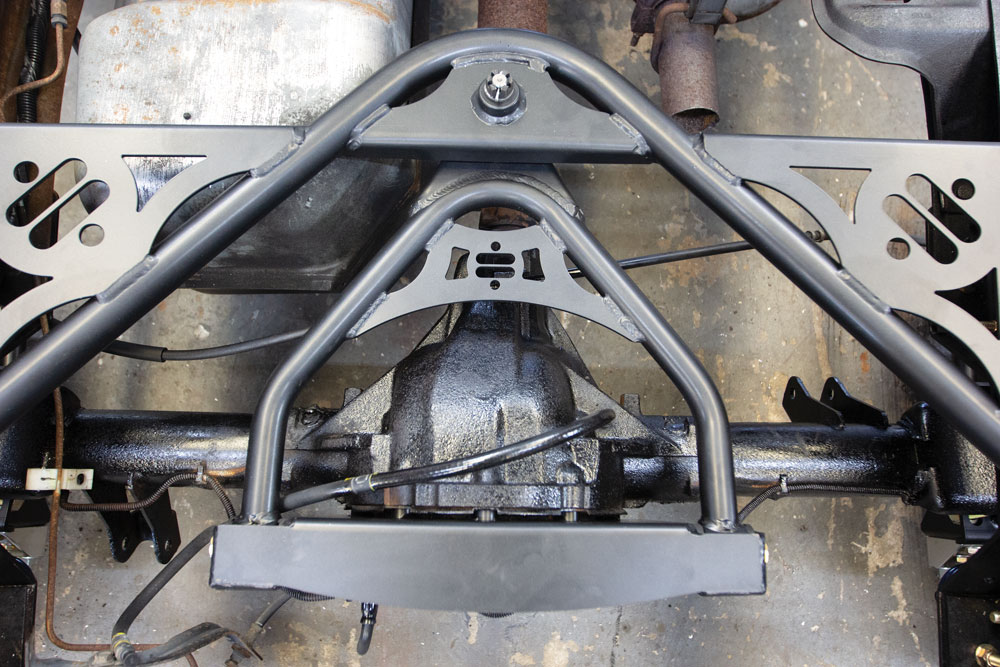
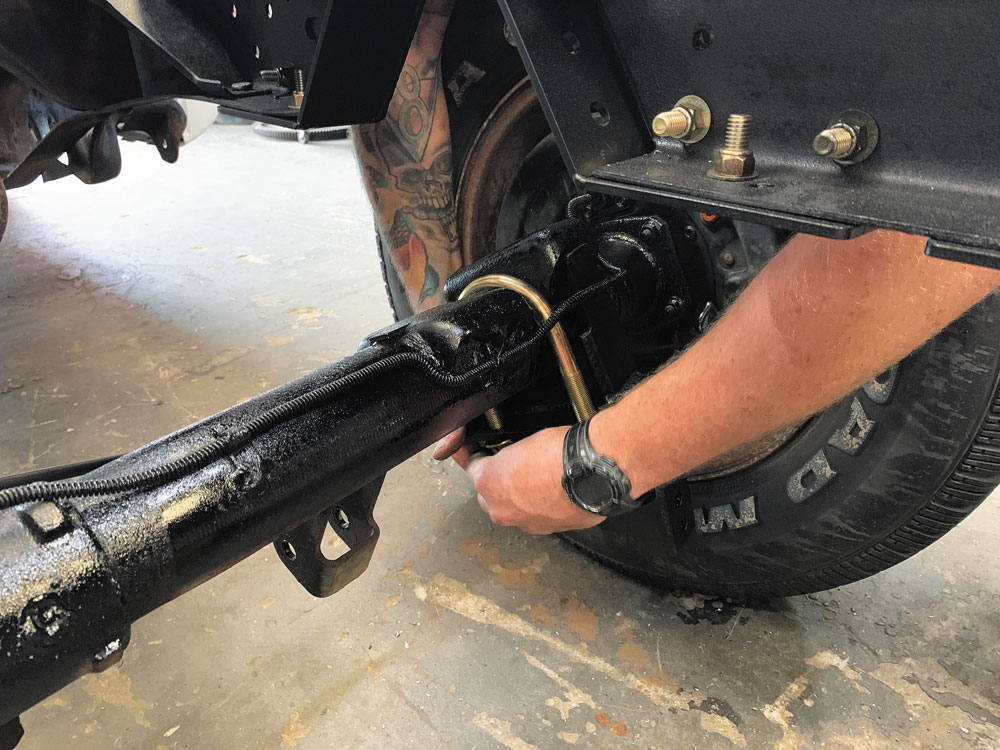
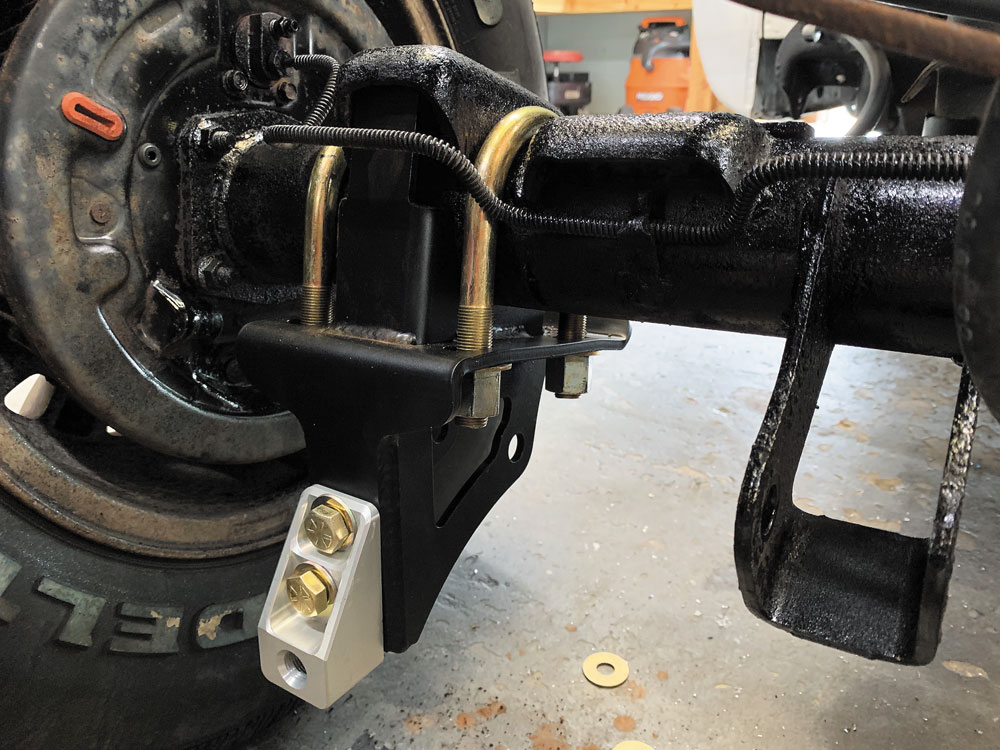
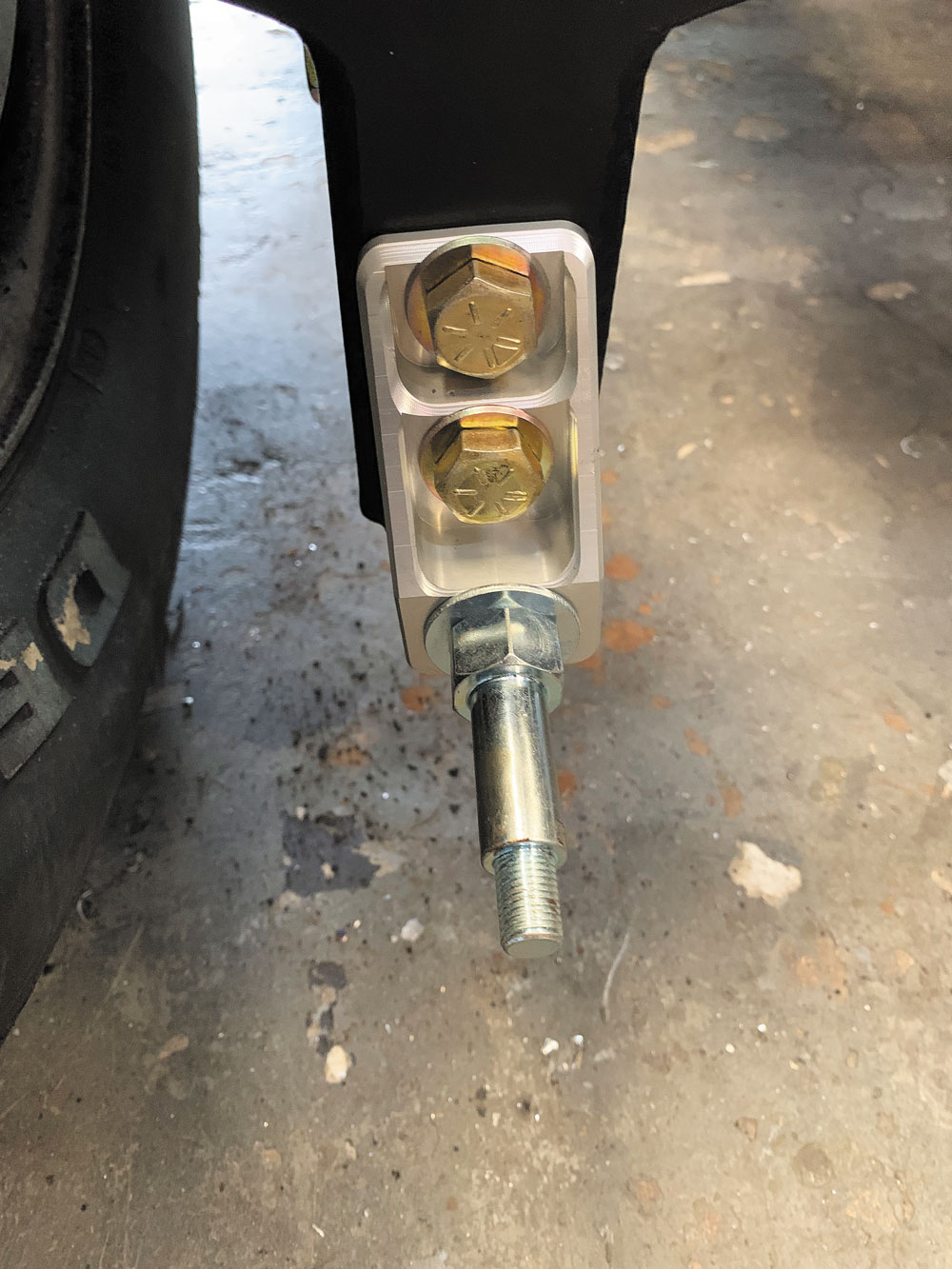
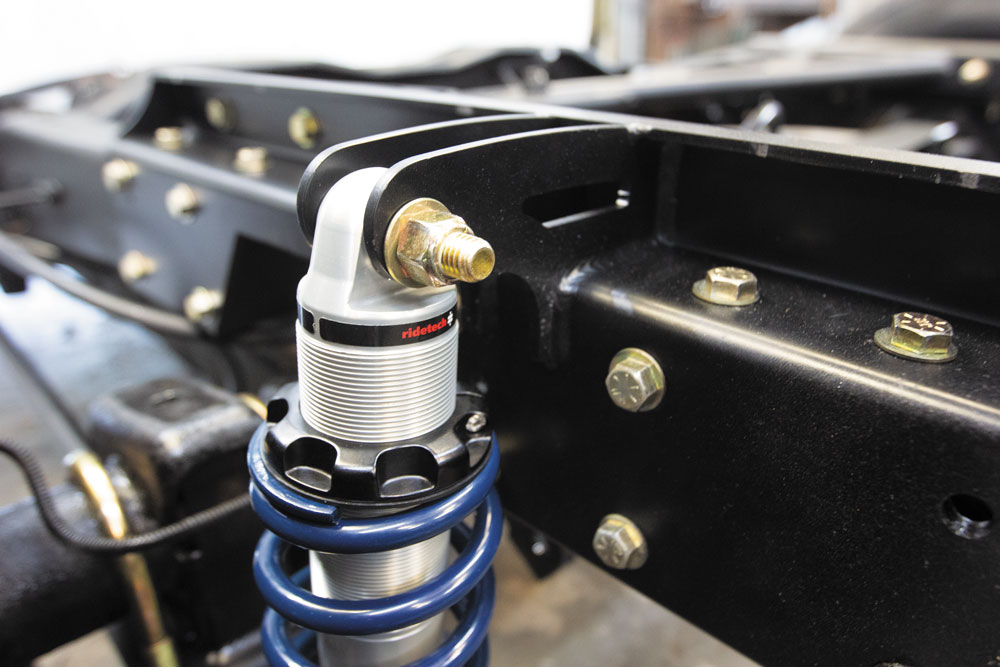
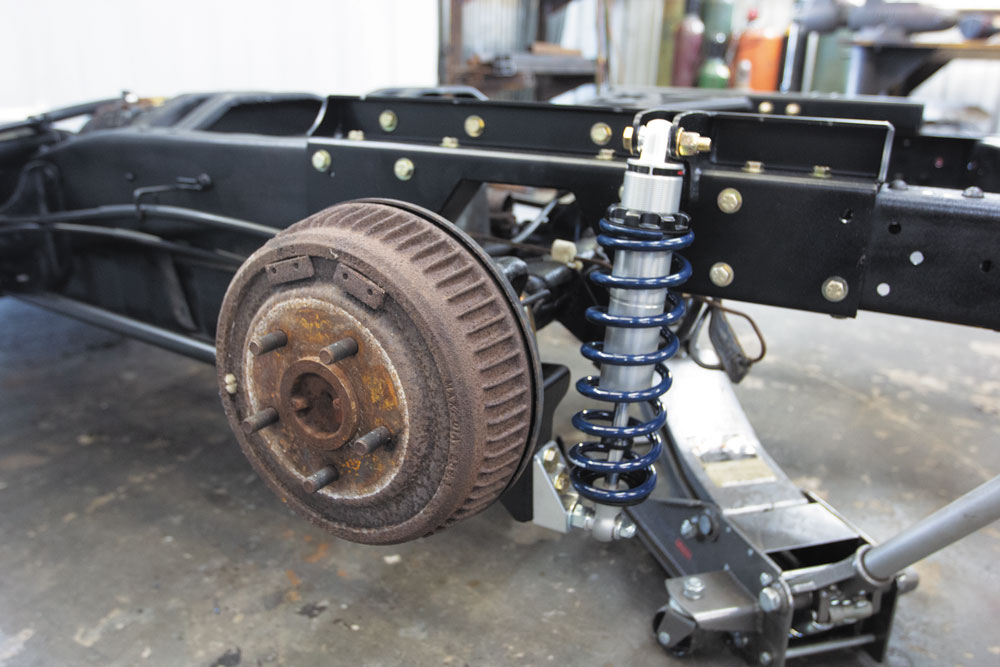
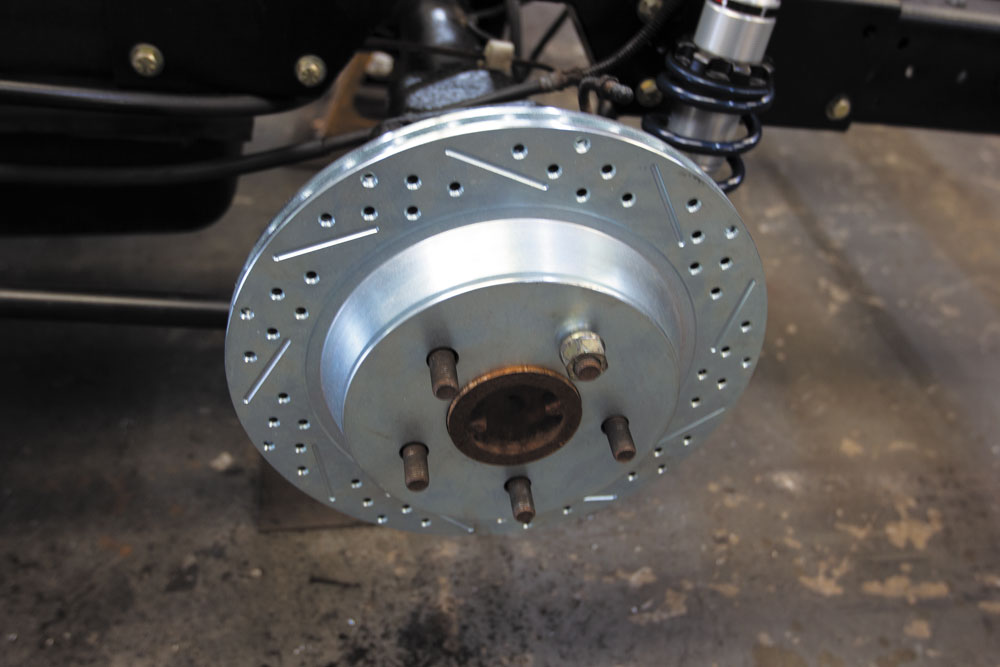
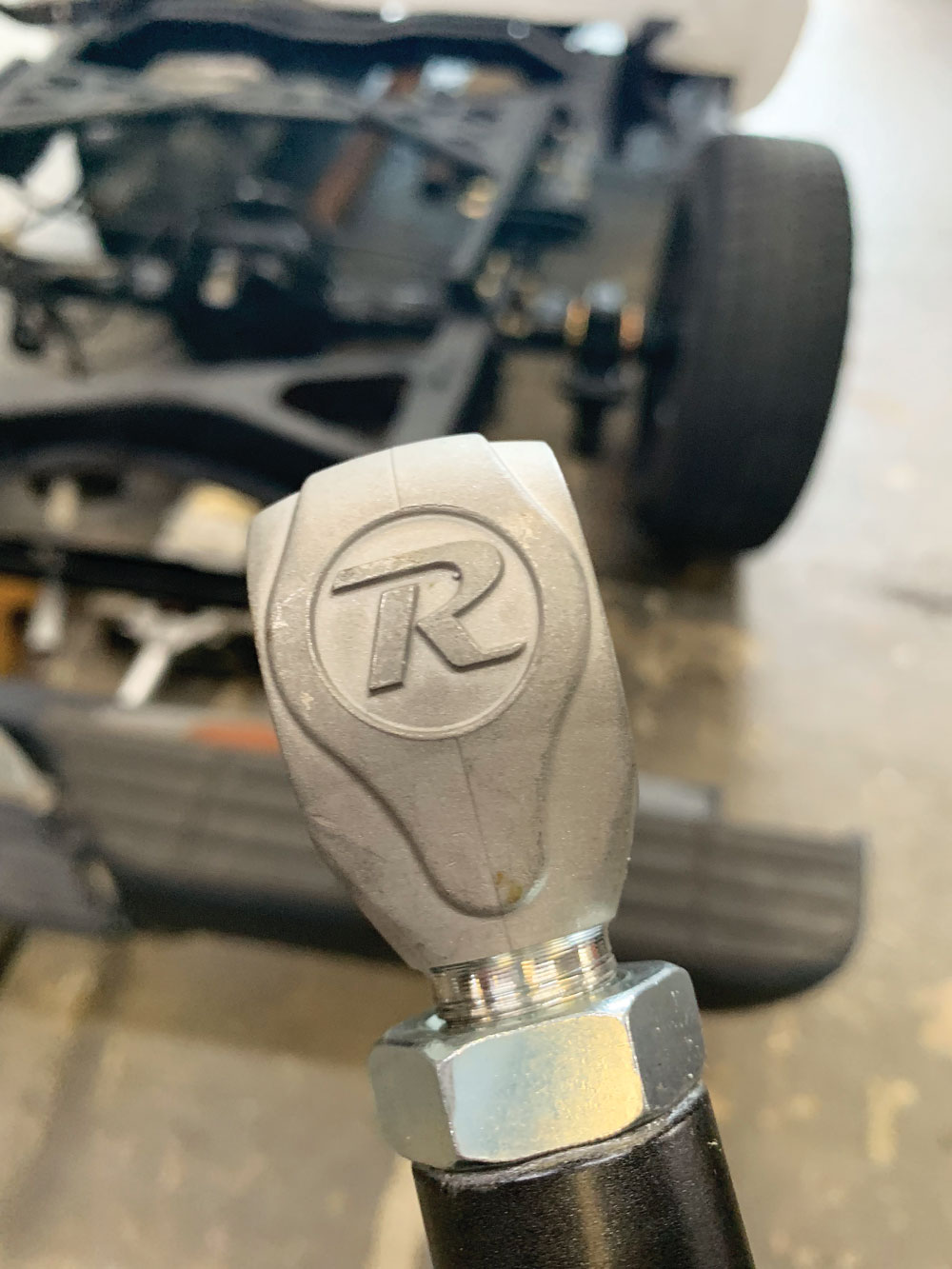
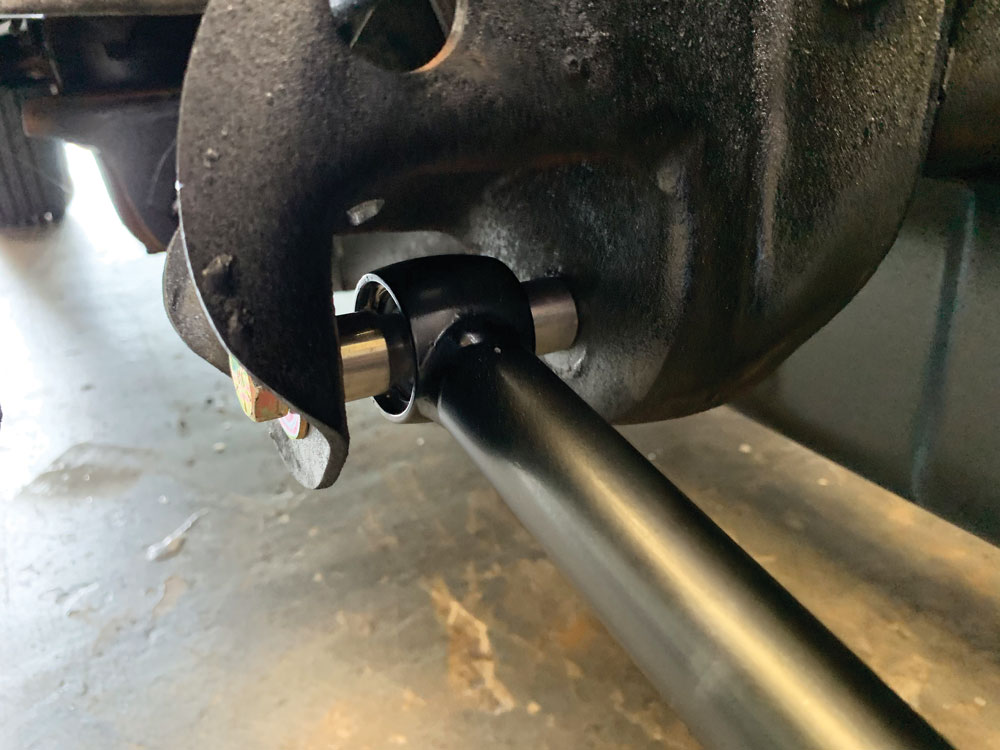
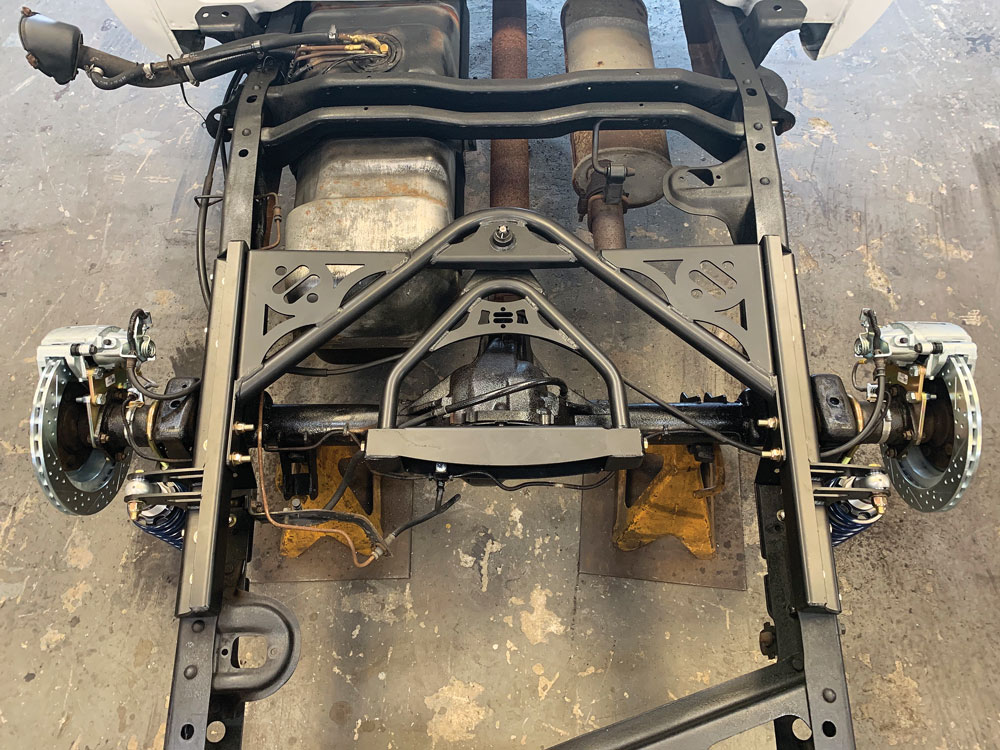
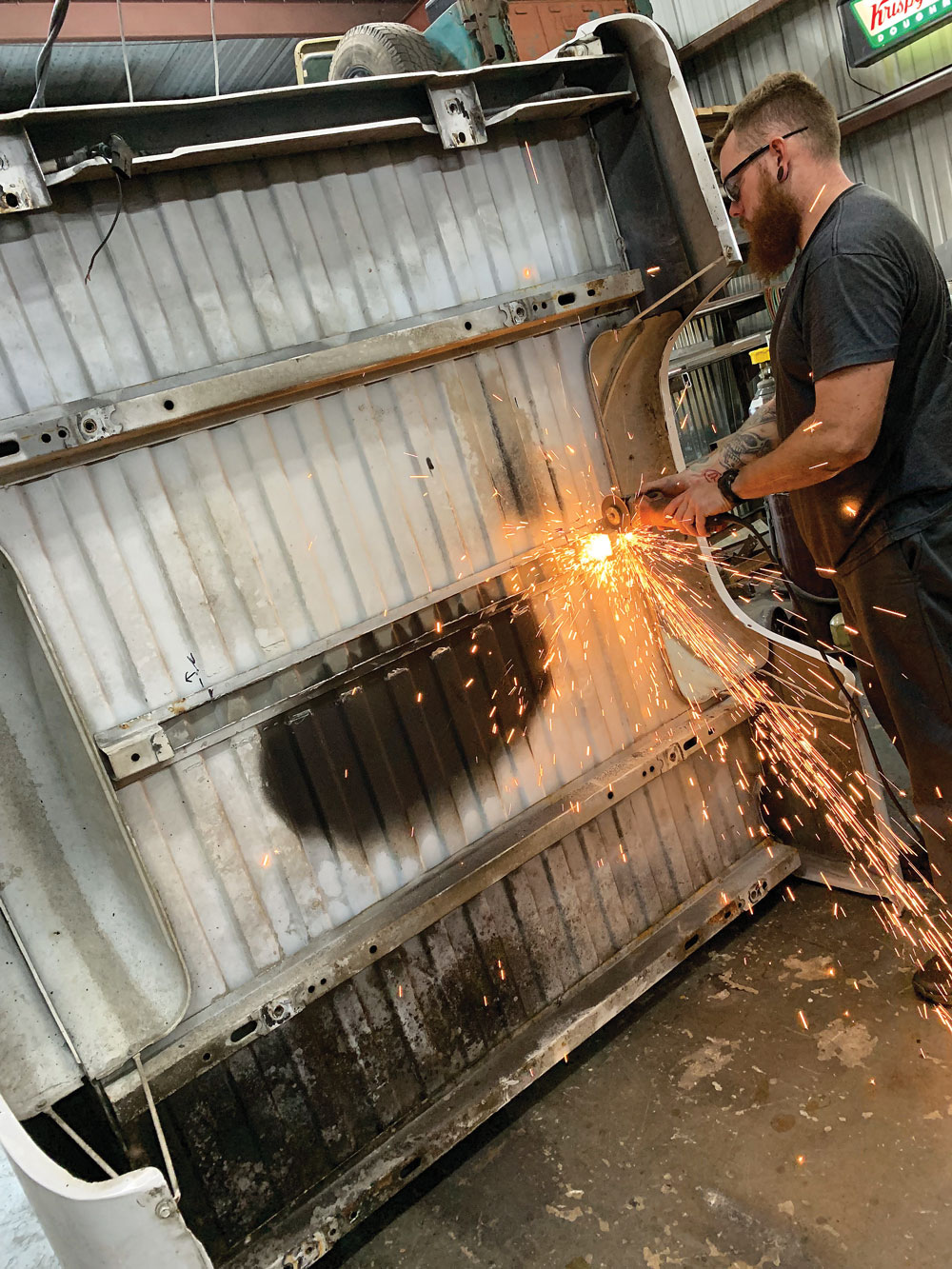
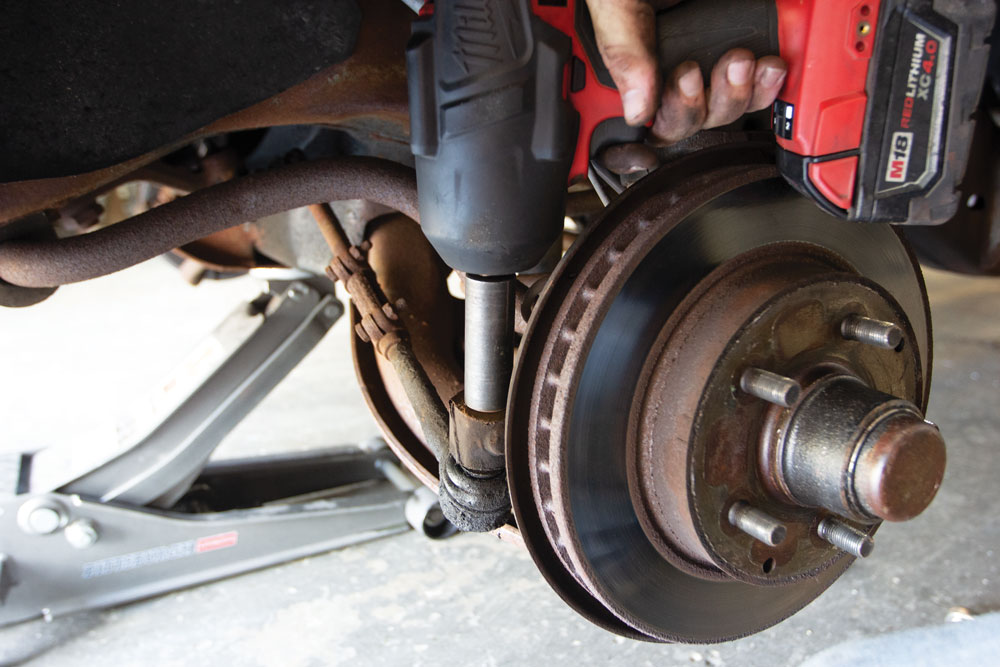
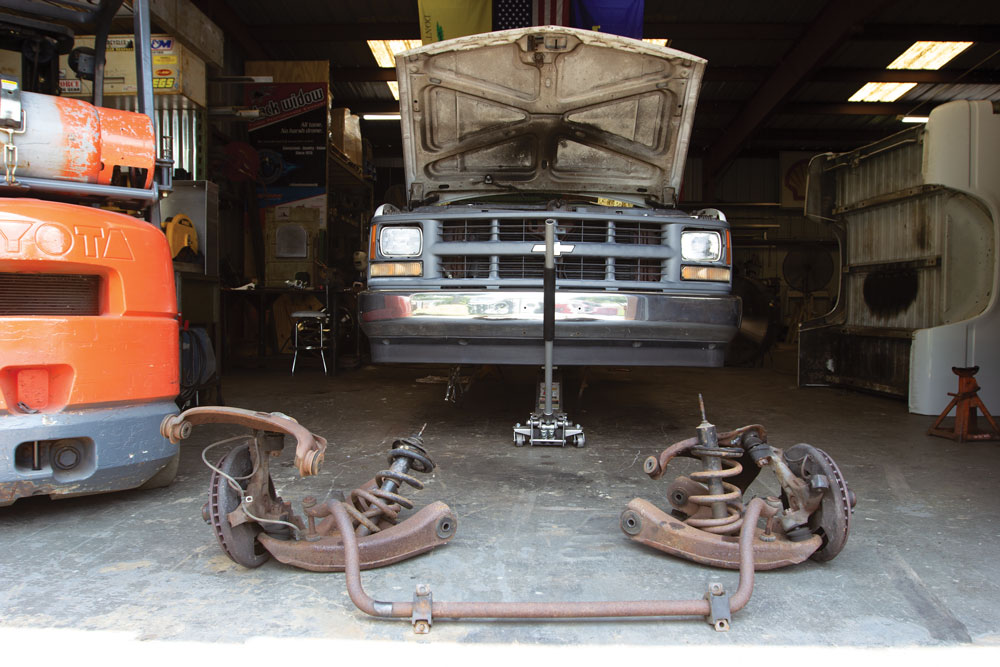
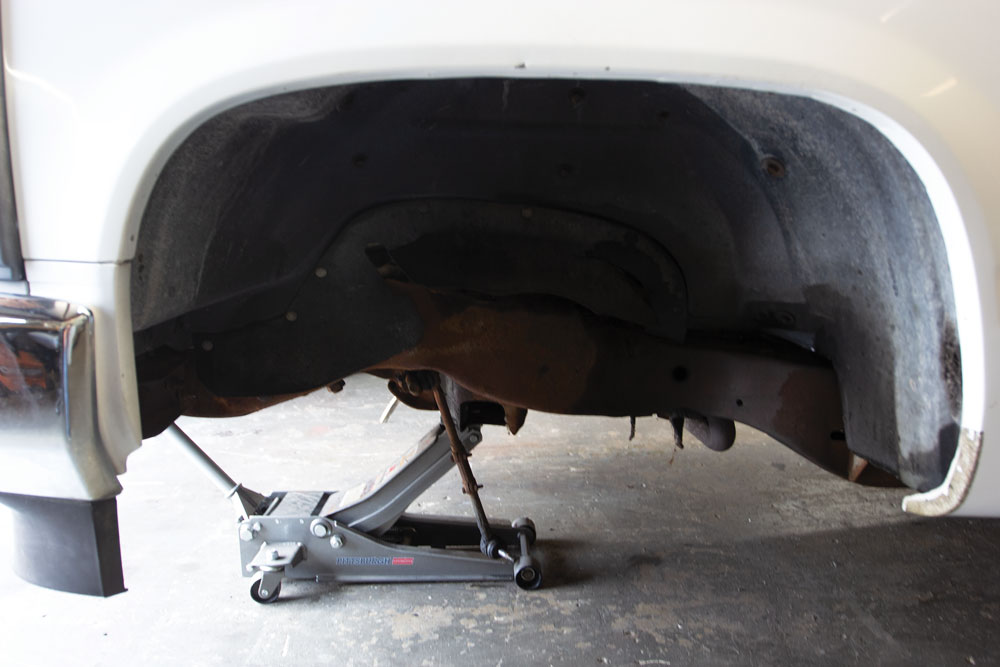
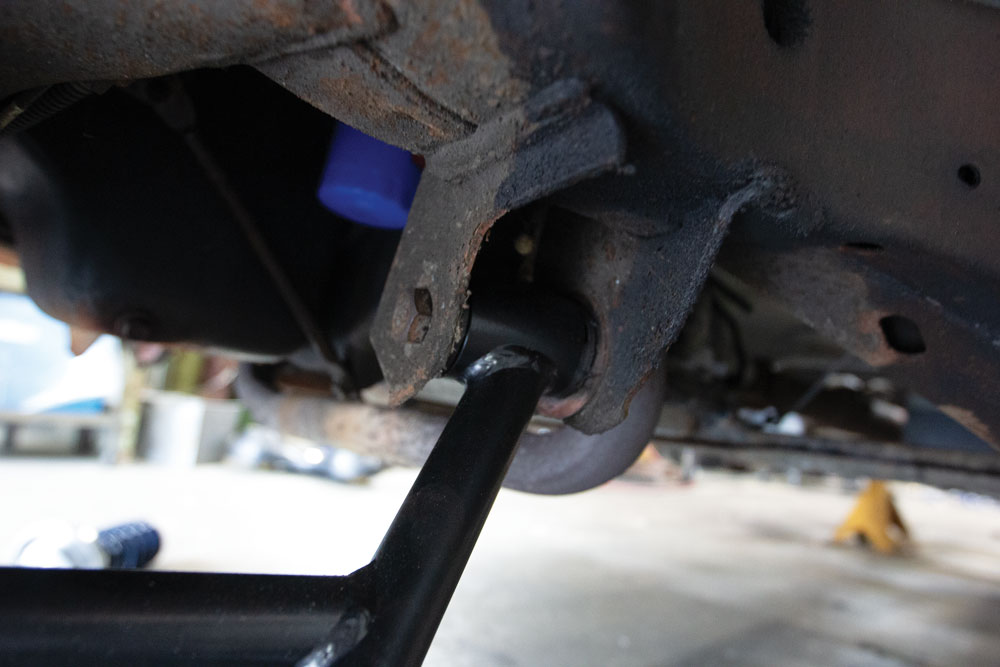
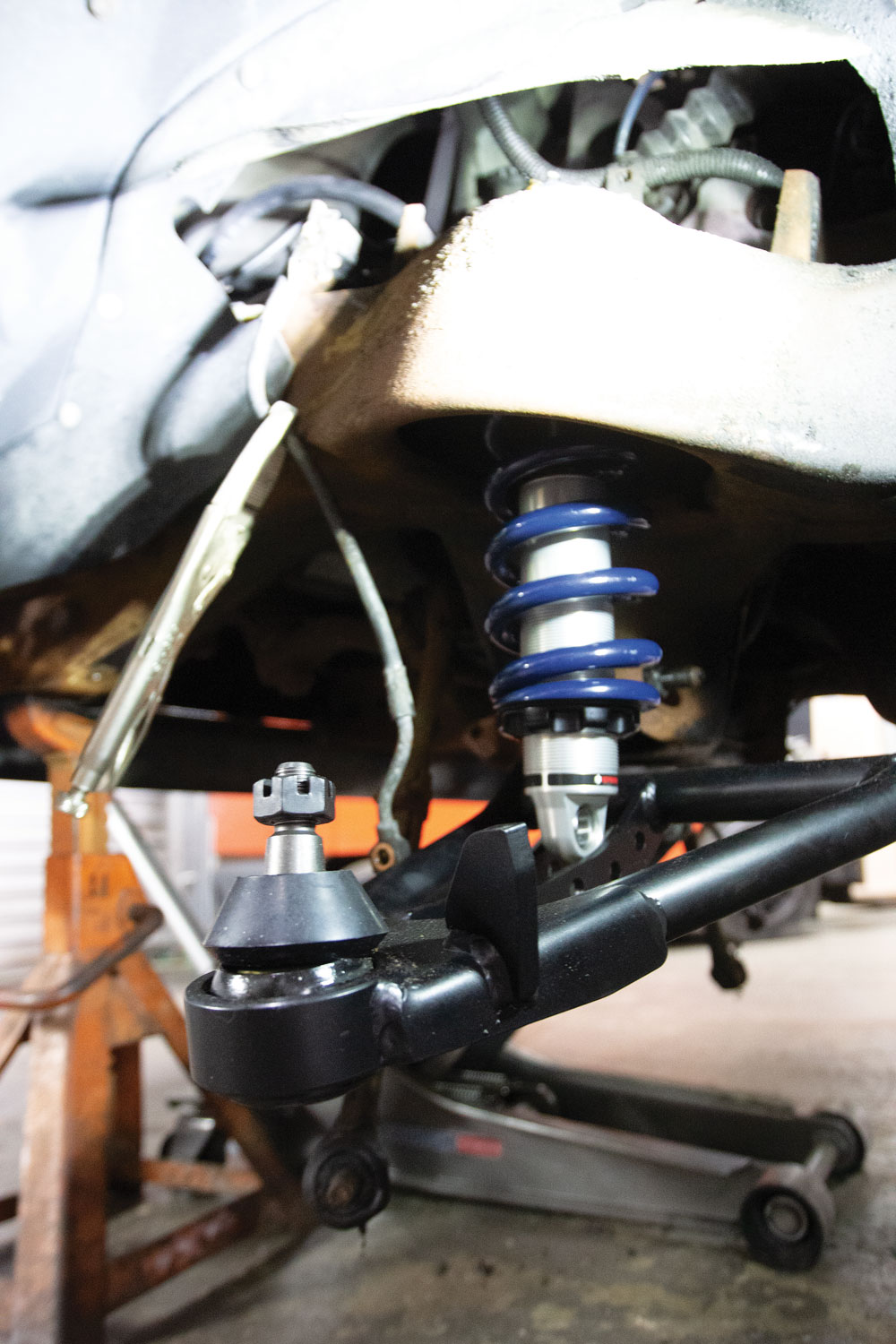
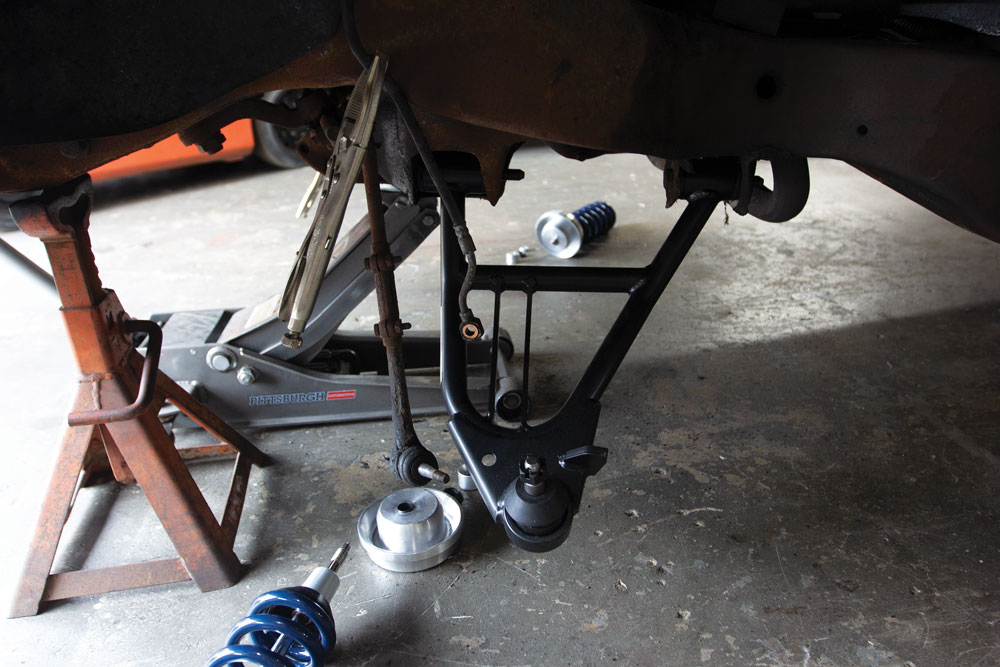
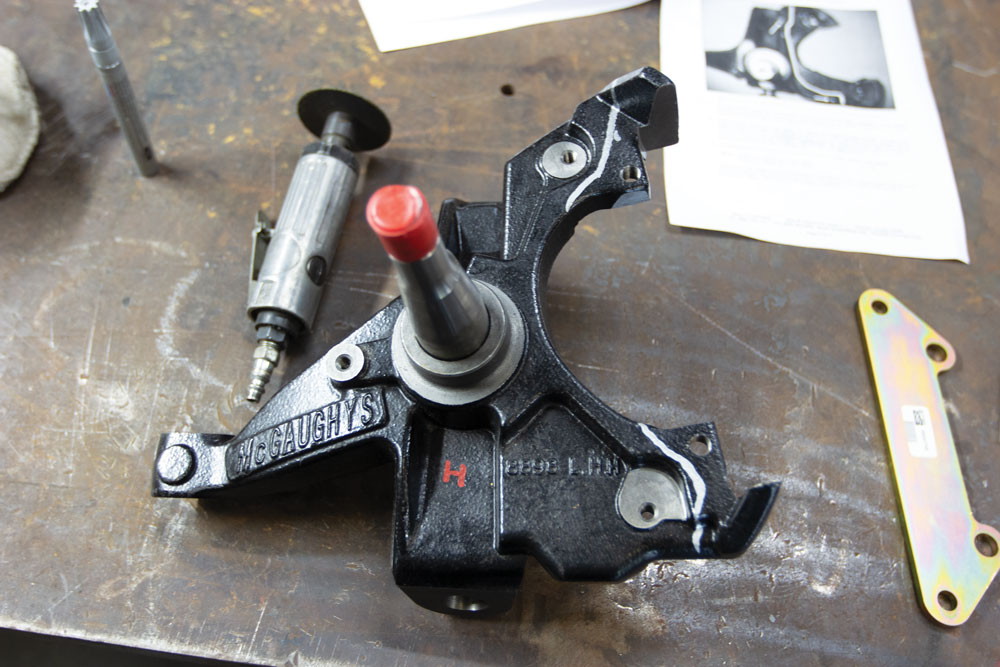
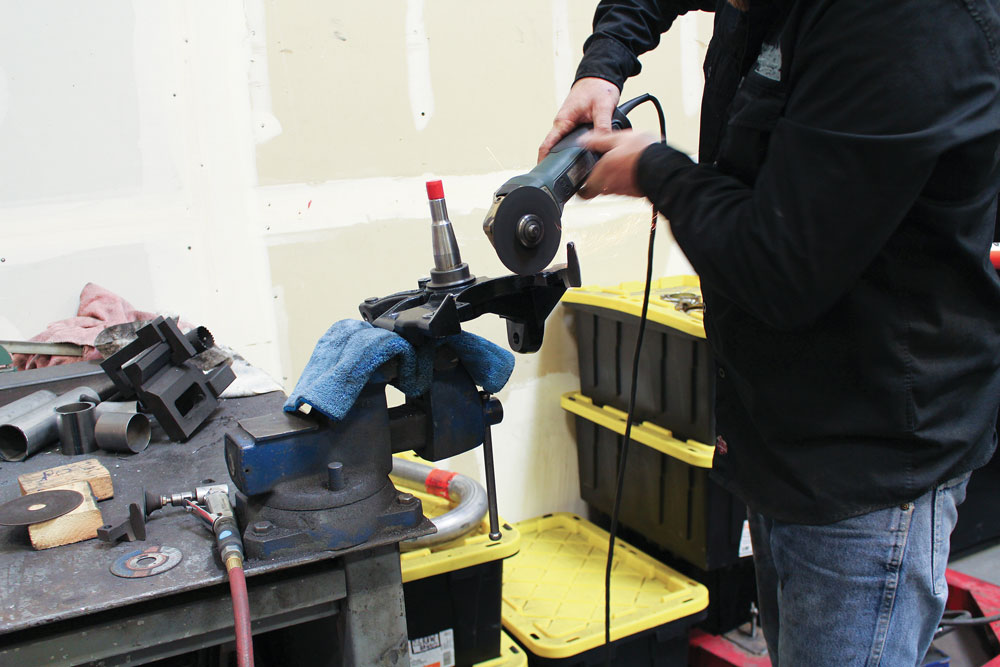
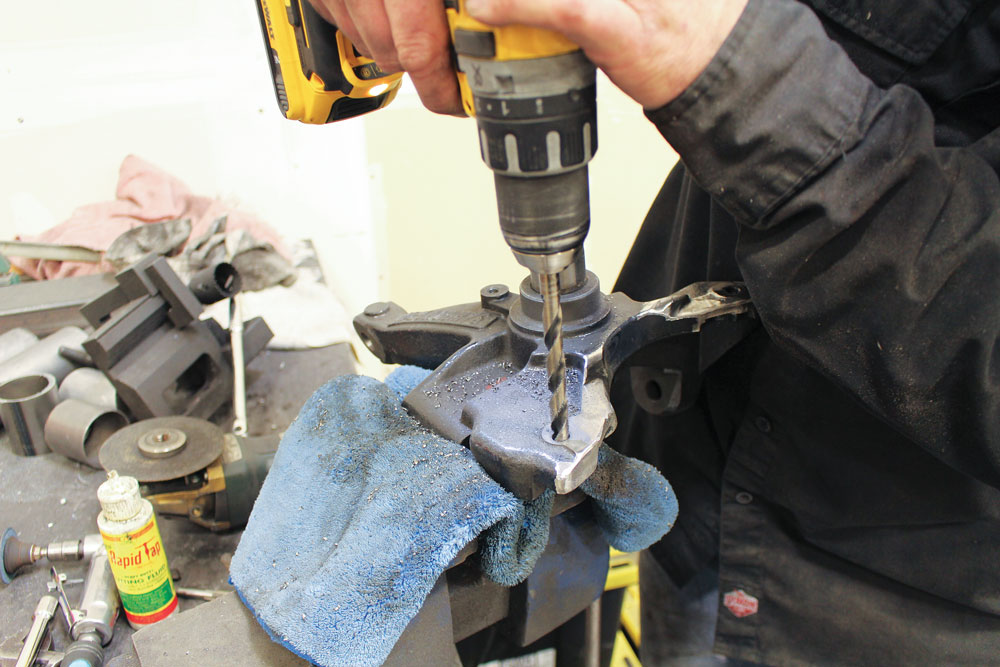
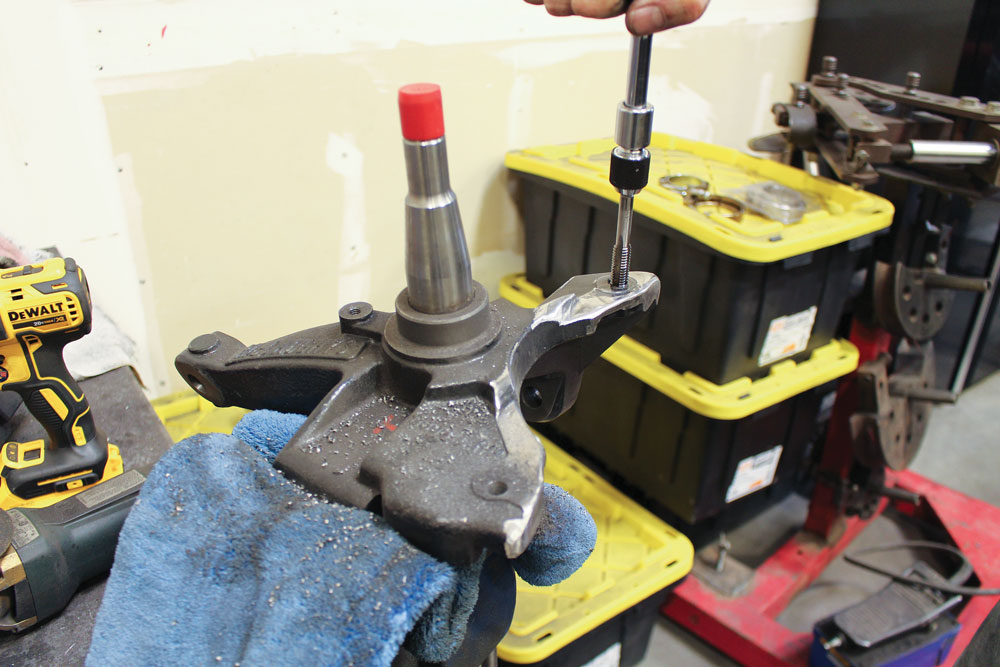
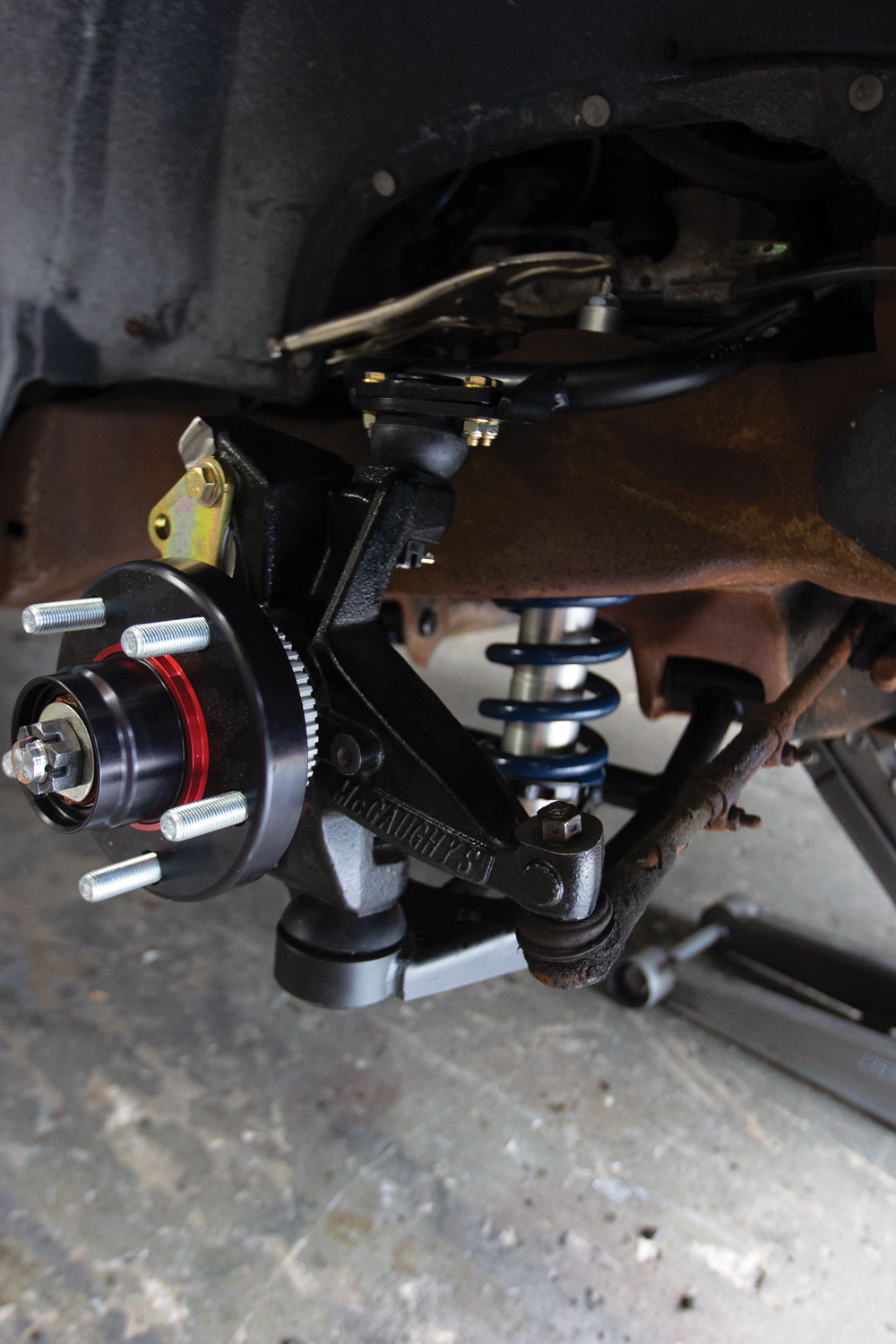
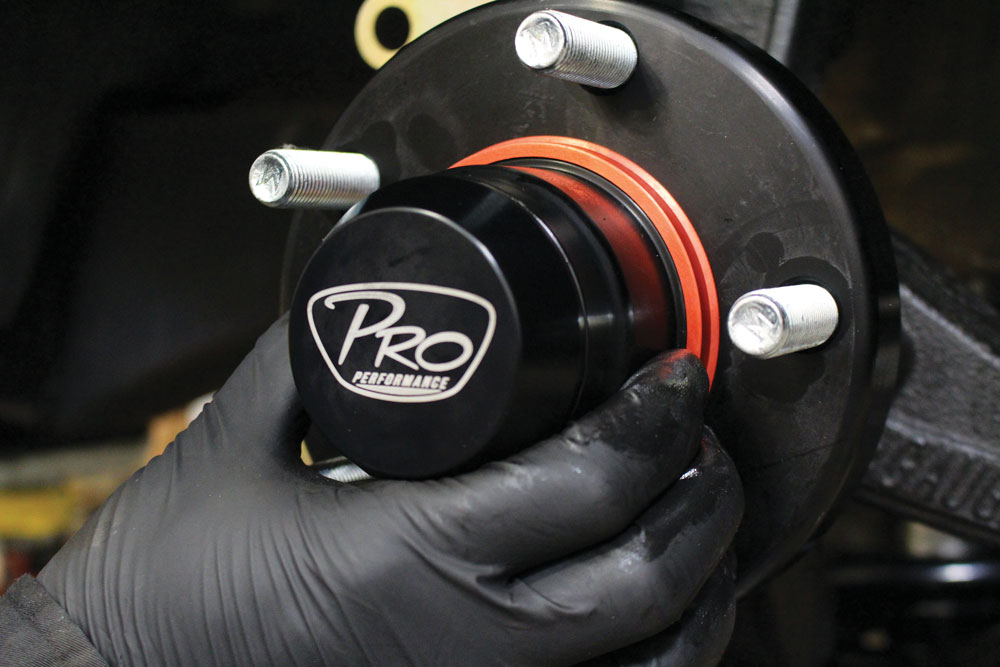
Key features of these brakes:
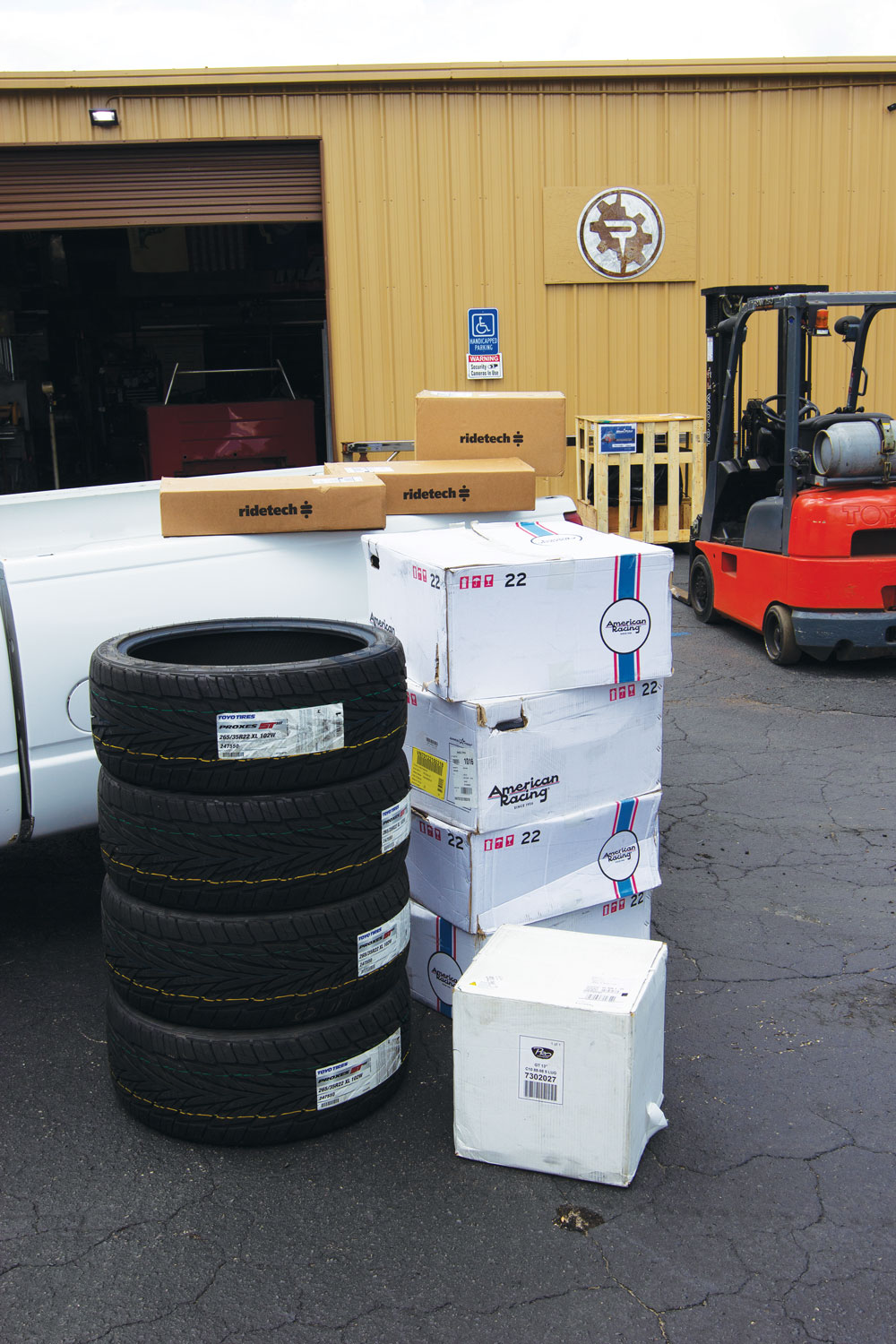
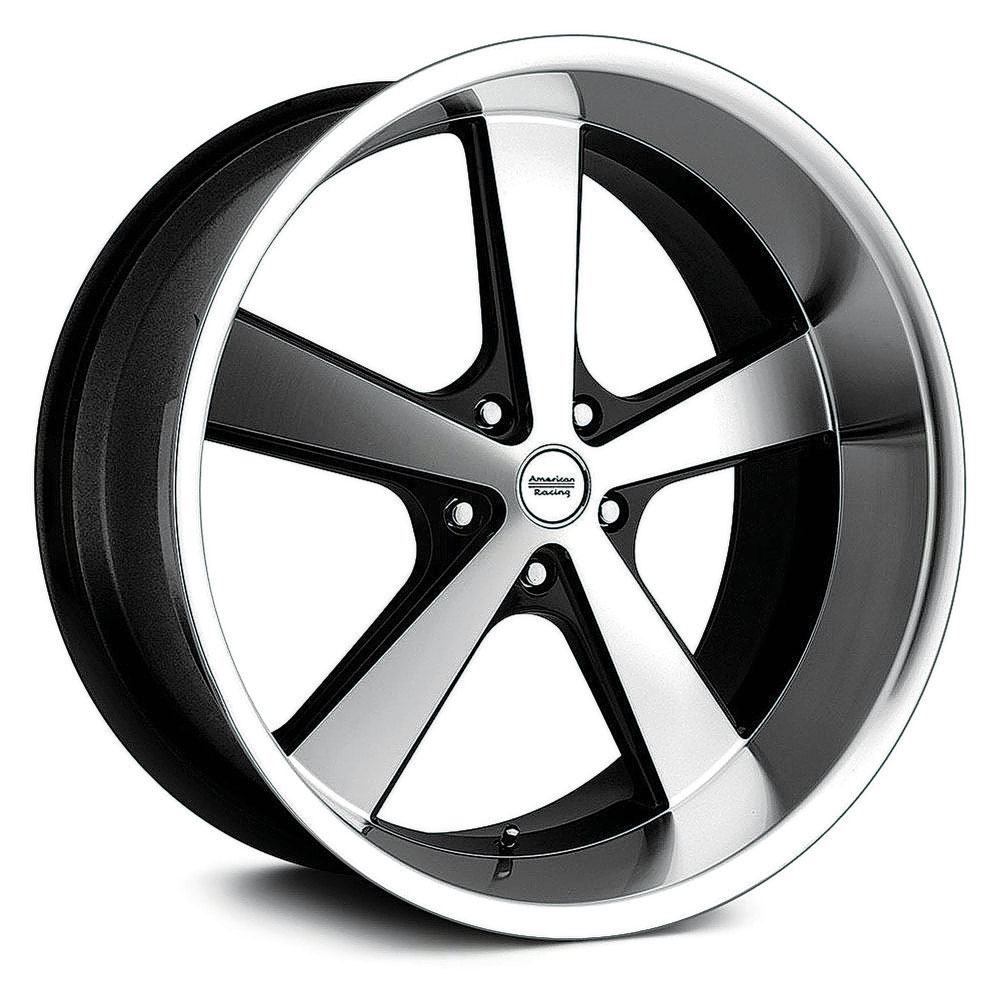
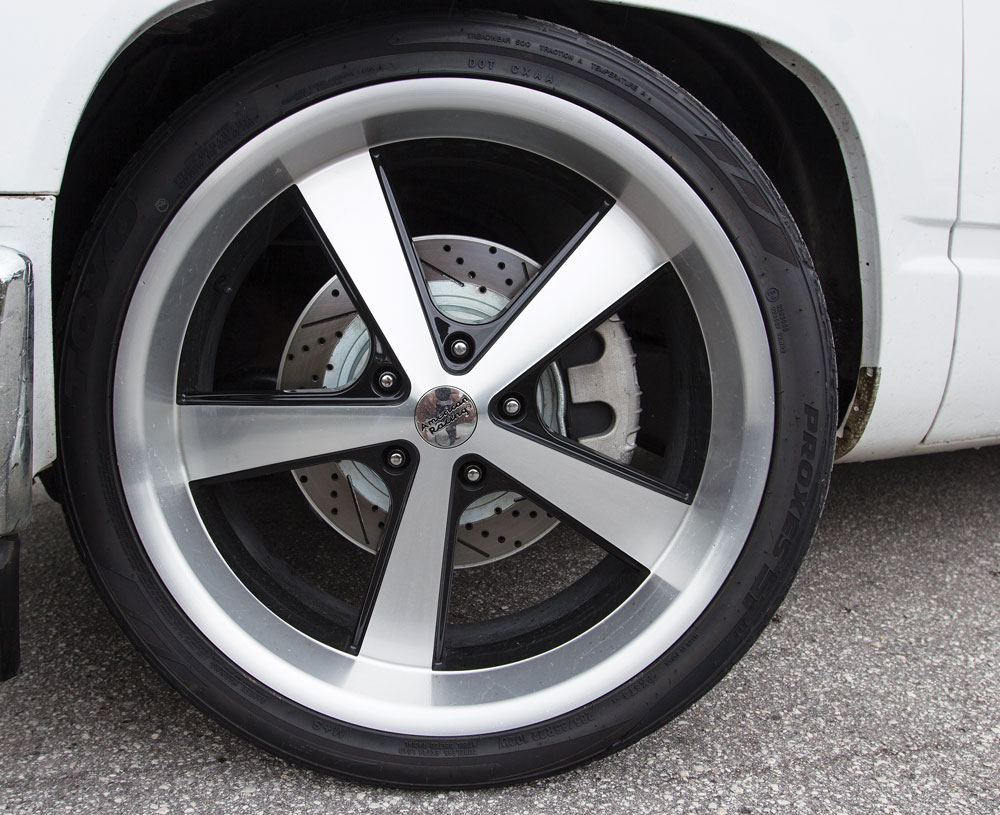
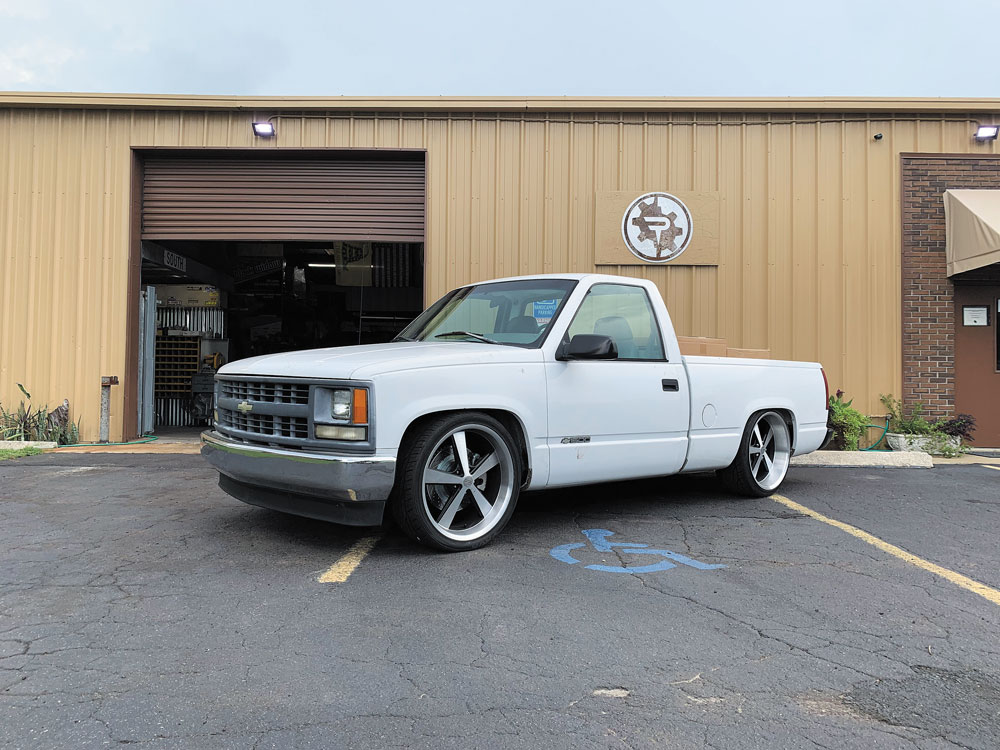
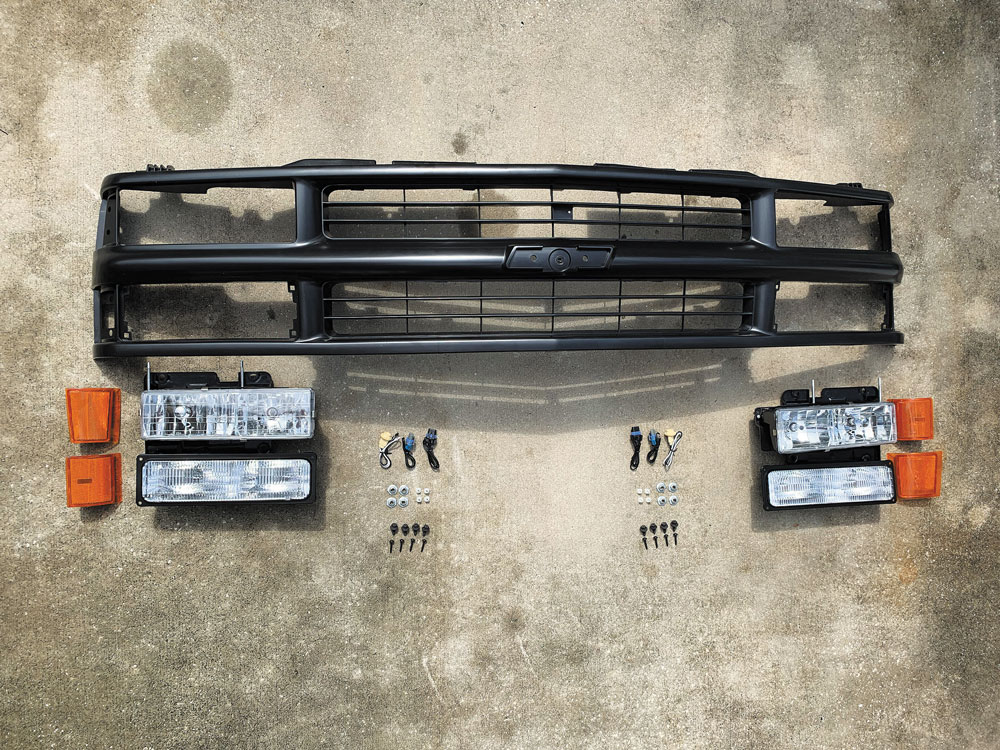
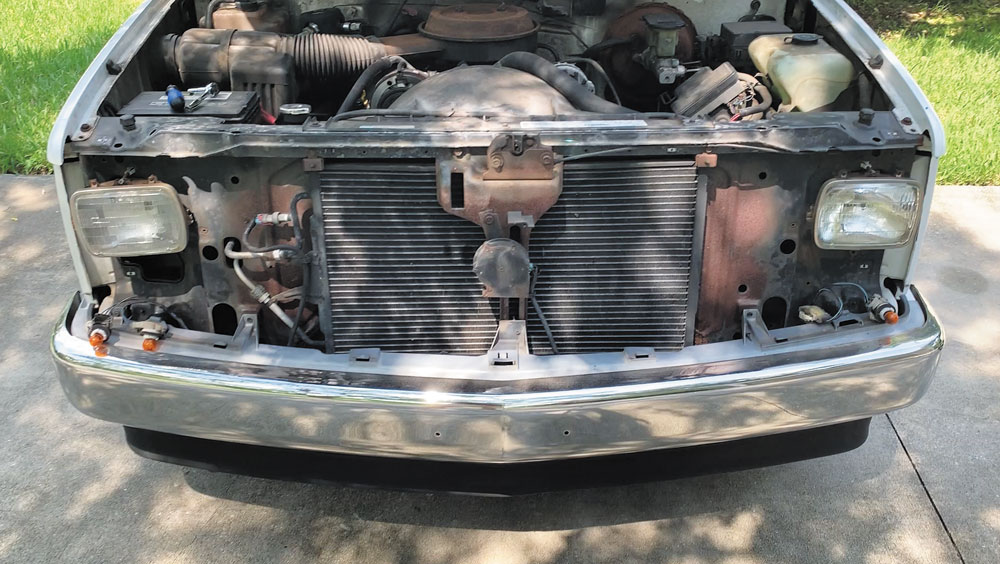
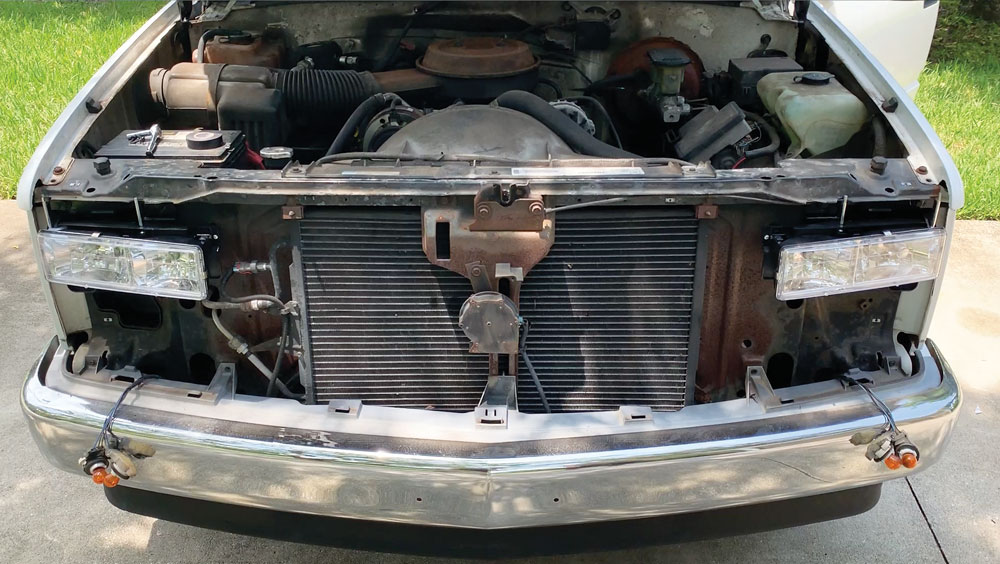
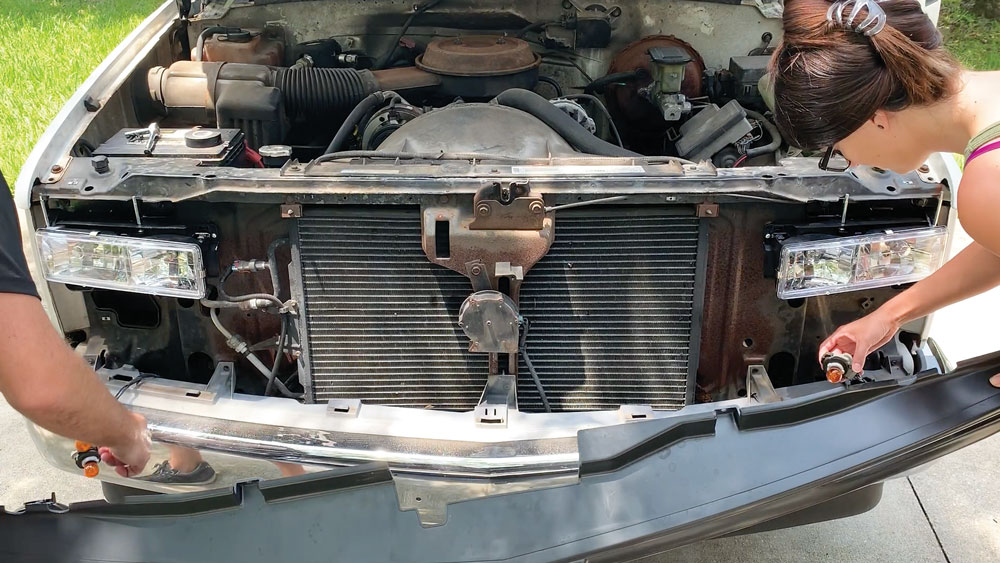
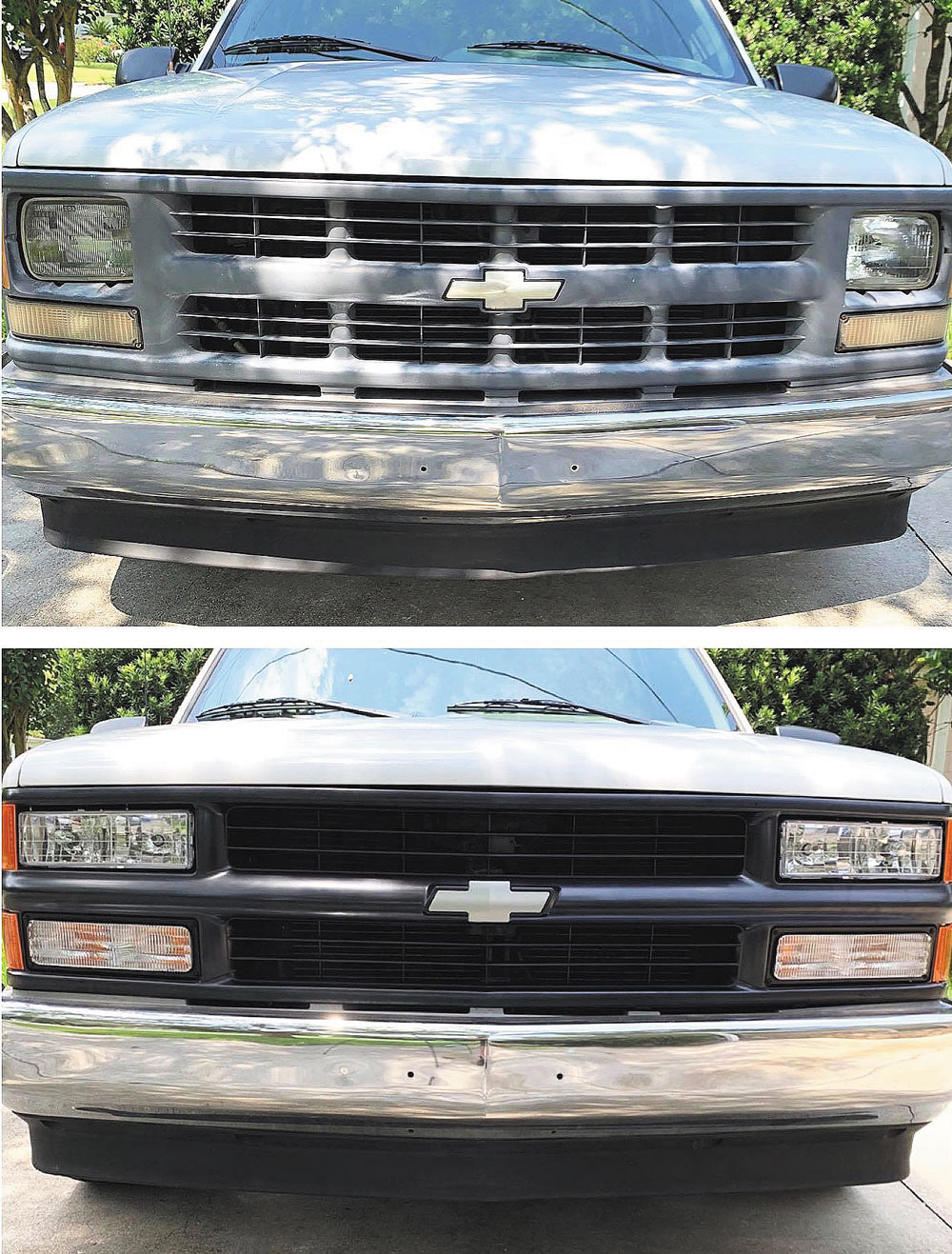
Ridetech Offers New, Innovative StrongArms Control Arms for Various General Motors Vehicles
Ridetech is introducing new options within its StrongArms control arms portfolio that are designed to fit factory coil springs and shocks on a number of classic General Motors vehicles. The new Ridetech StrongArms are now currently available for the following vehicles:
· 1967-1981 Chevrolet Camaro & Pontiac Firebird
· 1968-1974 Chevrolet Nova
· 1964-1972 GM A-Body Vehicles
· 1963-1970 Chevrolet C10 Trucks
The new tubular front lower control arms will allow users to adjust their ride height and fine-tune vehicle ride height with the addition or removal of included spacers located under the coil spring. Ride height adjustability can travel by just over an inch to account for weight variances, as well as a wide range of tire and wheel combinations. Ridetech StrongArms are also compatible for use with Ridetech dual rate springs, as well as factory coil springs.
The performance tubular control arms from Ridetech outperform stamped OEM stock control arms through precision engineering, significant geometry updates and use of stronger, high-tech materials. Ridetech uses precision Computer Numerical Control (CNC) machined bent tubing for superior accuracy. From this accuracy, Ridetech StrongArms bolt directly in the factory location with new hardware included for quick and easy installation.
· Revisions to geometry offer significant improvement in dynamic caster and camber curves to provide dramatic upgrades in handling and control by making best use of modern performance tires
· Tubular control arms add strength, style and improved performance
· Self-lubricating Delrin bushings reduce deflection and suspension bind
· Increased caster dramatically improves handling and control
· Adjustable ride height to fine-tune the stance
For complete details and purchasing options for Ridetech StrongArms, please visit Ridetech.com.
Ridetech is pleased to announce their adjustable coilover and air suspension systems are now available for the Dodge Charger, Challlenger, Magnum and Chrysler 300C. Both coilover and air suspension systems are worthy upgrades for the popular, long-running platform.
These systems provide an aggressive yet functional muscle car stance. A first for Ridetech, both coilover and air systems now feature a rubber isolated spherical bearing design that minimizes NVH noises commonly associated with performance oriented suspension systems.
This additional compliance strikes a happy medium for those who want all the performance benefits of an adjustable suspension without sacrificing ride quality or comfort. As such, they are equally at home applying Gen III Hemi power to the pavement at the drag strip, autocross, track day, or a spirited drive carving corners on canyon roads.
Both coilover and air systems are sporting a fresh new look, featuring black and gray anodized finishes that pair nicely with the rest of the hardware. Fine-tuning of suspension responsiveness is accomplished via the 24-position rebound adjustable HQ series coilovers with Fox Factory valving and internals.
While these two systems are the first to release for these applications, Ridetech’s triple-adjustable TQ-series coilovers for dedicated track builds are coming soon. Stay tuned!
Fitment: 2005-2023 Chrysler LX/LD platform vehicles, including Charger, Challenger, 300C & ’05-’08 Magnum.**
Notes: **Does not fit AWD models. Cars equipped with factory electronic shock systems must utilize an electronic shock delete harness. See NPI or product page for details.